
Bushmeat - Conservation, economics, alternatives and Disease. Millions of people around the world consume wild meat, it is an important economic means for hundreds of thousands of rural people. Due to its high value, wildmeat tends to be sold on by hunters. The majority of what is hunted is not consumed where it is caught. From that first sale, it moves to the nearest towns where its value triples. It is often perceived to be healthier and strong cultural beliefs reinforce this. Wildmeat travels internationally on a daily basis, most often to expat African communities in Europe but also to a huge market in Asia. One of the largest zones for the wild meat trade is across the Congo Basin. The trafficking of wildlife to cities to meet non-essential demand for bushmeat poses a major threat to many animal species. As urban populations grow, the pressures imposed on wild populations by consumer demand increases. Kinshasa, Democratic Republic of Congo (DRC), and Brazzaville, Republic of Congo (ROC), are two capital cities separated only by the Congo River. Combined, they form the third largest urban agglomeration in Africa with a total population of 15 million, with Kinshasa predicted to become the fourth largest city in the world by 2050. Alternative animal protein like beef and chicken is widely available in these cities but eating bushmeat is of social and cultural significance, therefore it is consumed as a luxury good rather than to fulfil basic food security needs. Urban bushmeat markets pose a threat to wildlife, the food security of rural communities due to resulting defaunation, and a significant zoonotic disease risk if novel pathogens are imported into populous cities. Ebola, Covid-19, SARS, Monkey-Pox and others are all a consequence of pathogens passing from wild animals into humans. In the case of the bat-hunters seen in this essay, international epidemiologists have found groups of these same bats with as high as 33% Ebola anti-body positivity as well as ot

DOUME VILLAGE, MAMENGA, GABON, 29 JUNE 2021: Two bushmeat hunters are seen at a bat cave as the bats leave the entrance. These caves are an area where these people have hunted for centuries. They pay tribute to their ancestors and settle in to wait for porcupine. This cave complex is special to these hunters and their people. It has been a famous hunting area for centuries and they come here regularly to hunt pangolin and porcupine, who shelter in the cave. The presence of the bats and pangolin, vector animals for zoonotic disease in a place where bushmeat hunters regularly kill wild animals raises questions about possible disease transmission. Pangolin are the chief suspect for Covid-19 and Bats are thought to be the reservoir animal for the specific Corona virus. The hunters village survives on fishing and bushmeat. Gabon has a sustainable bushmeat culture, largely because of its small population and large protected habitats. (photo by Brent Stirton/Getty Images for FAO, CIFOR, CIRAD, WCS)

BRAZZAVILLE, REPUBLIC OF CONGO: Fruit Bat hunters collect bats from an island a couple hours away from the capital Brazzaville. The hunters have nets strung high all over the island and harvest the bats every day of a four-month season. In peak season this can be between 100 to 150 bats per day. This is a popular bushmeat and suppliers deliver the bats twice a week to sellers. They are sold for between 500 and 1500 CFDA each, about $2 to $4 USD. They are traditionally made into a thick soup. The people who market these bats say that white people lie about Ebola and other diseases and their connection to bats. They say it is a way to force local people to buy western foods from white countries. Accepting the fact that bats are the primary vector animal for zoonotic disease is bad for business. This is despite that fact that a live Ebola virus has been isolated inside fruit bats in Guinea, proving their carrier status. It is also believed that bats play a significant role in the current Covid 19 crisis. When the bat sellers prepare the bats for clients, they are often asked to remove the wing bones and wrap the bats in their own wings. This practice is often done with the seller pulling out the bones with their teeth. This is an instant transmission issue but goes unacknowledged by these men. The trafficking of wildlife to cities to meet non-essential demand for bushmeat poses a major threat to many Central African species. As urban populations grow, the pressures imposed on wild populations by consumer demand increase. Kinshasa, Democratic Republic of Congo (DRC), and Brazzaville, Republic of Congo (ROC), are two capital cities separated only by the Congo River. Combined, they form the third largest urban agglomeration in Africa with a total population of 15 million, with Kinshasa predicted to become the fourth largest city in the world by 2050. Alternative animal protein is widely available in these cities but eating bushmeat is of social and cultural significance,

BRAZZAVILLE, REPUBLIC OF CONGO: Fruit Bat hunters collect bats from an island a couple hours away from the capital Brazzaville. The hunters have nets strung high all over the island and harvest the bats every day of a four-month season. In peak season this can be between 100 to 150 bats per day. This is a popular bushmeat and suppliers deliver the bats twice a week to sellers. They are sold for between 500 and 1500 CFDA each, about $2 to $4 USD. They are traditionally made into a thick soup. The people who market these bats say that white people lie about Ebola and other diseases and their connection to bats. They say it is a way to force local people to buy western foods from white countries. Accepting the fact that bats are the primary vector animal for zoonotic disease is bad for business. This is despite that fact that a live Ebola virus has been isolated inside fruit bats in Guinea, proving their carrier status. It is also believed that bats play a significant role in the current Covid 19 crisis. When the bat sellers prepare the bats for clients, they are often asked to remove the wing bones and wrap the bats in their own wings. This practice is often done with the seller pulling out the bones with their teeth. This is an instant transmission issue but goes unacknowledged by these men. The trafficking of wildlife to cities to meet non-essential demand for bushmeat poses a major threat to many Central African species. As urban populations grow, the pressures imposed on wild populations by consumer demand increase. Kinshasa, Democratic Republic of Congo (DRC), and Brazzaville, Republic of Congo (ROC), are two capital cities separated only by the Congo River. Combined, they form the third largest urban agglomeration in Africa with a total population of 15 million, with Kinshasa predicted to become the fourth largest city in the world by 2050. Alternative animal protein is widely available in these cities but eating bushmeat is of social and cultural significance,

BRAZZAVILLE, REPUBLIC OF CONGO: Fruit Bat sellers at the Total market in Brazzaville. This is a popular bushmeat and suppliers deliver the bats twice a week to sellers. They are sold for between 500 and 1500 CFDA each, about 2 to 4 USD. They are traditionally made into a soup. The people who market these bats say that white people lie about Ebola and other diseases and their connection to Bats. They say it is a way to force local people to buy western foods from white countries. Accepting the fact that bats are the primary vector animal for zoonotic disease is bad for business. This is despite that fact that a live Ebola virus has been isolated inside fruit bats in Guinea, proving their carrier status. It is also believed that Bats play a significant role in the current Covid 19 crisis. When the bat sellers prepare the bats for clients, they are often asked to remove the wing bones and wrap the bats in their own wings. This practice is often done with the seller pulling out the bones with their teeth. This is an instant transmission issue but goes unacknowledged by these men. The trafficking of wildlife to cities to meet non-essential demand for bushmeat poses a major threat to many Central African species. As urban populations grow, the pressures posed on wild populations by consumer demand increase. Kinshasa, Democratic Republic of Congo (DRC), and Brazzaville, Republic of Congo (ROC), are two capital cities separated only by the Congo River. Combined, they form the third largest urban agglomeration in Africa with a total population of 15 million, with Kinshasa predicted to become the fourth largest city in the world by 2050. Alternative animal protein is widely available in these cities but eating bushmeat is of social and cultural significance, therefore it is consumed as a luxury good rather than to fulfil basic food security needs. Urban bushmeat markets pose a threat to wildlife, the food security of rural communities due to resulting defaunation, and a signi

SING RIVER, MINKEBI NATIONAL PARK, GABON, JUNE 2011: An anti-poaching team composed of Gabon Parcs personal, Gabon military, Baka pygmy porters and two Pirouge pilots conduct an anti-poaching mission up the Sing River in Minkebi National Park, Gabon, 26 June 2011. Gabon has recently seen a large spate of Elephant killings as a result of thousands of illegal goldminers that had flooded into the Minkebi region to exploit a lack of the rule of law in the reserve. Approximately a month ago the Gabonese military and Gabon Parcs Department conducted a large joint operation, inviting all these illegal miners to go home to their own countries or face detention. The presence of these illegals also created a thriving illegal ivory industry, fueled by the presence of Chinese traders in Gabon and neighbouring Congo Brazzaville and Cameroon. This expedition up the Sing River was to check for the presence of these illegals and to see if they were carrying out any poaching activity. There were no sightings and now only empty mining settelements remain. It appears the initial operations have put the word out and the illegal miners and poaching villages are no more in this region of Gabon. The operation involved travelling far up the Sing River in Minkbebi Park, cutting river pathways for the pirouges and doing a thorough check for poachers all the way up the river. There are plans for a permanent "Jungle Brigade" for this region within the next 6 months and that should safeguard the borders of Gabon and its wildlife from further poaching threats. (Photo by Brent Stirton/National Geographic.)

KABO, REPUBLIC OF CONGO, 23 MAY 2021: Jonas Manguba is seen with two of three monkeys he shot on this day. Jonas has hunted since he was a child with his father, he says he shoots at least five monkeys on most of his hunts. Apart from the controlled hunt he was on today, he also hunts independently as a primary source of income, utilizing his skills and cultural legacy as a Baka pygmy bushmeat hunter. As part of a conservation project ngo's Wildlife Conservation Society and Sustainable Wildlife Management work with a logging company on three separate concessions. They allow their workers to hire these pygmies, who are excellent hunters, to hunt for them in controlled circumstances twice a month in a legal hunting area on the periphery of Nouama Ndoki National Park. Each hunter gets a rifle from the employee and 4 shotgun cartridges. They are only allowed to shoot that much, no more. They usually get to keep the entrails and a small payment. Many of these pygmies do also hunt independently but this collaboration was conceived to prevent the workers from hunting on company time in company vehicles. The hunts are twice a month for the 6 month hunting season.

KINSHASA, DEMOCRATIC REPUBLIC OF CONGO: A man coming off a recently arrived boat carries an African dwarf crocodile in Maluku port. The overall population of this species in the wild varies from estimates of 25,000 to 100,000 individuals. On the IUCN Red List, the Dwarf crocodile is classified as a Vulnerable species within its habitat. Boats which have travelled from Equateur and other regions deliver bushmeat and other goods into the busy Maluku port outside of Kinshasa. All kinds of bushmeat is available, including endangered species. Kinshasa’s ports are the first stop for suppliers to restaurants all over Kinshasa. The trafficking of wildlife to cities to meet non-essential demand for bushmeat poses a major threat to many Central African species. As urban populations grow, the pressures posed on wild populations by consumer demand increase. Kinshasa, Democratic Republic of Congo (DRC), and Brazzaville, Republic of Congo (ROC), are two capital cities separated only by the Congo River. Combined, they form the third largest urban agglomeration in Africa with a total population of 15 million, with Kinshasa predicted to become the fourth largest city in the world by 2050. Alternative animal protein is widely available in these cities but eating bushmeat is of social and cultural significance, therefore it is consumed as a luxury good rather than to fulfil basic food security needs. Urban bushmeat markets pose a threat to wildlife, the food security of rural communities due to resulting defaunation, and a significant zoonotic disease risk if novel pathogens are imported into populous cities. Wildlife Conservation Society estimates that over 33 million kilograms of bushmeat are brought into Kinshasa every year, making this the epicenter of the world bushmeat trade. . (Photo by Brent Stirton/Getty Images for National Geographic.)

OUESSO, REPUBLIC OF CONGO, 20TH MAY 2021: Bushmeat is delivered to the market from the port. The driver of the small truck carries it to the individula ladies stalls for them. The retail side of the trade is done by women. The animals travel via car, motorbike and boat. This is a town notorious for its bushmeat market. These are scenes from the wholesale market in the late afternoon where meat sellers come to buy what they will sell the next day. The vast majority of the selling is done by women. Men do the hunting and transporting. (Photo by Brent Stirton/Getty Images for National Geographic.)

OUESSO, REPUBLIC OF CONGO, 20TH MAY 2021: Bushmeat is delivered to the market from the port. The driver of the small truck carries it to the individula ladies stalls for them. The retail side of the trade is done by women. The animals travel via car, motorbike and boat. This is a town notorious for its bushmeat market. These are scenes from the wholesale market in the late afternoon where meat sellers come to buy what they will sell the next day. The vast majority of the selling is done by women. Men do the hunting and transporting. (Photo by Brent Stirton/Getty Images for National Geographic.)

OUESSO, REPUBLIC OF CONGO, 20TH MAY 2021: Ouesso is a town notorious for its bushmeat market. These are scenes from the wholesale market in the late afternoon where meat sellers come to buy what they will sell the next day. The vast majority of the selling is done by women. Men do the hunting and transporting. (Photo by Brent Stirton/Getty Images for National Geographic.)

KINSHASA, DEMOCRATIC REPUBLIC OF CONGO: African dwarf crocodiles are seen for sale in Maluku port. The overall population of this species in the wild varies from estimates of 25,000 to 100,000 individuals. On the IUCN Red List, the Dwarf crocodile is classified as a Vulnerable species within its habitat. Boats which have travelled from Equateur and other regions deliver bushmeat and other goods into the busy Maluku port outside of Kinshasa. All kinds of bushmeat is available, including endangered species. Kinshasa’s ports are the first stop for suppliers to restaurants all over Kinshasa. The trafficking of wildlife to cities to meet non-essential demand for bushmeat poses a major threat to many Central African species. As urban populations grow, the pressures posed on wild populations by consumer demand increase. Kinshasa, Democratic Republic of Congo (DRC), and Brazzaville, Republic of Congo (ROC), are two capital cities separated only by the Congo River. Combined, they form the third largest urban agglomeration in Africa with a total population of 15 million, with Kinshasa predicted to become the fourth largest city in the world by 2050. Alternative animal protein is widely available in these cities but eating bushmeat is of social and cultural significance, therefore it is consumed as a luxury good rather than to fulfil basic food security needs. Urban bushmeat markets pose a threat to wildlife, the food security of rural communities due to resulting defaunation, and a significant zoonotic disease risk if novel pathogens are imported into populous cities. Wildlife Conservation Society estimates that over 33 million kilograms of bushmeat are brought into Kinshasa every year, making this the epicenter of the world bushmeat trade. . (Photo by Brent Stirton/Getty Images for National Geographic.)

OUESSO, REPUBLIC OF CONGO, 20TH MAY 2021: Ouesso is a town notorious for its bushmeat market. These are scenes from the wholesale market in the late afternoon where meat sellers come to buy what they will sell the next day. The vast majority of the selling is done by women. (Photo by Brent Stirton/Getty Images for National Geographic.)

OUESSO, REPUBLIC OF CONGO, 20TH MAY 2021: Ouesso is a town notorious for its bushmeat market. These are scenes from the wholesale market in the late afternoon where meat sellers come to buy what they will sell the next day. The vast majority of the selling is done by women. Men do the hunting and transporting. (Photo by Brent Stirton/Getty Images for National Geographic.)

OUESSO, REPUBLIC OF CONGO, 20TH MAY 2021: Female bushmeat seller attempt to hide a pangolin, an endangered species and forbidden in the market. Ouesso is a town notorious for its bushmeat market. These are scenes from the wholesale market in the late afternoon where meat sellers come to buy what they will sell the next day. The vast majority of the selling is done by women. (Photo by Brent Stirton/Getty Images for National Geographic.)

OUESSO, REPUBLIC OF CONGO, 20TH MAY 2021: Ouesso is a town notorious for its bushmeat market. These are scenes from the wholesale market in the late afternoon where meat sellers come to buy what they will sell the next day. The vast majority of the selling is done by women. Men do the hunting and transporting. (Photo by Brent Stirton/Getty Images for National Geographic.)

OUESSO, REPUBLIC OF CONGO, 20TH MAY 2021: Ouesso is a town notorious for its bushmeat market. These are scenes from the wholesale market in the late afternoon where meat sellers come to buy what they will sell the next day. The vast majority of the selling is done by women. Men do the hunting and transporting. (Photo by Brent Stirton/Getty Images for National Geographic.)

KINSHASA, DEMOCRATIC REPUBLIC OF CONGO: A man and his wife unpack a bushmeat package of 54 monkeys that they have just unloaded from a boat in Maluku port. There are two different species. The couple say they have a shotgun with relatives in the Equateur region and hunt with that. They make the trip every two weeks. They pay taxes on arrival but there is no problem with the authorities. They say they will sell all of the monkeys within one day in Kinshasa, they are a popular form of bushmeat with consumers. One monkey sells for around $15 in the port, more in the city. Boats which have travelled from Equateur and other regions deliver bushmeat and other goods into the busy Maluku port outside of Kinshasa. All kinds of bushmeat is available, including endangered species. Kinshasa’s ports are the first stop for suppliers to restaurants all over Kinshasa. The trafficking of wildlife to cities to meet non-essential demand for bushmeat poses a major threat to many Central African species. As urban populations grow, the pressures posed on wild populations by consumer demand increase. Kinshasa, Democratic Republic of Congo (DRC), and Brazzaville, Republic of Congo (ROC), are two capital cities separated only by the Congo River. Combined, they form the third largest urban agglomeration in Africa with a total population of 15 million, with Kinshasa predicted to become the fourth largest city in the world by 2050. Alternative animal protein is widely available in these cities but eating bushmeat is of social and cultural significance, therefore it is consumed as a luxury good rather than to fulfil basic food security needs. Urban bushmeat markets pose a threat to wildlife, the food security of rural communities due to resulting defaunation, and a significant zoonotic disease risk if novel pathogens are imported into populous cities. Wildlife Conservation Society estimates that over 33 million kilograms of bushmeat are brought into Kinshasa every year, making this the epicen

KINSHASA, DEMOCRATIC REPUBLIC OF CONGO: A man and his wife unpack a bushmeat package of 54 monkeys that they have just unloaded from a boat in Maluku port. There are two different species. The couple say they have a shotgun with relatives in the Equateur region and hunt with that. They make the trip every two weeks. They pay taxes on arrival but there is no problem with the authorities. They say they will sell all of the monkeys within one day in Kinshasa, they are a popular form of bushmeat with consumers. One monkey sells for around $15 in the port, more in the city. Boats which have travelled from Equateur and other regions deliver bushmeat and other goods into the busy Maluku port outside of Kinshasa. All kinds of bushmeat is available, including endangered species. Kinshasa’s ports are the first stop for suppliers to restaurants all over Kinshasa. The trafficking of wildlife to cities to meet non-essential demand for bushmeat poses a major threat to many Central African species. As urban populations grow, the pressures posed on wild populations by consumer demand increase. Kinshasa, Democratic Republic of Congo (DRC), and Brazzaville, Republic of Congo (ROC), are two capital cities separated only by the Congo River. Combined, they form the third largest urban agglomeration in Africa with a total population of 15 million, with Kinshasa predicted to become the fourth largest city in the world by 2050. Alternative animal protein is widely available in these cities but eating bushmeat is of social and cultural significance, therefore it is consumed as a luxury good rather than to fulfil basic food security needs. Urban bushmeat markets pose a threat to wildlife, the food security of rural communities due to resulting defaunation, and a significant zoonotic disease risk if novel pathogens are imported into populous cities. Wildlife Conservation Society estimates that over 33 million kilograms of bushmeat are brought into Kinshasa every year, making this the epicen

OUESSO, REPUBLIC OF CONGO, 20TH MAY 2021: Bushmeat scenes from the port of Ouesso. The animals travel via car, motorbike and boat. This is a town notorious for its bushmeat market. These are scenes from the wholesale market in the late afternoon where meat sellers come to buy what they will sell the next day. The vast majority of the selling is done by women. Men do the hunting and transporting. (Photo by Brent Stirton/Getty Images for National Geographic.)

ROAD TO OUESSO, REPUBLIC OF CONGO, 20TH MAY 2021: A car is seen loaded with bushmeat on the road close to Odzala National Park in Republic of Congo. The driver and his female client are headed for the bushmeat market in Ouesso, a nearby town notorious for its bushmeat market. It is illegal to transport more than a certain number of animals in a vehicle in the Republic of Congo but this is ignored by the authorities or a small bribe is paid. New road infrastructure in the Congo basin has made transportation between wild areas and the cities easy. As a result, there is far more trafficking of animals.

LASTOURSVILLE, GABON, 29 JUNE 2021: A forest antelope is delivered to town via pirogue along with a water snake. Bushmeat is regularly on the menu in restaurant in this region. Rivers are one of the most common means by which wild meat is brought out of the jungle and into cities where its value is much higher.


KINSHASA, DEMOCRATIC REPUBLIC OF CONGO: African dwarf crocodiles are seen for sale in Maluku port. The overall population of this species in the wild varies from estimates of 25,000 to 100,000 individuals. On the IUCN Red List, the Dwarf crocodile is classified as a Vulnerable species within its habitat. Boats which have travelled from Equateur and other regions deliver bushmeat and other goods into the busy Maluku port outside of Kinshasa. All kinds of bushmeat is available, including endangered species. Kinshasa’s ports are the first stop for suppliers to restaurants all over Kinshasa. The trafficking of wildlife to cities to meet non-essential demand for bushmeat poses a major threat to many Central African species. As urban populations grow, the pressures posed on wild populations by consumer demand increase. Kinshasa, Democratic Republic of Congo (DRC), and Brazzaville, Republic of Congo (ROC), are two capital cities separated only by the Congo River. Combined, they form the third largest urban agglomeration in Africa with a total population of 15 million, with Kinshasa predicted to become the fourth largest city in the world by 2050. Alternative animal protein is widely available in these cities but eating bushmeat is of social and cultural significance, therefore it is consumed as a luxury good rather than to fulfil basic food security needs. Urban bushmeat markets pose a threat to wildlife, the food security of rural communities due to resulting defaunation, and a significant zoonotic disease risk if novel pathogens are imported into populous cities. Wildlife Conservation Society estimates that over 33 million kilograms of bushmeat are brought into Kinshasa every year, making this the epicenter of the world bushmeat trade. . (Photo by Brent Stirton/Getty Images for National Geographic.)

BRAZZAVILLE, REPUBLIC OF CONGO: Women are seen selling a variety of bushmeat at a night market in Brazzaville. The trafficking of wildlife to cities to meet non-essential demand for bushmeat poses a major threat to many Central African species. As urban populations grow, the pressures posed on wild populations by consumer demand increase. Kinshasa, Democratic Republic of Congo (DRC), and Brazzaville, Republic of Congo (ROC), are two capital cities separated only by the Congo River. Combined, they form the third largest urban agglomeration in Africa with a total population of 15 million, with Kinshasa predicted to become the fourth largest city in the world by 2050. Alternative animal protein is widely available in these cities but eating bushmeat is of social and cultural significance, therefore it is consumed as a luxury good rather than to fulfil basic food security needs. Urban bushmeat markets pose a threat to wildlife, the food security of rural communities due to resulting defaunation, and a significant zoonotic disease risk if novel pathogens are imported into populous cities. Wildlife Conservation Society estimates that over 33 million kilograms of bushmeat are brought into Kinshasa every year, making this region the epicenter of the world bushmeat trade. (Photo by Brent Stirton/Getty Images for National Geographic Magazine.)

KINSHASA, DEMOCRATIC REPUBLIC OF CONGO: A group of men sell live bushmeat species by the side of the road in Kinshasa. Some of these species are highly endangered, such as the pangolin. The men say there is no issue with the authorities and state that the wildlife authorties often buy from them as they have the right connections to make a greater profit. They state that there are only restrictions in the areas where the animals are hunted but none in the cities they are trafficked to.these men were selling the pangolin for $60 and say they usually sell those to the Chinese. The trafficking of wildlife to cities to meet non-essential demand for bushmeat poses a major threat to many Central African species. As urban populations grow, the pressures posed on wild populations by consumer demand increase. Kinshasa, Democratic Republic of Congo (DRC), and Brazzaville, Republic of Congo (ROC), are two capital cities separated only by the Congo River. Combined, they form the third largest urban agglomeration in Africa with a total population of 15 million, with Kinshasa predicted to become the fourth largest city in the world by 2050. Alternative animal protein is widely available in these cities but eating bushmeat is of social and cultural significance, therefore it is consumed as a luxury good rather than to fulfil basic food security needs. Urban bushmeat markets pose a threat to wildlife, the food security of rural communities due to resulting defaunation, and a significant zoonotic disease risk if novel pathogens are imported into populous cities. Wildlife Conservation Society estimates that over 33 million kilograms of bushmeat are brought into Kinshasa every year, making this the epicenter of the world bushmeat trade. . (Photo by Brent Stirton/Getty Images for National Geographic.)

KINSHASA, DEMOCRATIC REPUBLIC OF CONGO: A woman prepares two African dwarf crocodiles for consumption at a local restaurant in Maluku port. This is a popular dish that can be sold for substantial profit. The overall population of this species in the wild varies from estimates of 25,000 to 100,000 individuals. On the IUCN Red List, the Dwarf crocodile is classified as a Vulnerable species within its habitat. Boats which have travelled from Equateur and other regions deliver bushmeat and other goods into the busy Maluku port outside of Kinshasa. All kinds of bushmeat is available, including endangered species. Kinshasa’s ports are the first stop for suppliers to restaurants all over Kinshasa. The trafficking of wildlife to cities to meet non-essential demand for bushmeat poses a major threat to many Central African species. As urban populations grow, the pressures posed on wild populations by consumer demand increase. Kinshasa, Democratic Republic of Congo (DRC), and Brazzaville, Republic of Congo (ROC), are two capital cities separated only by the Congo River. Combined, they form the third largest urban agglomeration in Africa with a total population of 15 million, with Kinshasa predicted to become the fourth largest city in the world by 2050. Alternative animal protein is widely available in these cities but eating bushmeat is of social and cultural significance, therefore it is consumed as a luxury good rather than to fulfil basic food security needs. Urban bushmeat markets pose a threat to wildlife, the food security of rural communities due to resulting defaunation, and a significant zoonotic disease risk if novel pathogens are imported into populous cities. Wildlife Conservation Society estimates that over 33 million kilograms of bushmeat are brought into Kinshasa every year, making this the epicenter of the world bushmeat trade. . (Photo by Brent Stirton/Getty Images for National Geographic.)

DJA NATIONAL PARK, SALOMA, CAMEROON, 11 AUGUST 2018: Cameroonian women cook bushmeat, in this case a porcupine and a cervil cat. (Photo by Brent Stirton/Getty Images for National Geographic Magazine.)

KABO, REPUBLIC OF CONGO, 23 MAY 2021: Images of Baka pygmy bushmeat hunters. As part of a conservation project WCS and SWM work with a logging concession on three separate concessions. They allow their workers to hire these pygmies, who are excellent hunters, to hunt for them in controlled circumstances twice a month in a legal hunting area on the periphery of Nouama Ndoki National Park. Each hunter gets a rifle from the employee and 4 shotgun cartridges. They are only allowed to shoot that much, no more. They usually get to keep the entrails and a small payment. Many of these pygmies do also hunt independently but this collaboration with the logging concessions involves weighing and counting the animals too. It was conceived to prevent the workers from hunting on company time in company vehicles. The hunts are twice a month for the 6 month hunting season. (Photo by Brent Stirton/Getty Images for National Geographic.)

KABO, REPUBLIC OF CONGO, 23 MAY 2021: Images of Baka pygmy bushmeat hunters. As part of a conservation project WCS and SWM work with a logging concession on three separate concessions. They allow their workers to hire these pygmies, who are excellent hunters, to hunt for them in controlled circumstances twice a month in a legal hunting area on the periphery of Nouama Ndoki National Park. Each hunter gets a rifle from the employee and 4 shotgun cartridges. They are only allowed to shoot that much, no more. They usually get to keep the entrails and a small payment. Many of these pygmies do also hunt independently but this collaboration with the logging concessions involves weighing and counting the animals too. It was conceived to prevent the workers from hunting on company time in company vehicles. The hunts are twice a month for the 6 month hunting season. (Photo by Brent Stirton/Getty Images for National Geographic.)

DOUME VILLAGE, CLOSE TO LASTOURSVILLE, GABON, 29 JUNE 2021: Two bushmeat hunter listen to forest elephant very close by as the hunters search for antelope and porcupine in the forest close to Doume. They are seen using their shotgun to imitate the sound of elephants trumpeting. The hunters are in an area with many elephants and in order to avoid danger, they announce their presene this way. Forest elephants are dangerous due to heavy poaching and most bushmeat hunters try to avoid them. Their village survives on fishing and bushmeat. Gabon has a sustainable bushmeat culture, largely because of its small population and large protected habitats. (photo by Brent Stirton/Getty Images for FAO, CIFOR, CIRAD, WCS)

KABO, REPUBLIC OF CONGO, 23 MAY 2021: Images of Baka pygmy bushmeat hunters. As part of a conservation project WCS and SWM work with a logging concession on three separate concessions. They allow their workers to hire these pygmies, who are excellent hunters, to hunt for them in controlled circumstances twice a month in a legal hunting area on the periphery of Nouama Ndoki National Park. Each hunter gets a rifle from the employee and 4 shotgun cartridges. They are only allowed to shoot that much, no more. They usually get to keep the entrails and a small payment. Many of these pygmies do also hunt independently but this collaboration with the logging concessions involves weighing and counting the animals too. It was conceived to prevent the workers from hunting on company time in company vehicles. The hunts are twice a month for the 6 month hunting season. (Photo by Brent Stirton/Getty Images for National Geographic.)

VILLAGE NDAMBI, AREA OF LASTOURSVILLE, GABON, 30 JUNE 2021: Rick Lindzondzo is a talented bushmeat hunter , he is seen skinning and preparing the Duiker and Antelope he killed the previous night in the forest around the village of Ndambi, one of a number of villages in the area where SWM has relations and regular monitoring for bushmeat consumption. Night hunting is controversial and there is talk of banning it in Gabon. (photo by Brent Stirton/Getty Images for FAO, CIFOR, CIRAD, WCS)

MASAAI MARA NATIONAL RESERVE, KENYA, FEBRUARY 2010. Four Tanzanian poachers are arrested for killing a hippo inside the Masaai Mara National Reserve, Kenya, 21 February 2010. The anti-poaching park rangers are all Masaai men with a strong interest in conserving the wildlife legacy of the Masaai Mara. Traditionally pastoralists, the Masaai are increasingly considering conservation alternatives on their traditional land as an alternative. Drought, increasing overpopulation, shrinking grazing land are a few of the reasons for this shift in cultural values. (Photo by Brent Stirton/Reportage by Getty Images)

CHONDO, VIRUNGA NATIONAL PARK, DEMOCRATIC REPUBLIC OF CONGO: ICCN Congolese conservation rangers capture poachers suspected of killing an elephant. Many of these poachers are involved in this activity due to poverty, others are there to supply the rebel FDLR group with food and ivory. The FDLR are the hardcore Hutu's who were behind the Rwandan massacre of 1994. (Photo by Brent Stirton/Gettyimages.)

LWIRO, EASTERN DEMOCRATIC REPUBLIC OF CONGO: A caregiver at Lwiro Chimpanzee rescue center and sanctuary is seen in her room with a recently rescued baby chimp who is recovering from trauma. These young rescue chimps live in the house and are raised like children until they can be released into the large sanctuary cages with the other chimps. Many of the caregivers at this sanctuary are victims of conflict, a number have been raped, displaced or wounded. They see their relationship with these chimps as healing for themselves as much as they are healing the chimps. These chimps are all rescues and come from the bushmeat trade in DRC after their mothers were killed for bushmeat. The babies are often taken for sale and sometimes for pets. As a result many of these chimps have lived lives of isolation, suffering and cruelty. The sanctuary is a place where they can learn to be chimps for the first time and interact with other chimps. They were brought to the sanctuary after being rescued either by the Congolese Conservation authority or the Lwiro staff.

VIRUNGA, DEMOCRATIC REPUBLIC OF CONGO: Mazuka, a young mountain gorilla orphan, is seen with head caregiver Andre in the Senkwekwe Mountain Gorilla orphan center at the park headquarters of Rumangabo. Mazuka is a victim of snaring, a technique where wire snares are used by bushmeat hunters to indiscriminately trap animals of all kinds. When Mazuka was found, the damage from the snare was too great and her foot had to be amputated as a result. She is withdrawn and shy as a result. A great deal of bushmeat is captured through the use of snares, often thousands of cheap wire snares are laid out over an area in an attempt to capture as many animals as possible for commercial profit. These snares ensure that the animals die a brutal death, often by starvation or suffocation. In many cases, the snares will be pulled out of their anchor point by animals and dragged around, the limb slowly dying. (Photo by Brent Stirton/Getty Images for National Geographic.)

AMBOSELI, KENYA, MAY 2011: Members of a combined Big Life conservation foundation team and Kenya Wildlife Services Rangers discover a snared Giraffe in the Amboseli ecosystem, Kenya, May 29, 2011. KWS has the mandate to protect wildlife in Kenya but lack the manpower and resources. Organisations like Big Life are the private sector arm of KWS in the 2 million acre Amboseli ecosystem, working alongside them to supply manpower, vehicles, funding, information networks and aircraft to practise effective conservation in the region. (Photo by Brent Stirton/Reportage for National Geographic Magazine.)

MBOKI, CENTRAL AFRICAN REPUBLIC, 25 NOVEMBER 2014: Soldiers on patrol from the African Union Ugandan Armed forces, UPDF, base at Mboki, Central African Republic. The Ugandan contingent based here are focused on the aprehension of the Lord's Resistance Army, LRA, the notorious rebel group led by Joseph Kony which has terrorized citizens of Uganda, C.A.R, South Sudan and the Democratic Republic of Congo for the last 4 decades. Soldiers are seen crossing a river, a technique they have perfected with ropes despite the fact that many of the men cannot swim. Captain (Photo by Brent Stirton/Reportage by Getty Images for National Geographic Magazine.)

RUPUNUNI RIVER, GUYANA: Herman Phillips, 63, has lived his whole life in the Rupununi region bases on a subsistence existence. He believes that is his natural right as an indigenous person in the Rupununi. He fishes uses his bow and arrow, nets and lines and he hunts in the forest. This is how he has fed and clothed his 8 children and he would like to see that be an option for them too. Members of the Sustainable Wildlife Management Program, SWM, on a Rupununi River expedition with partners, the South Rupununi Conservation Society. This trip focused on fishing, bow-fishing and local hunting and lifestyles. It also took in the condition of the river and the sidecreeks employed by locals for food and shelter and occasional gold mining prospecting. In the Rupununi region, on Amerindian land, everything is ruled by the village and they control hunting and fishing. In the protected areas, the villages and government partner on these things. The Rupununi Region is located in the southwest of Guyana. It consists mostly of large tracts of primary forest, with about 20% of its land area covered by natural Neotropical savanna and seasonally flooded wetlands. The region has approximately 24,000 inhabitants, including indigenous groups that rely on subsistence hunting, fishing and farming. During recent years, fish populations have declined, and similar trends are being observed for terrestrial wildlife. Studies indicate that hunting-dependent livelihoods are sustainable within indigenous lands. Scenarios highlight the probability of future disruption due to infrastructure development, competition with other more lucrative land uses, climate change, and cultural transformation. While conservation efforts are evolving in the Rupununi, there is a need to foster long-term sustainable management practices. In addition, there is a need to share lessons learnt that may be valuable in other Caribbean and Amazonian countries. The SWM Guyana project is building upon existing strategie

RUPUNUNI RIVER, GUYANA: Leon Baird, 32, is seen bow-fishing in a creek on the Rupununi river. He uses torchlight at night to attract the fish. Leoon has ancestry from both the Macushi and Arawak tribe and made his first trip on the Rupununi at age ten. He works as a guide and as a boat pilot but still lives sustainably off the land by hunting and fishing. Members of the Sustainable Wildlife Management Program, SWM, were on a Rupununi River expedition with partners, the South Rupununi Conservation Society. This trip focused on fishing, bow-fishing and local hunting and lifestyles. It also took in the condition of the river and the sidecreeks employed by locals for food and shelter and occasional gold mining prospecting. In the Rupununi region, on Amerindian land, everything is ruled by the village and they control hunting and fishing. In the protected areas, the villages and government partner on these things. The Rupununi Region is located in the southwest of Guyana. It consists mostly of large tracts of primary forest, with about 20% of its land area covered by natural Neotropical savanna and seasonally flooded wetlands. The region has approximately 24,000 inhabitants, including indigenous groups that rely on subsistence hunting, fishing and farming. During recent years, fish populations have declined, and similar trends are being observed for terrestrial wildlife. Studies indicate that hunting-dependent livelihoods are sustainable within indigenous lands. Scenarios highlight the probability of future disruption due to infrastructure development, competition with other more lucrative land uses, climate change, and cultural transformation. While conservation efforts are evolving in the Rupununi, there is a need to foster long-term sustainable management practices. In addition, there is a need to share lessons learnt that may be valuable in other Caribbean and Amazonian countries. The SWM Guyana project is building upon existing strategies, visions and development pl

KARASABAI, SOUTH PAKARAIMAS, GUYANA: Sherika Khan sits outside at a table with her father’s hunting bow and arrows next to her. She is waiting to say goodbye to him before he goes huniting that night. Egbert Khan, her father, is preparing to set out to hunt Armadillos in the nearby forest. Hunting and fishing are the mainstay of their subsistence existence, it is the way that most indigenous people from this region feed their families. (Photo by Brent Stirton/Getty Images for FAO)

GEORGETOWN, GUYANA, 15TH FEBRUARY 2020: A wildmeat hunter and trader, name withheld, is seen selling wildmeat at a roadside market in Georgetown. He says he has been doing this job for over 20 years, starting when he shot animals who were raiding crops on the farm he grew up on. He feels there are more than enough animals to sustain his business but says that mining and other industrial activities have disturbed the animals so he must go further to reach them. He also says that the police have become more serious with the new legislation but there is no real enforcement. He still sees a number of hunters with bow and arrow. He uses a single pellet shotgun for most of his hunting and often does so at night. He shoot peccary, capybara, tapier, deer and bush hogs. In times of drought, he says it is easier for him as the animals must come to water. He says, “Guyana has 83000 square kilometers, there are lots of animals. It says in the bible that God created animals as food for us.” He adds that there are more and more Chinese in Guyana and they are interested in the big cats – jaguars and panthers. “They want the testicles and the claws and the teeth.” (Photo by Brent Stirton/Getty Images for FAO)



EPULU, ITURI, DEMOCRATIC REPUBLIC OF CONGO: Images of a Mbuti pygmy hunting group inside the forest in Okapi National Reserve. The Mbuti pygmies hunt wild meat in a sustainable manner, using nets they have created from forest vines. They conduct brief ceremonies asking for a good hunt, the men then lay out the nets in a long line in the forest while the women move through the forest, shouting and making a noise, driving any animals towards the nets. The Mbuti have a 15 to 20% success rate, similar to a lion. This is what makes this practice sustainable. Larger animals simply break through the net, meaning small duikers and other smaller animals make up the majority of capture. There are around 2300 Mbuti in the reserve, mostly living in harmony with the forest. It is when pygmies are co-opted by other parties for their hunting skills that that harmony is broken. Centuries of ill-treatment by the Bantu people have reduced pygmies in many areas to indentured servitude and a state of survival. Illegal mining camps in Epulu, some very large and politically connected, use pygmies to hunt bushmeat for the miners, supplying them with shotguns and shells and paying them with part of what they can shoot. The pygmies are also forced to hunt by the Congolese Army who protect many of the illegal mining areas. (Photo by Brent Stirton/Getty Images for National Geographic.)

EPULU, ITURI, DEMOCRATIC REPUBLIC OF CONGO: Images of a Mbuti pygmy hunting group inside the forest in Okapi National Reserve. The Mbuti pygmies hunt wild meat in a sustainable manner, using nets they have created from forest vines. They conduct brief ceremonies asking for a good hunt, the men then lay out the nets in a long line in the forest while the women move through the forest, shouting and making a noise, driving any animals towards the nets. The Mbuti have a 15 to 20% success rate, similar to a lion. This is what makes this practice sustainable. Larger animals simply break through the net, meaning small duikers and other smaller animals make up the majority of capture. There are around 2300 Mbuti in the reserve, mostly living in harmony with the forest. It is when pygmies are co-opted by other parties for their hunting skills that that harmony is broken. Centuries of ill-treatment by the Bantu people have reduced pygmies in many areas to indentured servitude and a state of survival. Illegal mining camps in Epulu, some very large and politically connected, use pygmies to hunt bushmeat for the miners, supplying them with shotguns and shells and paying them with part of what they can shoot. The pygmies are also forced to hunt by the Congolese Army who protect many of the illegal mining areas. (Photo by Brent Stirton/Getty Images for National Geographic.)

EPULU, ITURI, DEMOCRATIC REPUBLIC OF CONGO: Images of a Mbuti pygmy hunting group inside the forest in Okapi National Reserve. The Mbuti pygmies hunt wild meat in a sustainable manner, using nets they have created from forest vines. They conduct brief ceremonies asking for a good hunt, the men then lay out the nets in a long line in the forest while the women move through the forest, shouting and making a noise, driving any animals towards the nets. The Mbuti have a 15 to 20% success rate, similar to a lion. This is what makes this practice sustainable. Larger animals simply break through the net, meaning small duikers and other smaller animals make up the majority of capture. There are around 2300 Mbuti in the reserve, mostly living in harmony with the forest. It is when pygmies are co-opted by other parties for their hunting skills that that harmony is broken. Centuries of ill-treatment by the Bantu people have reduced pygmies in many areas to indentured servitude and a state of survival. Illegal mining camps in Epulu, some very large and politically connected, use pygmies to hunt bushmeat for the miners, supplying them with shotguns and shells and paying them with part of what they can shoot. The pygmies are also forced to hunt by the Congolese Army who protect many of the illegal mining areas. (Photo by Brent Stirton/Getty Images for National Geographic.)




BRAZZAVILLE, REPUBLIC OF CONGO: Honor Toudissa is an influential Chef in the Brazzaville/Kinshasa region. Honor is a believer in traditional Congolese cuisine but is not a believer in the use of bushmeat. He feels it is too expensive, too elitist and bad for the environment. Honor is seen buying Mpose worms while a bat seller tries to offer him bats for a good price. Honor wants to cook food from every day ingredients people can afford and he is also interested in insects as an affordable protein source. As a result, Honor is part of the Willife Conservation Society’s anti bushmeat campaign as an influencer voice. He runs a small restaurant in Poto-Poto (3rd arrondissement of Brazzaville), trains young cooks in the promotion of local dishes and works on the creation of a Liboke village, a kind of academy of Congolese gastronomy. Honor works with mentally handicapped kids twice a week and has done for the last 20 years. (Photo by Brent Stirton/Getty Images for National Geographic.}

BRAZZAVILLE, REPUBLIC OF CONGO: Honor Toudissa is an influential Chef in the Brazzaville/Kinshasa region. He is seen preparing and serving dishes made from insects in his restaurant. Honor is a believer in traditional Congolese cuisine but is not a believer in the use of bushmeat. He feels it is too expensive, too elitist and bad for the environment. He wants to cook food from every day ingredients people can afford and he is also interested in insects as an affordable protein source. As a result, Honor is part of the Willife Conservation Society’s anti bushmeat campaign as an influencer voice. He runs a small restaurant in Poto-Poto (3rd arrondissement of Brazzaville), trains young cooks in the promotion of local dishes and works on the creation of a Liboke village, a kind of academy of Congolese gastronomy. Honor works with mentally handicapped kids twice a week and has done for the last 20 years. (Photo by Brent Stirton/Getty Images for National Geographic.}

KINSHASA, DR CONGO: Orphans at the Centre Orphelinat Lisanga ya Klisto prepare Mpose for a meal. This is palm weevil larva which is a popular and much cheaper alternative protein in DR Congo but not yet produced in significant enough quantities to really combat the bushmeat trade at this stage. Farms for Orphans is a local NGO that specializes in breeding Mpose. They supply orphanages in Kinshasa on a regular basis. They are currently in talks over partnership with the Wildlife Conservation Society to introduce mpose farming in communities surrounding Congo’s national parks. The trafficking of wildlife to cities to meet non-essential demand for bushmeat poses a major threat to many Central African species. As urban populations grow, the pressures posed on wild populations by consumer demand increase. Kinshasa, Democratic Republic of Congo (DRC), and Brazzaville, Republic of Congo (ROC), are two capital cities separated only by the Congo River. Combined, they form the third largest urban agglomeration in Africa with a total population of 15 million, with Kinshasa predicted to become the fourth largest city in the world by 2050. Alternative animal protein is widely available in these cities but eating bushmeat is of social and cultural significance, therefore it is consumed as a luxury good rather than to fulfil basic food security needs. Urban bushmeat markets pose a threat to wildlife, the food security of rural communities due to resulting defaunation, and a significant zoonotic disease risk if novel pathogens are imported into populous cities. Wildlife Conservation Society estimates that over 33 million kilograms of bushmeat are brought into Kinshasa every year, making this the epicenter of the world bushmeat trade. (Photo by Brent Stirton/Getty Images for National Geographic.)

KINSHASA, DR CONGO: Orphans at the Centre Orphelinat Lisanga ya Klisto prepare Mpose for a meal. This is palm weevil larva which is a popular and much cheaper alternative protein in DR Congo but not yet produced in significant enough quantities to really combat the bushmeat trade at this stage. Farms for Orphans is a local NGO that specializes in breeding Mpose. They supply orphanages in Kinshasa on a regular basis. They are currently in talks over partnership with the Wildlife Conservation Society to introduce mpose farming in communities surrounding Congo’s national parks. The trafficking of wildlife to cities to meet non-essential demand for bushmeat poses a major threat to many Central African species. As urban populations grow, the pressures posed on wild populations by consumer demand increase. Kinshasa, Democratic Republic of Congo (DRC), and Brazzaville, Republic of Congo (ROC), are two capital cities separated only by the Congo River. Combined, they form the third largest urban agglomeration in Africa with a total population of 15 million, with Kinshasa predicted to become the fourth largest city in the world by 2050. Alternative animal protein is widely available in these cities but eating bushmeat is of social and cultural significance, therefore it is consumed as a luxury good rather than to fulfil basic food security needs. Urban bushmeat markets pose a threat to wildlife, the food security of rural communities due to resulting defaunation, and a significant zoonotic disease risk if novel pathogens are imported into populous cities. Wildlife Conservation Society estimates that over 33 million kilograms of bushmeat are brought into Kinshasa every year, making this the epicenter of the world bushmeat trade. (Photo by Brent Stirton/Getty Images for National Geographic.)

SANJOU VILLAGE, BOUNDARY OF PENDJARI NATIONAL PARK, BENIN, MAY 2019: The villagers of Sanjou engage in a fishing festival that occurs every 3 years. All the villagers wade through this lake with nets and baskets for a few days catching as many fish as possible. Fishing camps are banned within the National Park as they often become poaching camps. Fishing is the primary alternative to bushmeat as a protein source but it is easily commercialized and over fished. It is vital that this is protected in order to balance out the amount of bushmeat that is hunted. PHOTO BY BRENT STIRTON/GETTY IMAGES FOR NATIONAL GEOGRAPHIC MAGAZINE.

Emeryville, San Francisco, 16 November 2021: Bio-process operators and supervisors are seen setting up cultivator tanks in the engineering, production and innovation center inside the Upside Food headquarters in Emeryville, San Francisco. Upside Foods is a revolutionary producer and seller of real meat products intended to bring delicious and healthy meat to the table by harvesting it from cells, instead of animals. Upside was started in 2015 as the only cultivated meat company in the world, since then companies all around the world are embracing this idea. The company's meat products are produced directly from animal cells without the need to raise and slaughter actual animals. These products require significantly less caloric input, water, land, and energy than conventional meat production, enabling consumers to enjoy meat products that are clean and free from harmful chemicals and safer from a zoonotic perspective. Upside Food’s first focus will be chicken, but they will expand as they grow to beef, seafood and other cell-based foods. The process is similar to brewing beer or culturing yoghurt. But instead of growing yeast or microbes, they grow animal cells directly. Cells are the building blocks of meat, Upside selects the best chicken first, the cells are nourished with micronutrients and then placed in a cultivator where they follow their natural process to form meat. Cells from one chicken allows for the meat production equivalent of hundreds of thousands of chickens. After 2/3 weeks, this meat is harvested and prepared for consumption. The global population will reach 10 billion people by 2050, this means our traditional means of feeding people is not viable. Cultivated, cell-based meat is likely to be the solution. Upside Foods currently has investment from the Virgin group, Gates, Wholefood, Tyson meat and others. At scale, projections state that cultivated meat will require 77% less water and 62% less land to meet current production rates, it is expect

CHARLES DE GAULE AIRPORT, PARIS, FRANCE, 6TH SEPTEMBER 2021: Customs authorities at Charles De Gaule airport check for illegal wildmeat coming into France with most African flights. The heaviest amounts of wildmeat tend to come off flights from the Congo Basin region. In the last 9 months they have seized over 14 tons of wildmeat, one ton of that coming from the Democratic Republic of Congo. This is nowhere near the total amount coming into France however, manpower shortages make it possible to only search a very small number of passengers coming off each flight. Each check point has an average of 20 agents, they must be paired up for legal reasons and each search can take over half an hour. The majority of the customs agents are white, the majority of people being searched are black and this can also complicate things, with accusations of racism clouding the fact that it is illegal to import meat over international borders in most case around the world. Statistically speaking, the most likely smuggler of wildmeat is a woman with I or more children. Customs authorities in France complain that the root of the problem lies with the airlines in the country of origin. There are either insufficient or no checks at all. Cargo holds are often empty on the flights coming into France, so airlines appear to look the other way at extra baggage no matter what it contains. (Photo by Brent Stirton/Getty Images for National Geographic Magazine.)

CHARLES DE GAULE AIRPORT, PARIS, FRANCE, 6TH SEPTEMBER 2021: Customs authorities at Charles De Gaule airport seize for illegal wildmeat coming into France. In this case its bats which are known to be carriers of the deadliest zoonotic diseases. The heaviest amounts of wildmeat tend to come off flights from the Congo Basin region. In the last 9 months they have seized over 14 tons of wildmeat, one ton of that coming from the Democratic Republic of Congo. This is nowhere near the total amount coming into France however, manpower shortages make it possible to only search a very small number of passengers coming off each flight. Each check point has an average of 20 agents, they must be paired up for legal reasons and each search can take over half an hour. The majority of the customs agents are white, the majority of people being searched are black and this can also complicate things, with accusations of racism clouding the fact that it is illegal to import meat over international borders in most case around the world. Statistically speaking, the most likely smuggler of wildmeat is a woman with I or more children. Customs authorities in France complain that the root of the problem lies with the airlines in the country of origin. There are either insufficient or no checks at all. Cargo holds are often empty on the flights coming into France, so airlines appear to look the other way at extra baggage no matter what it contains. (Photo by Brent Stirton/Getty Images for National Geographic Magazine.)

SURABAYA, BORNEO, 15 NOVEMBER 2018: A wildlife trader offers a monkey and large bat illegally for sale at a wetmarket in Surbabya. (Photo by Brent Stirton/Getty Images for National Geographic Magazine.)

GUANGZHOU, CHINA: A Pangolin is slaughtered and prepared for a meal in a restaurant on the outskirts of Guangzhou. The Pangolin is suspected to be the vector animal for the transmission of the COVID virus from bats to animals which are consumed by humans, thereby passing on the virus to humans through wet markets in China.

BEFALE, TSHUAPA, EQUATEUR PROVINCE, DEMOCRATIC REPUBLIC OF CONGO, 23 APRIL 2021: Blandine Bosaku, 18, is seen inside the isolation ward at Befale general hospital in remote Befale village. Blandine is suffering from Monkeypox, a virus that is often fatal if not treated with antibiotics. Blandine had two children, the eldest recently died from the virus and her surviving daughter Anisha Yaiteni, 6, then became infected and passed the virus onto her. Blandine says her children caught monkeypox from a neighbor who has since passed away. She say that in her village of Liyaela, there is a 70% infection. The lesions on Blandine are clear indicators of Monkeypox, a virus that is often fatal if not treated with antibiotics. She is pregnant and this can result in the virus being passed on to her baby, who will most likely die as a result. Monkeypox is first passed onto humans when an infected primate or rodent is eaten. Once that human is infected, they are highly contagious and multiple infections at a village level are common. In most cases, the remote rural poor cannot afford the medicine or the travel and expense of going to the nearest rural hospital. That hospital may also not have the necessary antibiotics. Superstition, traditional hunting of bushmeat as a protein source, traditional medicine practices and a failure to social distance all add to the infection rate once Monkeypox comes to a village. (Photo by Brent Stirton/National Geographic Magazine.)

BOENDE, TSHUAPA, EQUATEUR PROVINCE, DEMOCRATIC REPUBLIC OF CONGO, 23 APRIL 2021: Nazaro Bofaya, 35, is seen with her son Diedonne Longulu, 6, both are suffering from an attack of Monkeypox. There are currently 15 cases in her village of Lolengi, 17 km from Befale. The lesions on the boy are clear indicators of Monkeypox, a virus that is often fatal if not treated with antibiotics. Nazaro’s family has been battling the affliction since early March, her oldest son died recently from the disease and she has two more children who have contracted Monkeypox as well as herself. They displayed symptoms the day after her eldest son’s funeral. They do not know how they contracted the disease. Monkeypox is first passed onto humans when an infected primate or rodent is eaten. Once that human is infected, they are highly contagious and infection at a village level is common. At the time of this photo, ten other families had members who were infected. Nazaro and her family have been suffering for nearly two months now as they cannot afford the medicine or the travel and expense of going to the nearest rural hospital. That hospital may often not have the necessary antibiotics. In Nazaro’s case, her eldest son was at the hospital in Befale for 11 days when it was decided to transfer him via motorbike to Boende, 89km away. He died on the journey. Superstition, traditional hunting of bushmeat as a protein source, traditional medicine practices and a failure to social distance all add to the infection rate once Monkeypox comes to a village.(Photo by Brent Stirton/National Geographic Magazine.)

BEFALE, TSHUAPA, EQUATEUR PROVINCE, DEMOCRATIC REPUBLIC OF CONGO, 23 APRIL 2021: Henriete Bakete Wanda, 13, waits in an isolation room at remote Befale hospital to be treated with antibiotics for an infection of Monkeypox. Henriete is very fortunate that her mother knew the symptoms, brought her to the hospital early and could afford treatment. She is also fortunate that she lives in the same village as the hospital, ensuring that she could access treatment before the virus fully takes root and the tell-tale lesions appear on her body. In this rare case, early intervention has saved Henriete from possible death or long-term health complications. Monkeypox is first passed onto humans when an infected primate or rodent is eaten. Once that human is infected, they are highly contagious and multiple infections at a village level are common. In most cases, the remote rural poor cannot afford the medicine or the travel and expense of going to the nearest rural hospital. That hospital may also not have the necessary antibiotics. Superstition, traditional hunting of bushmeat as a protein source, traditional medicine practices and a failure to social distance all add to the infection rate once Monkeypox comes to a village. (Photo by Brent Stirton/National Geographic Magazine.)

BOMASSA, NOUABALE NDOKI, REPUBLIC OF CONGO, 27 MAY 2021: Line LobaLoba Ingoba and Hermeland Mouzinga Freisnel are PHD students of Immunology. They are trainees at the Foundation Congolai pour la Recherche Medicale and are in Bomassa to do a Covid-19 survey from a 200-person sample of local villagers. They are seen testing samples in a portable isolation tent with negative pressure and filtered air for safety. Both Covid-19 and Ebola antibodies have been found in the samples. The public health implications for Nouabale Ndoki National Park are centered around its large great ape population. This research is focused on how Covid 19 may be transmitted to the gorillas, who are particularly susceptible to human diseases. The community around the park is largely pygmy, who’s main protein source is bushmeat. 80% of all gorilla populations live outside the park and contact between humans and gorillas are not uncommon as the villagers enter the forest to forage and hunt. Gorillas are in decline due to habitat loss and expanding human population. The pressure of human diseases on gorillas is inevitable and this kind of research is key to future solutions. (Photo by Brent Stirton/Getty Images for National Geographic Magazine.)

Doctors at a Covid 19 ward in Kinshasa, DR Congo take a break after a morning of new patients flooding into the isolation section of the hospital.
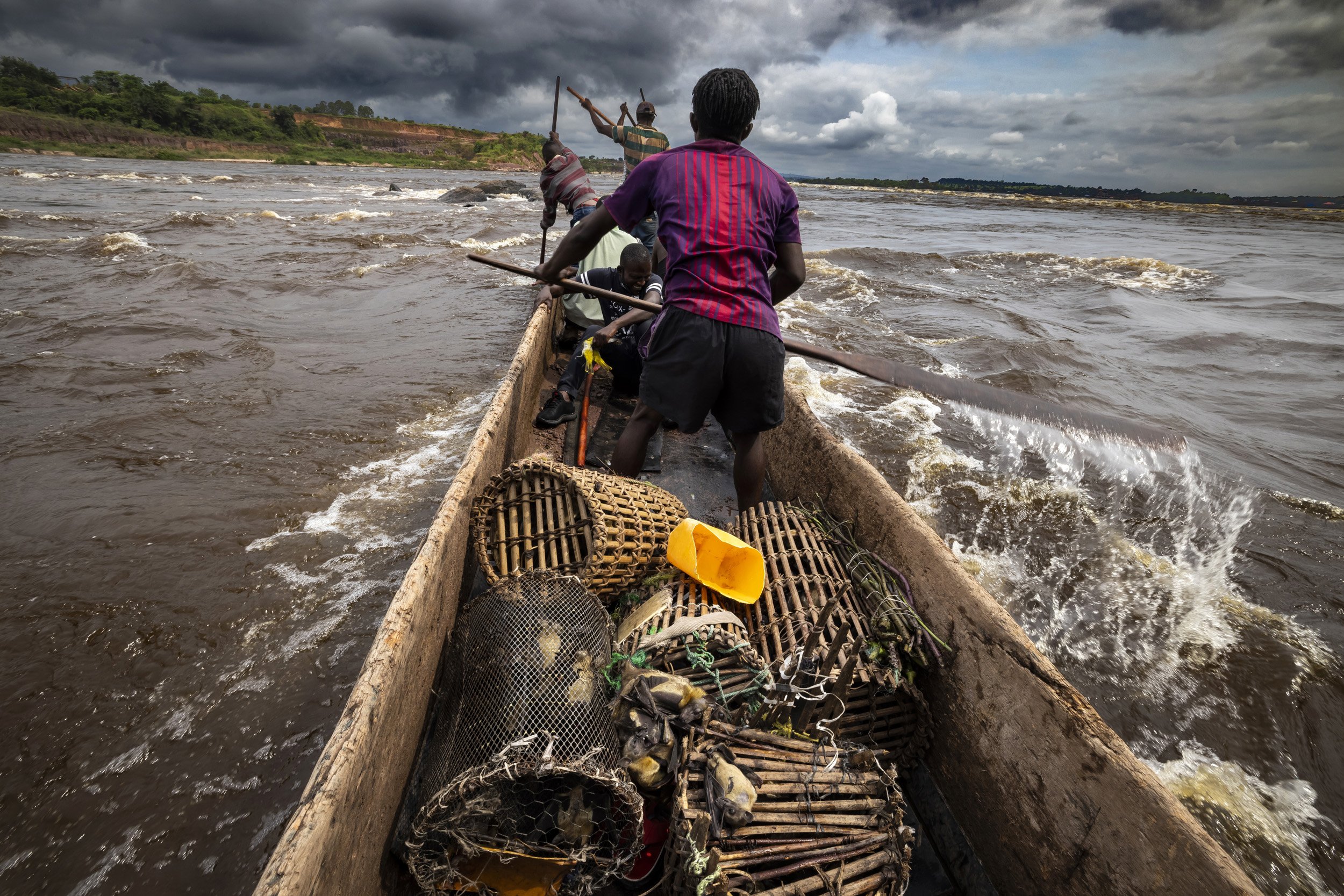
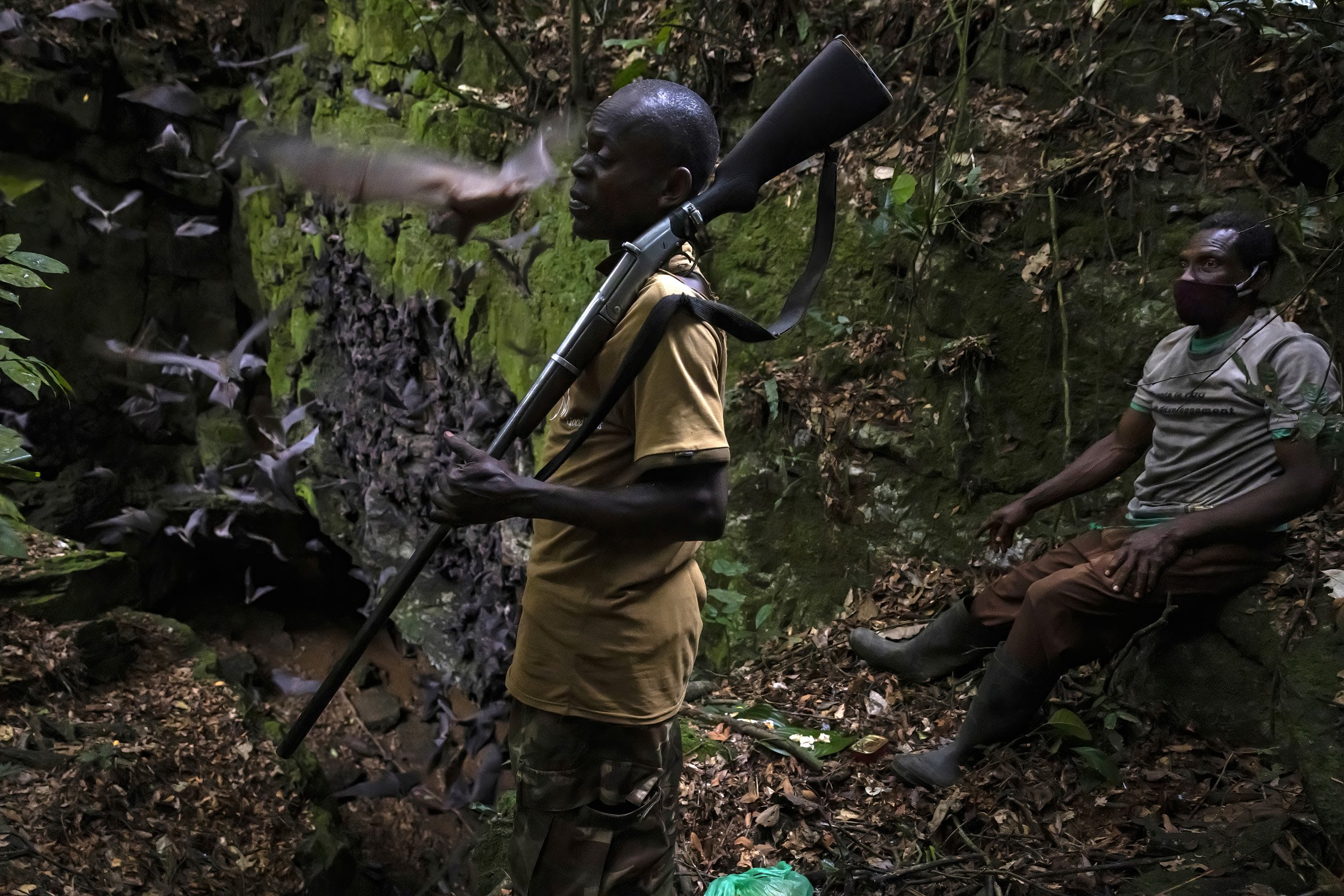
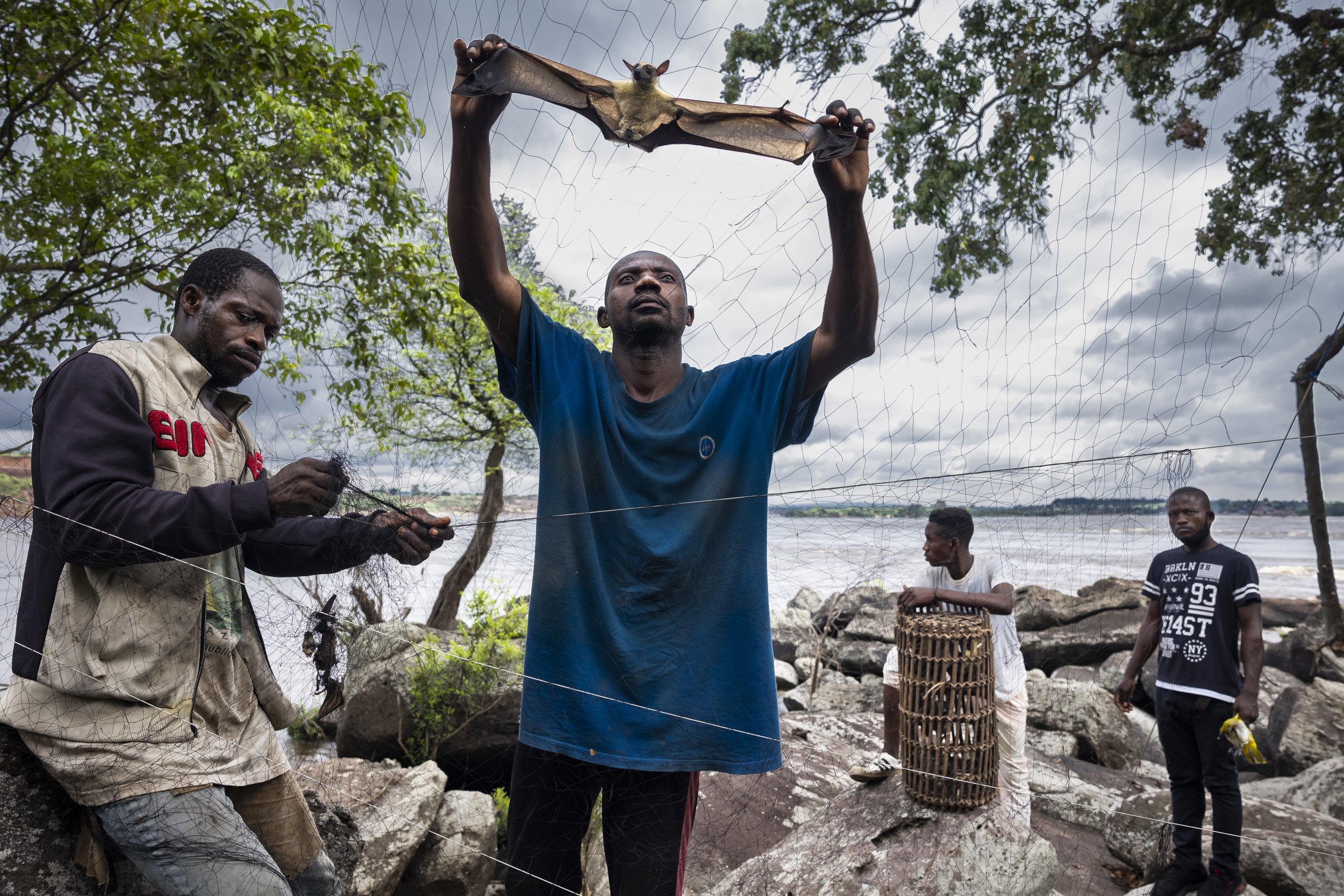
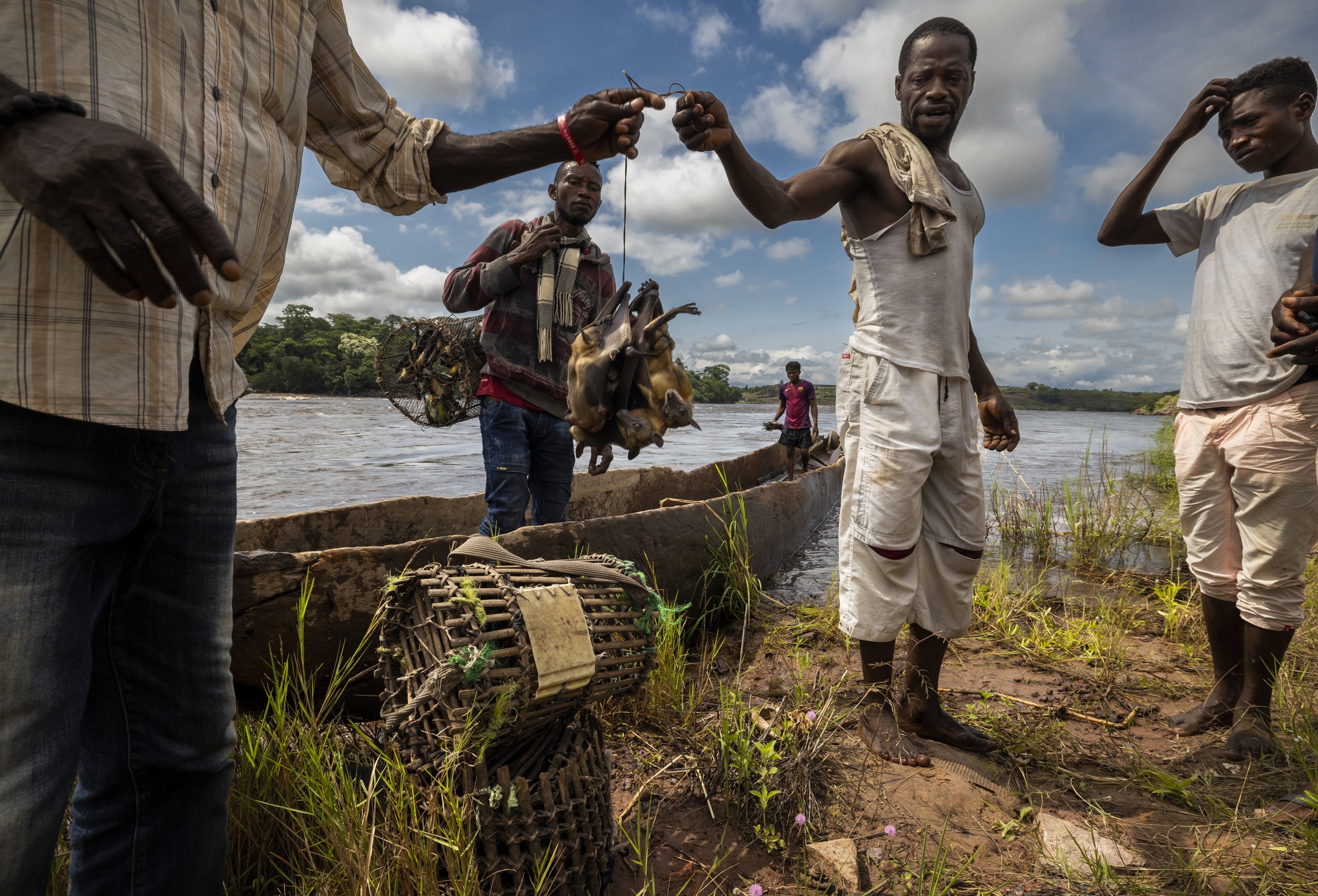
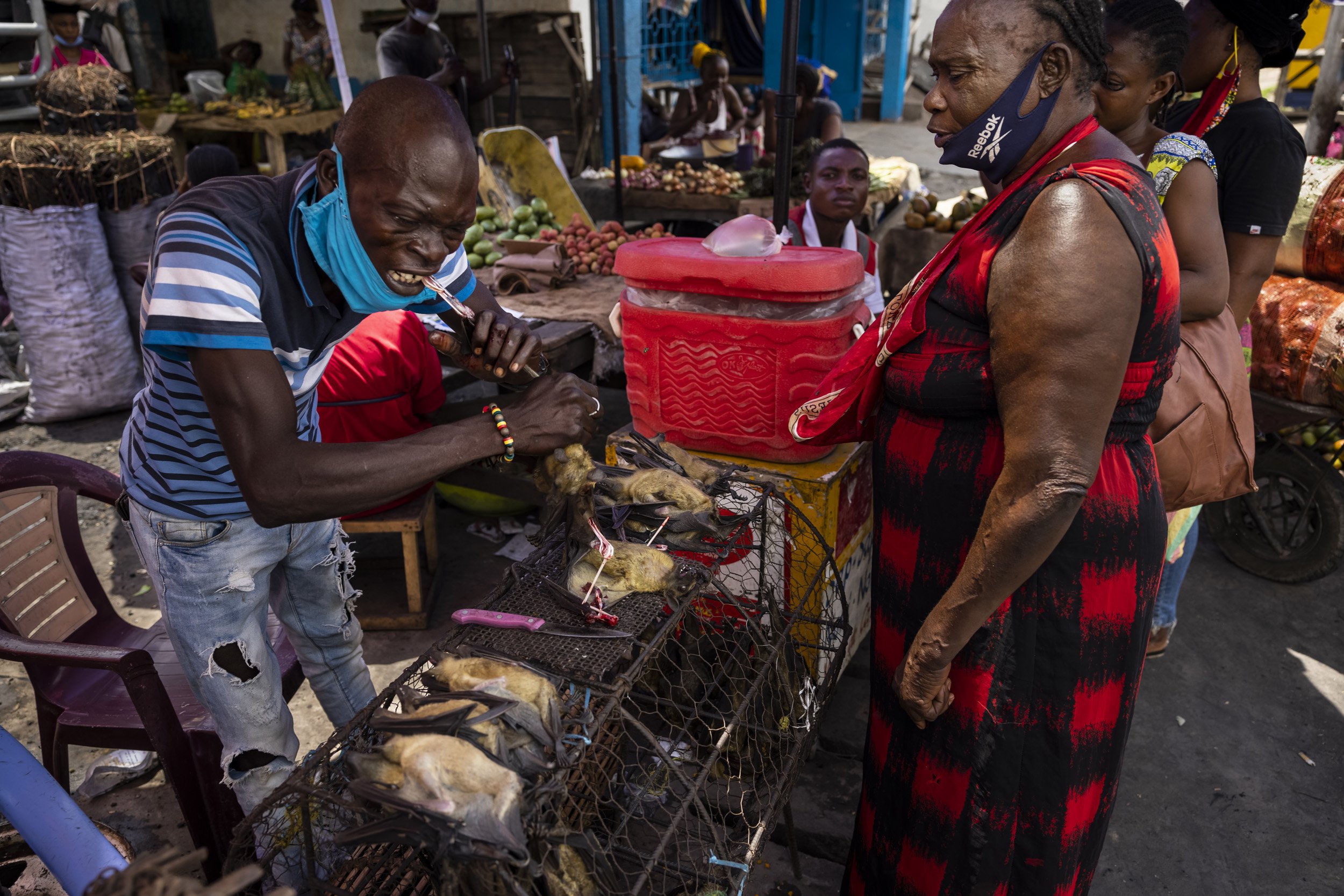
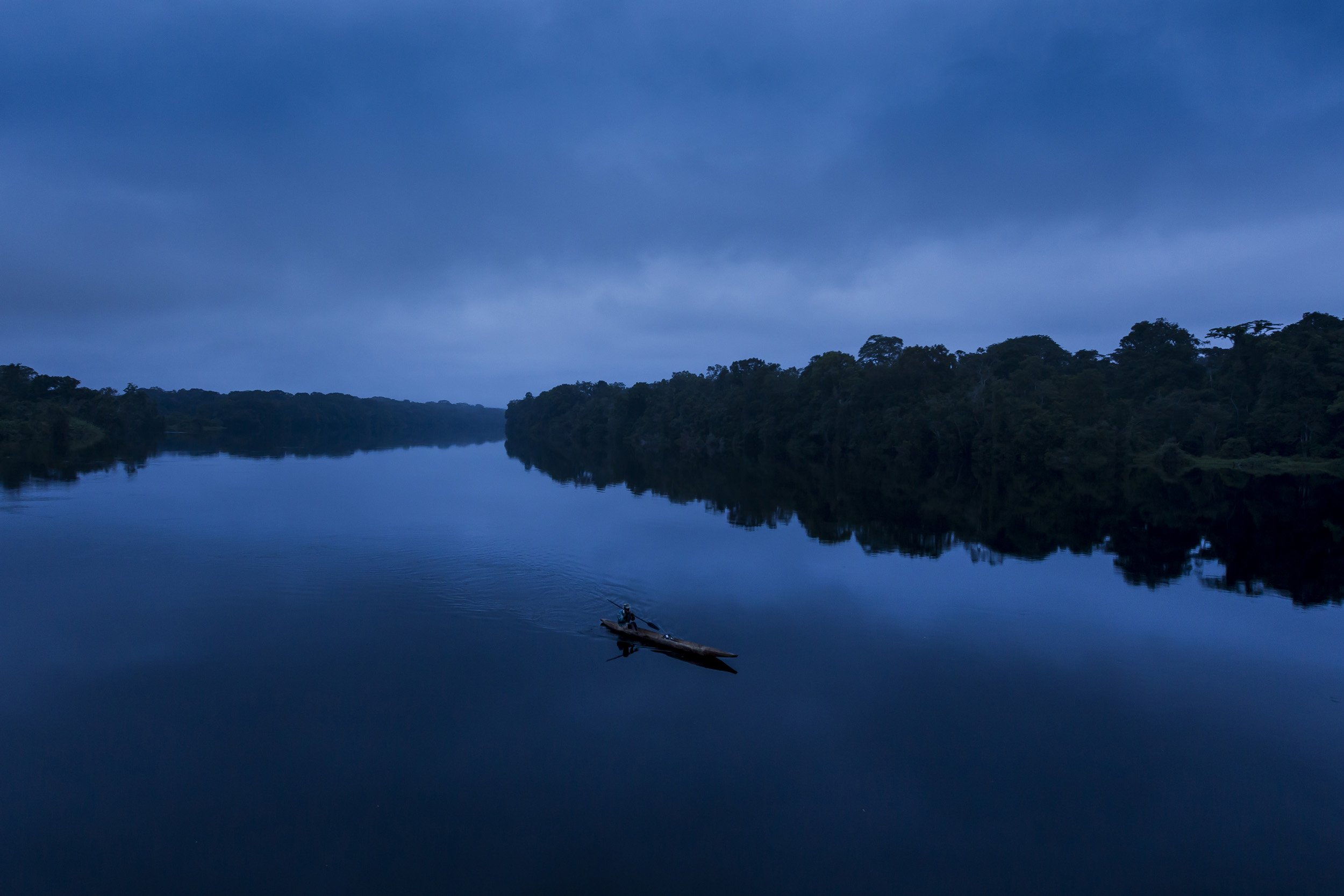
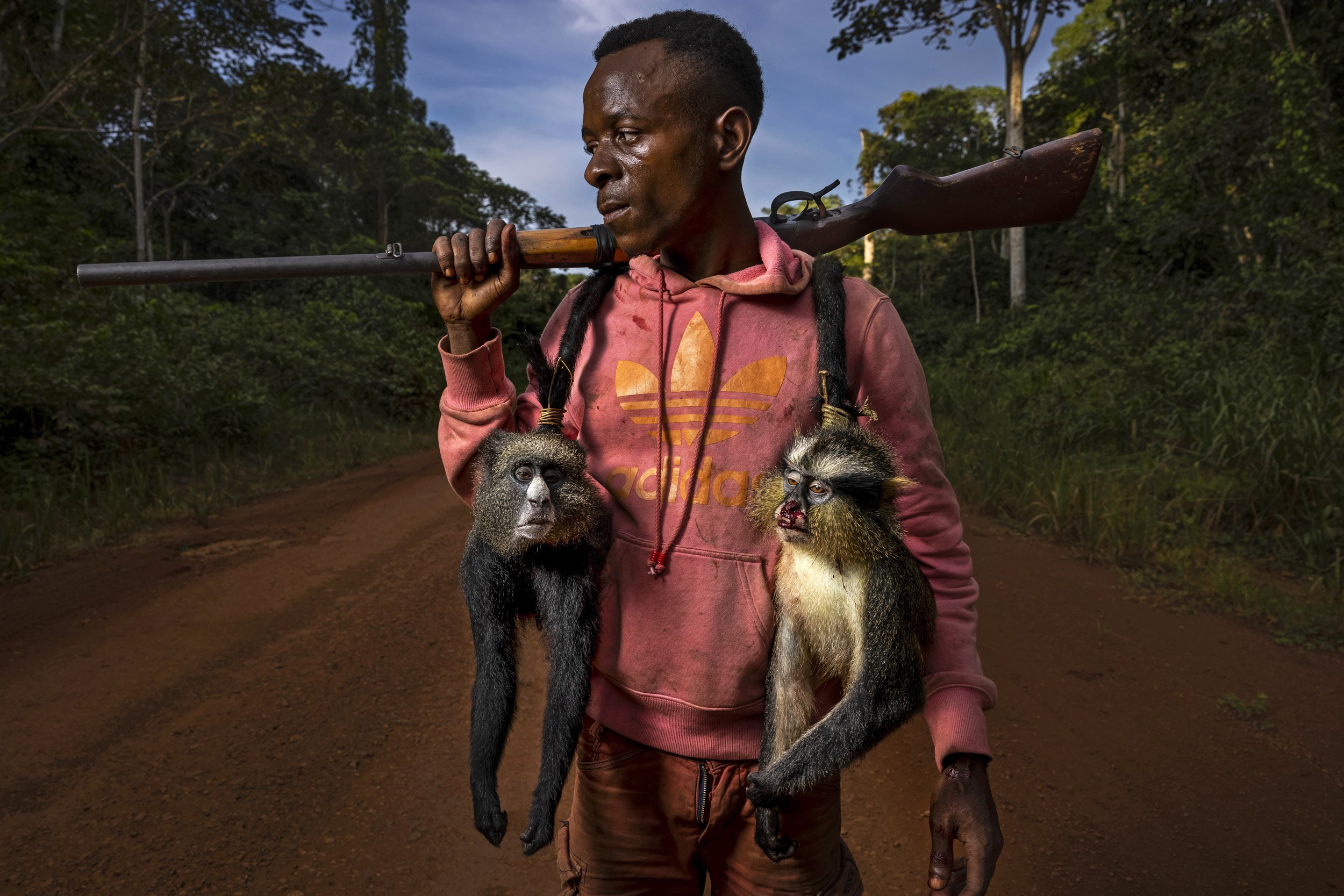
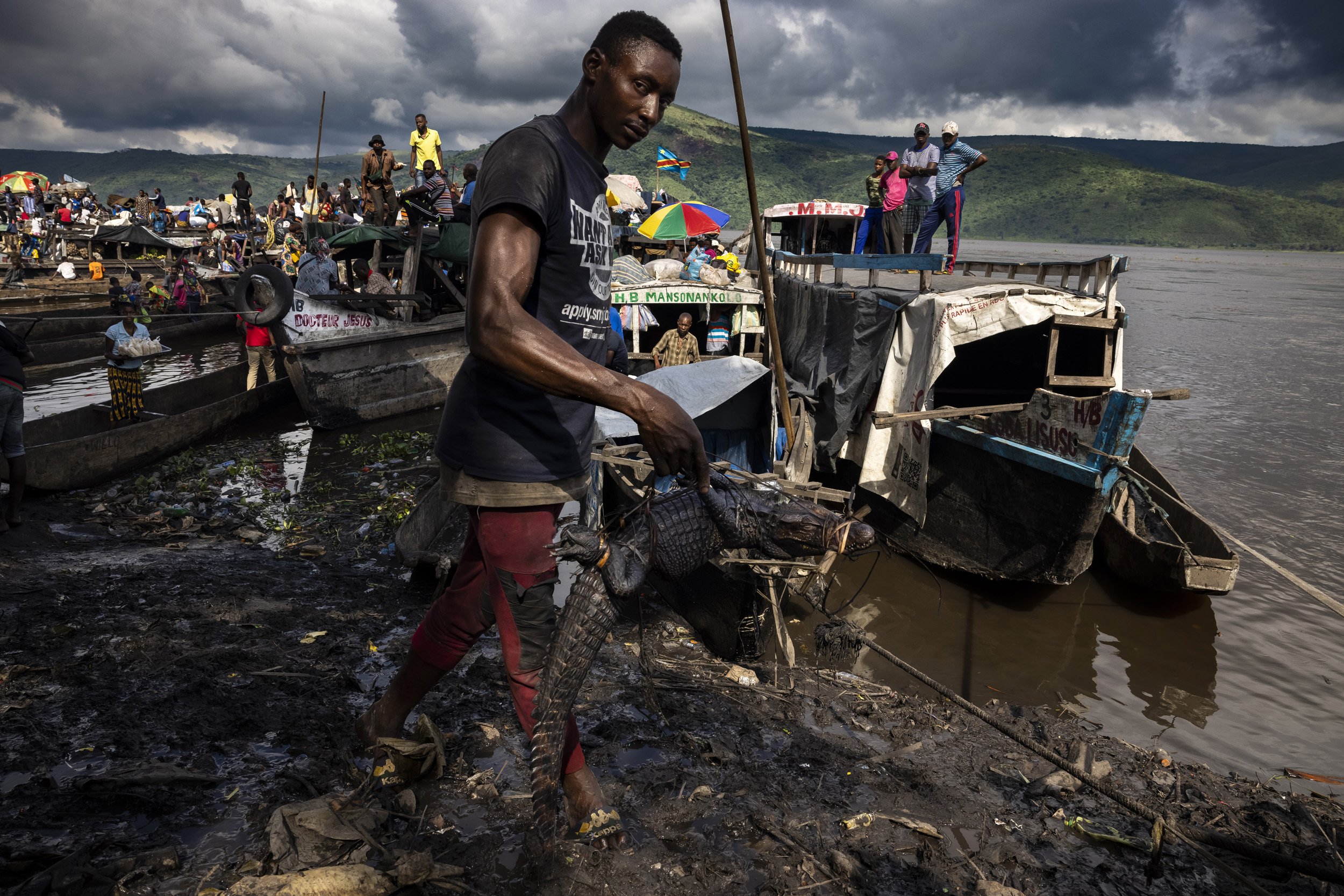
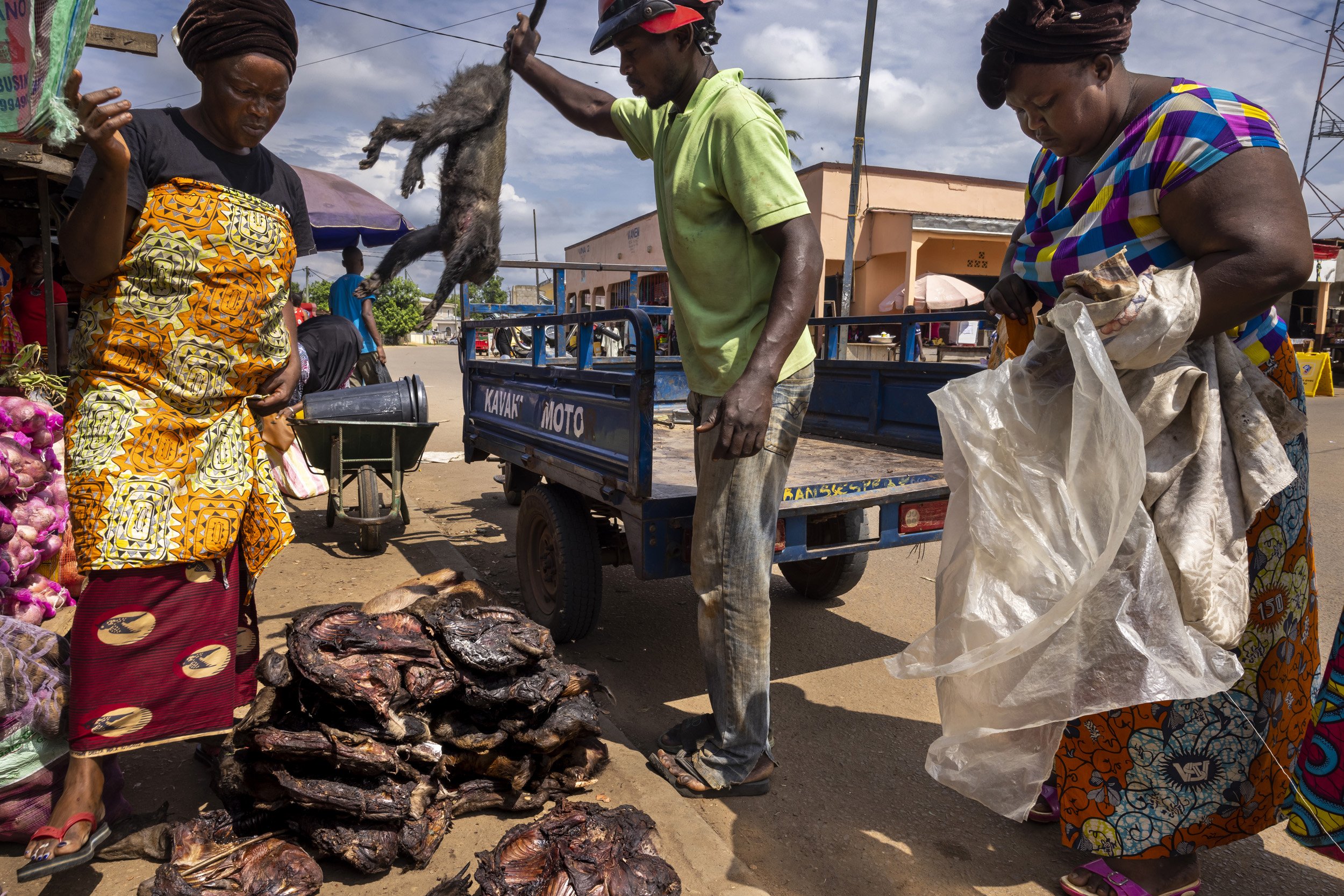
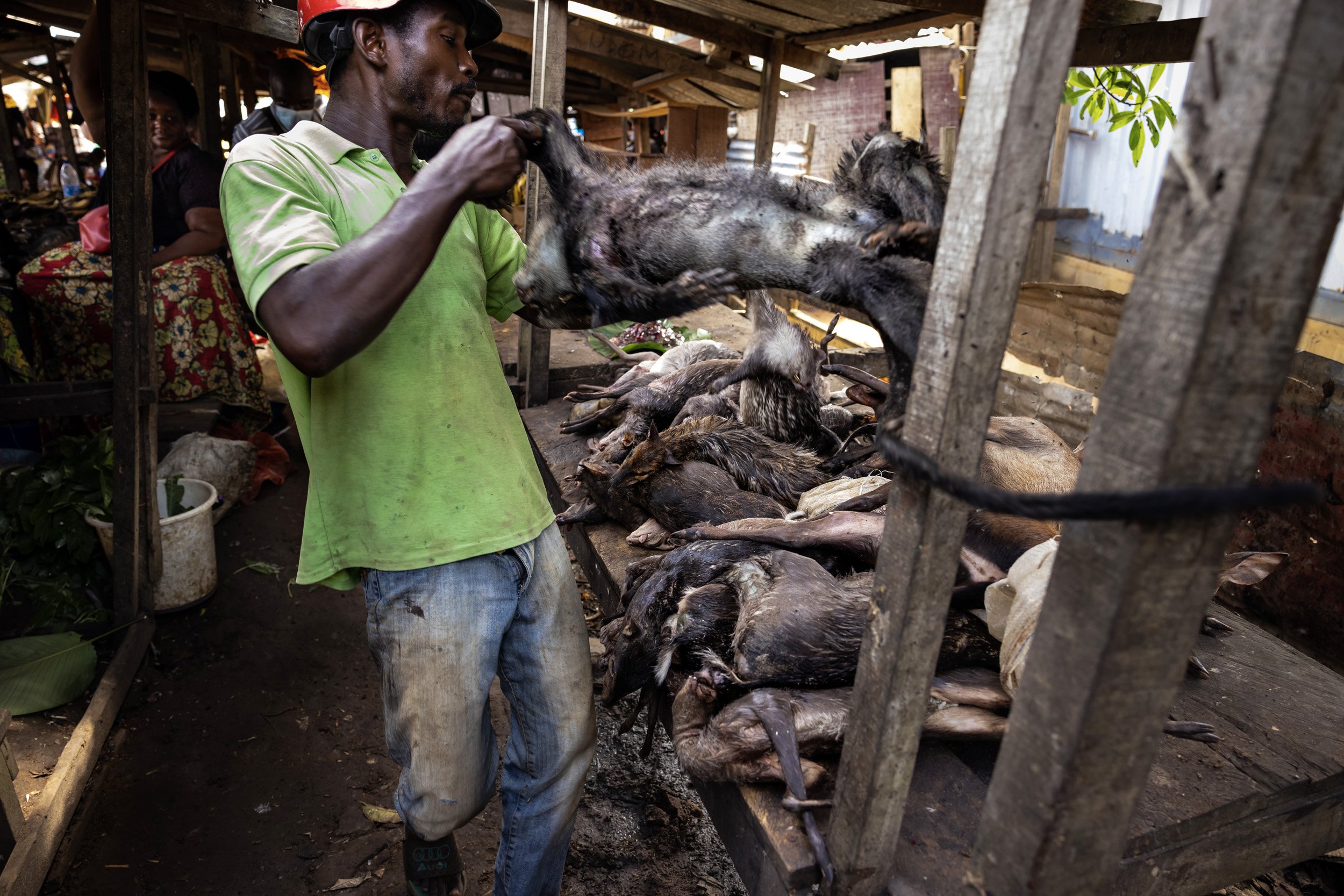
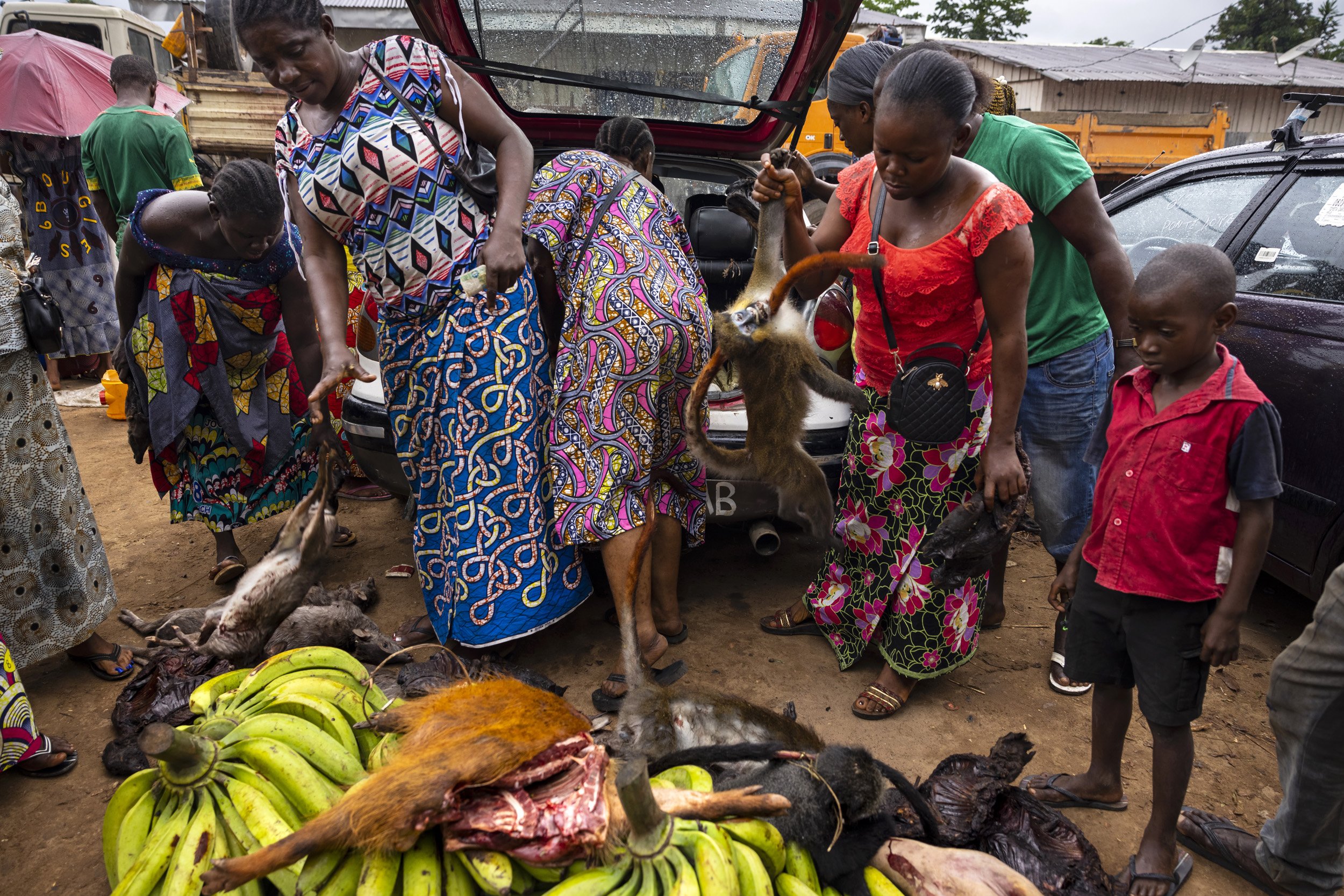
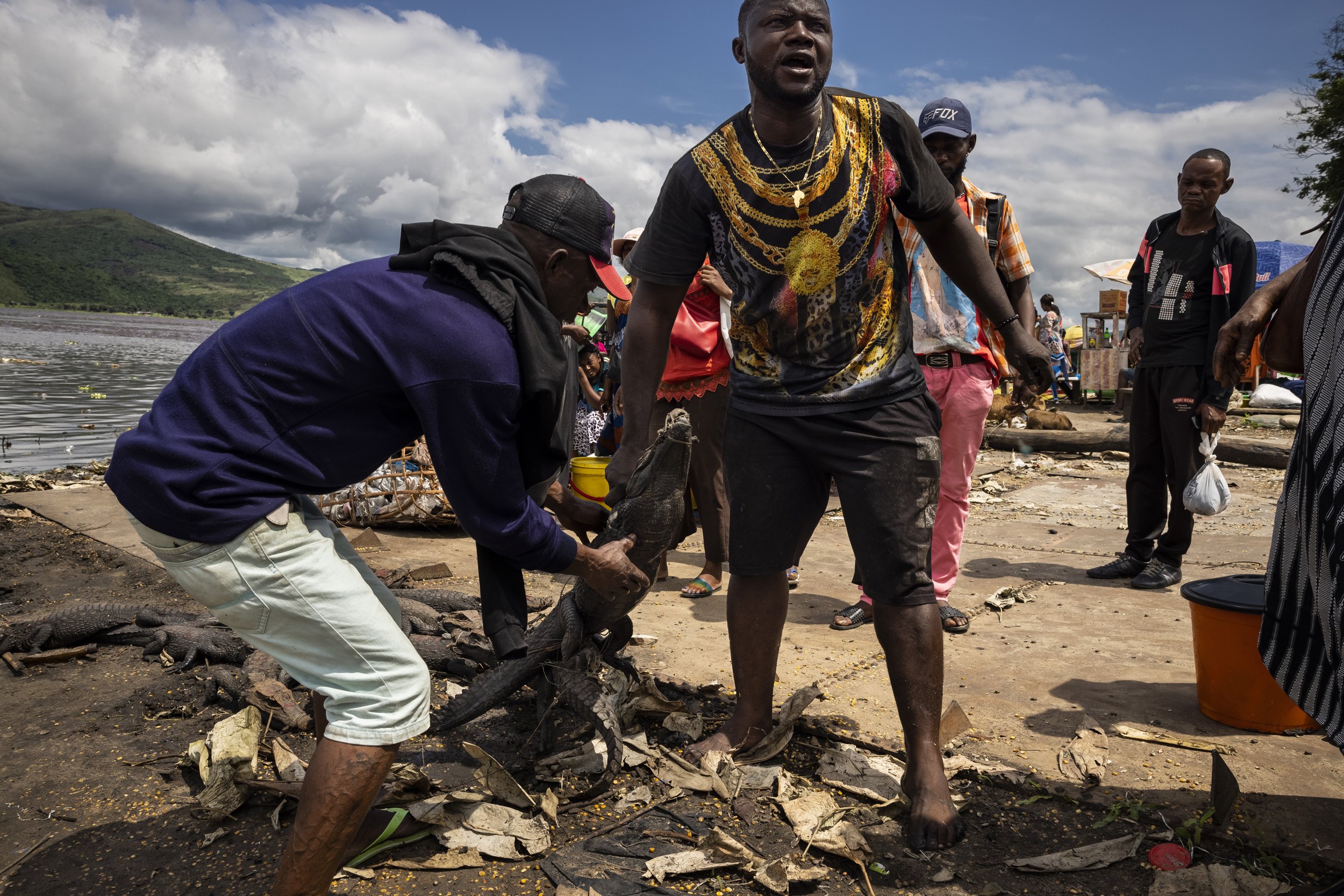
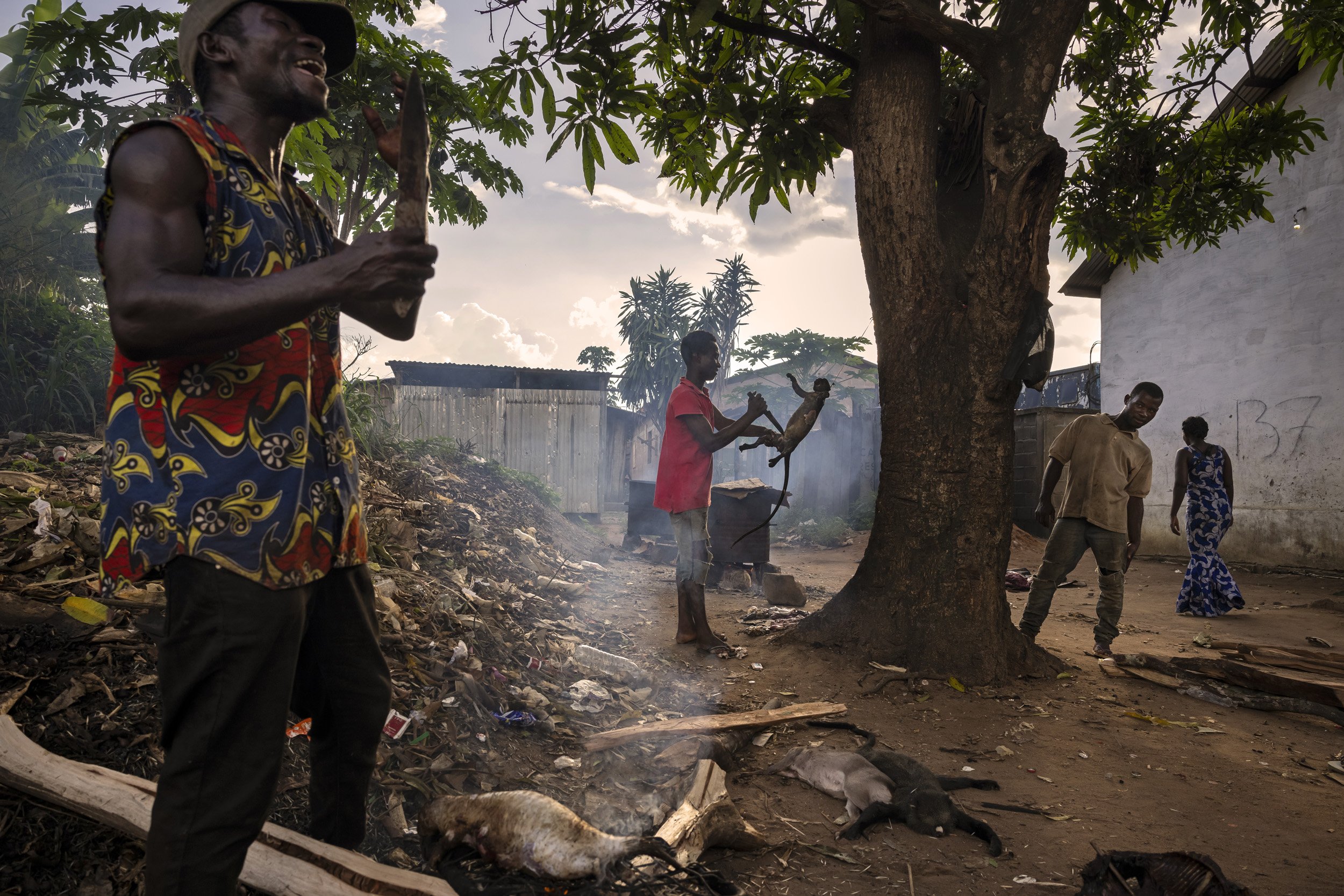
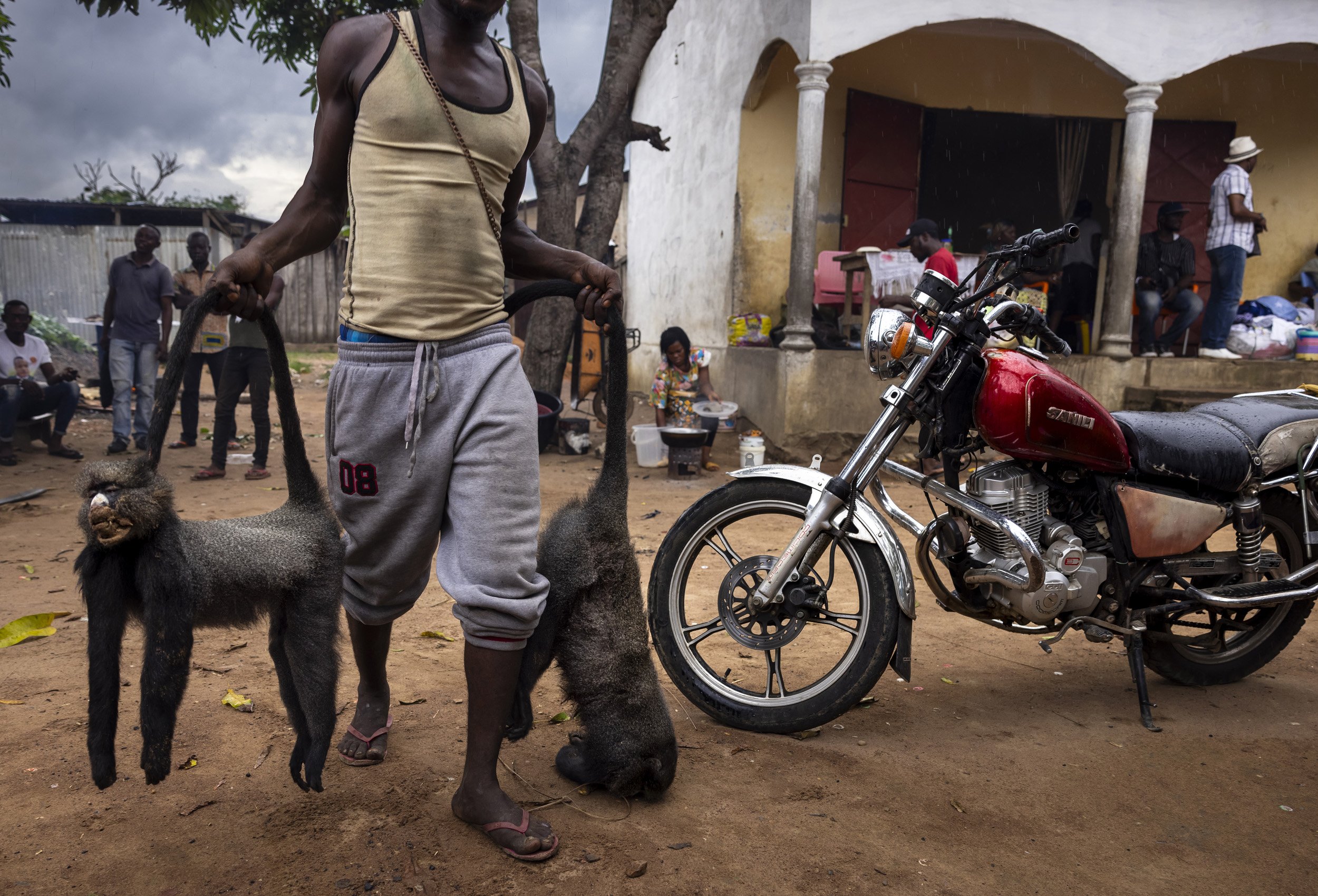
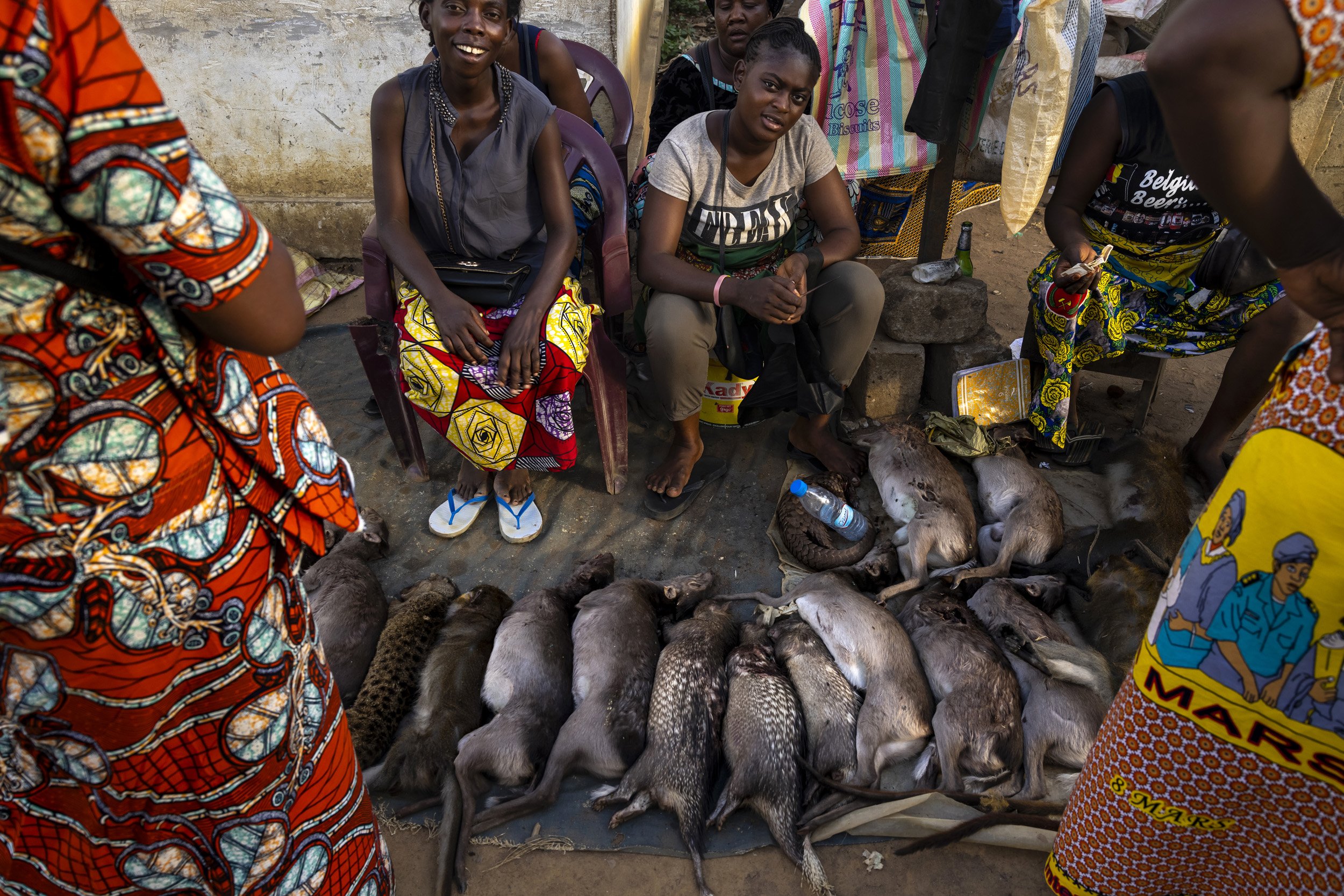
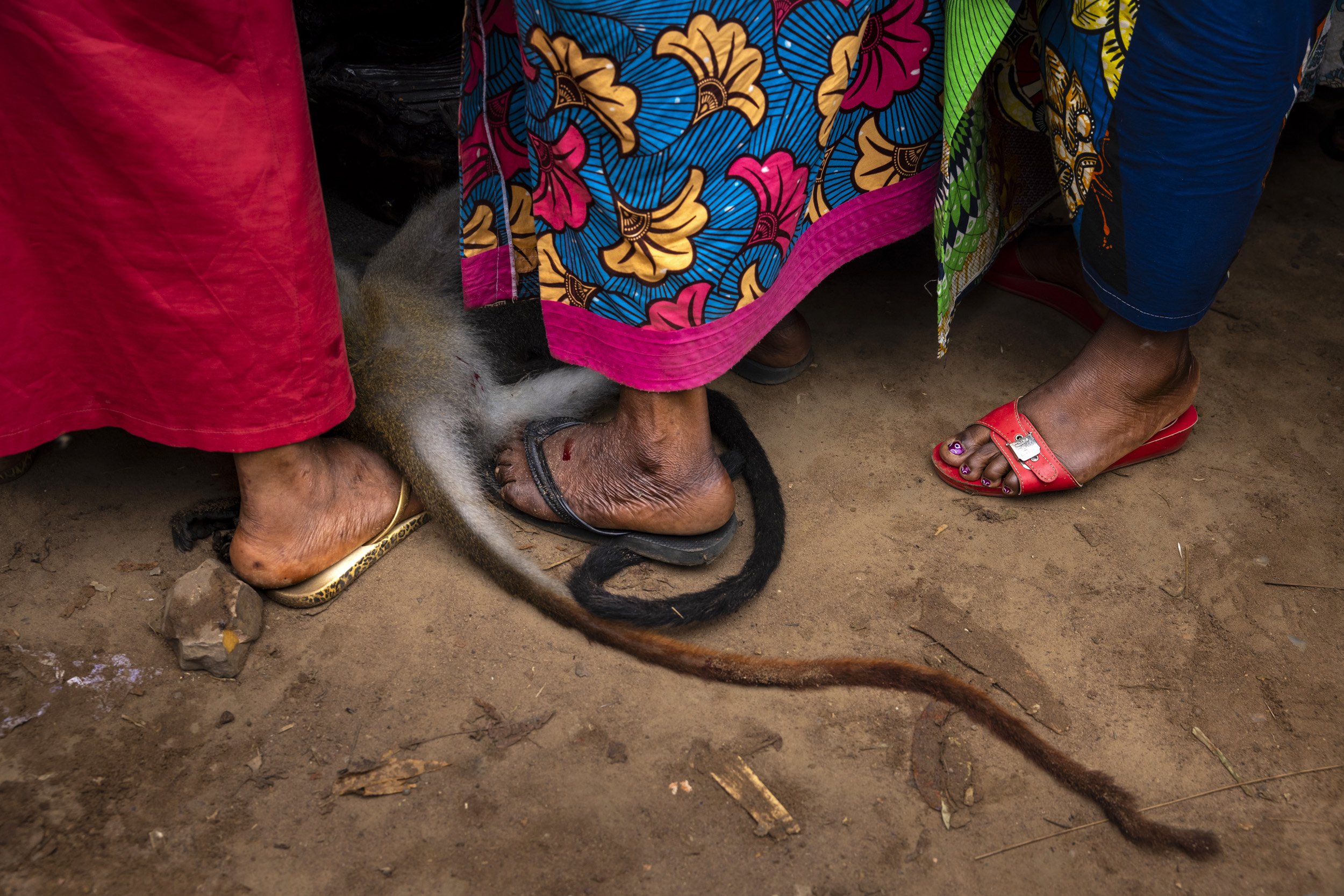
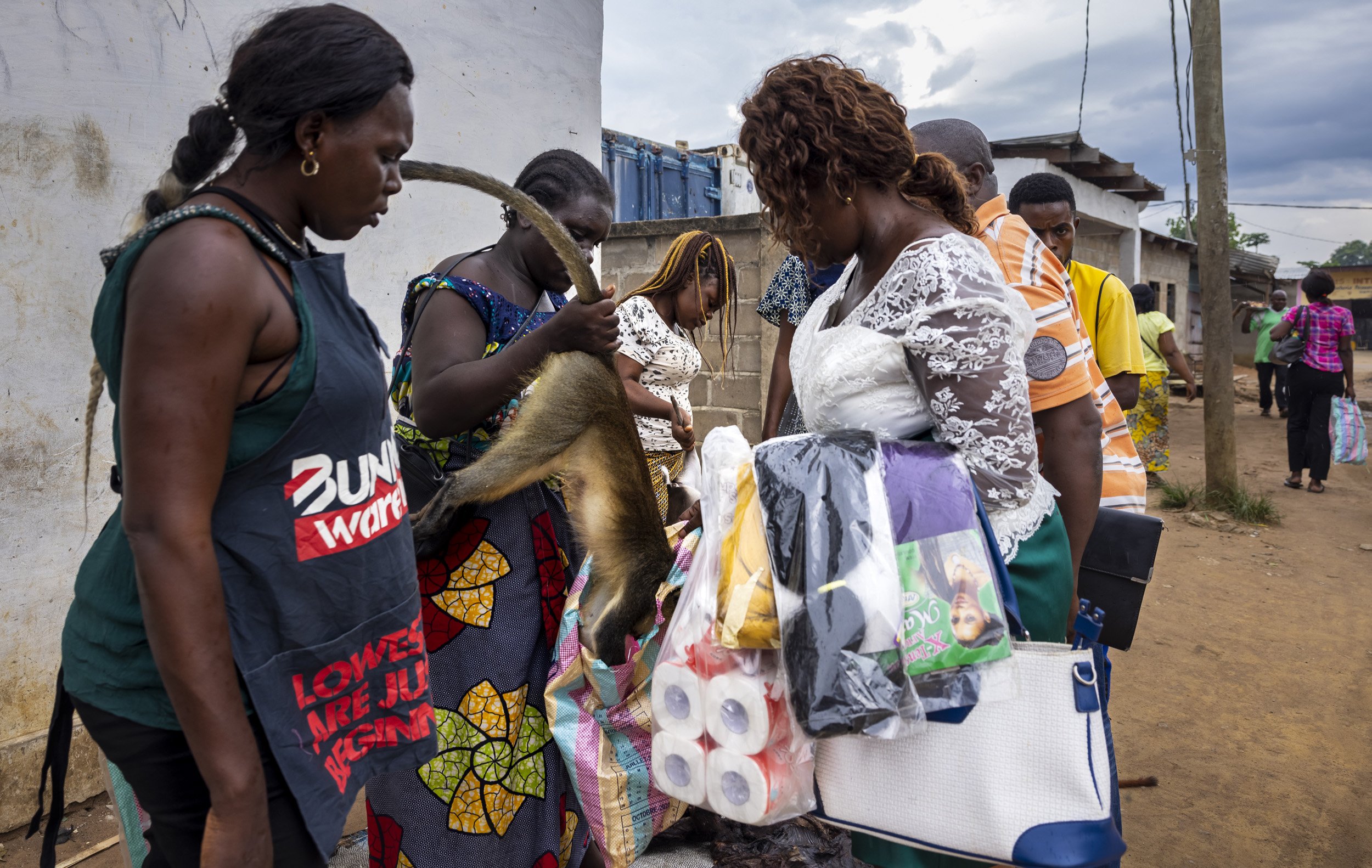
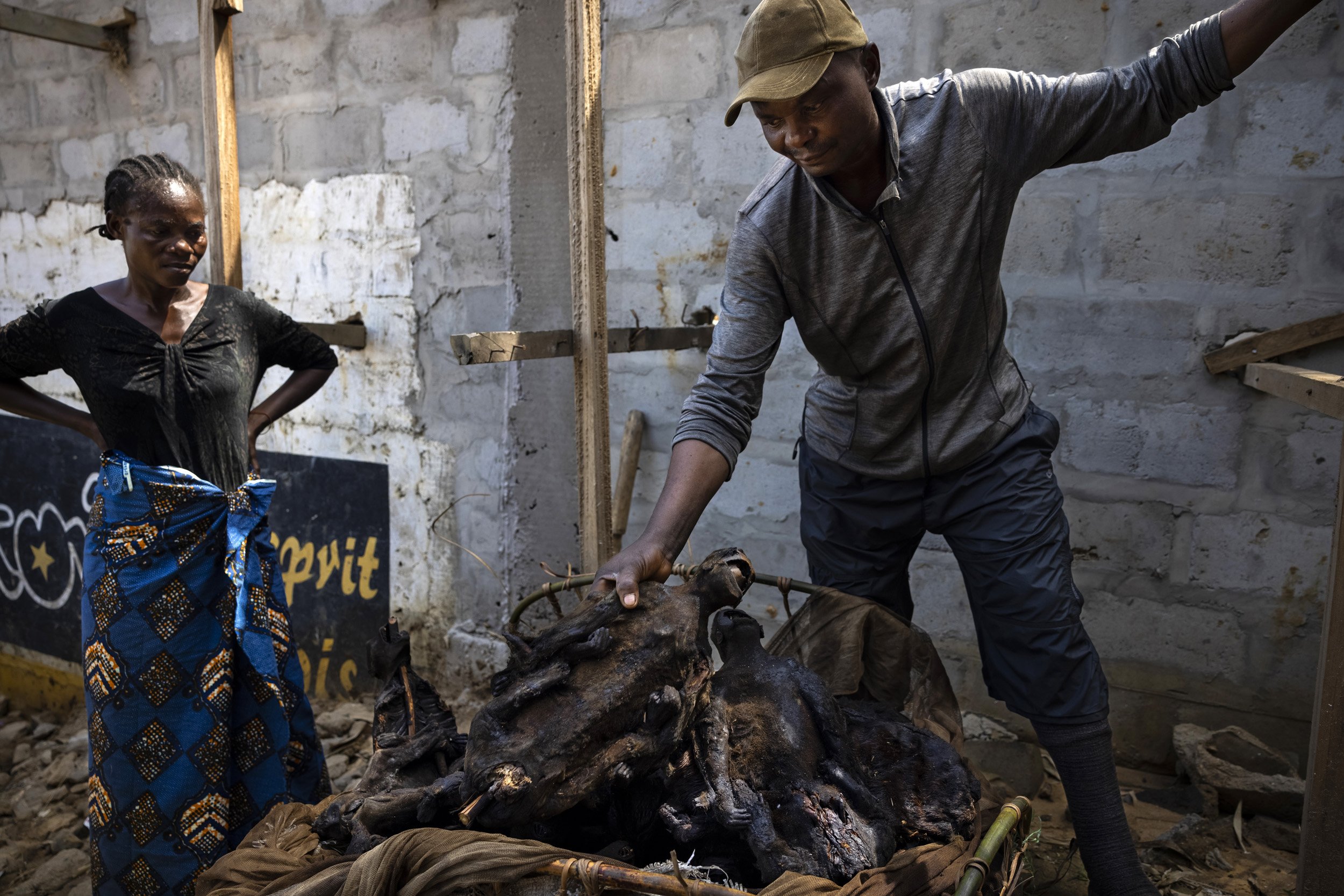
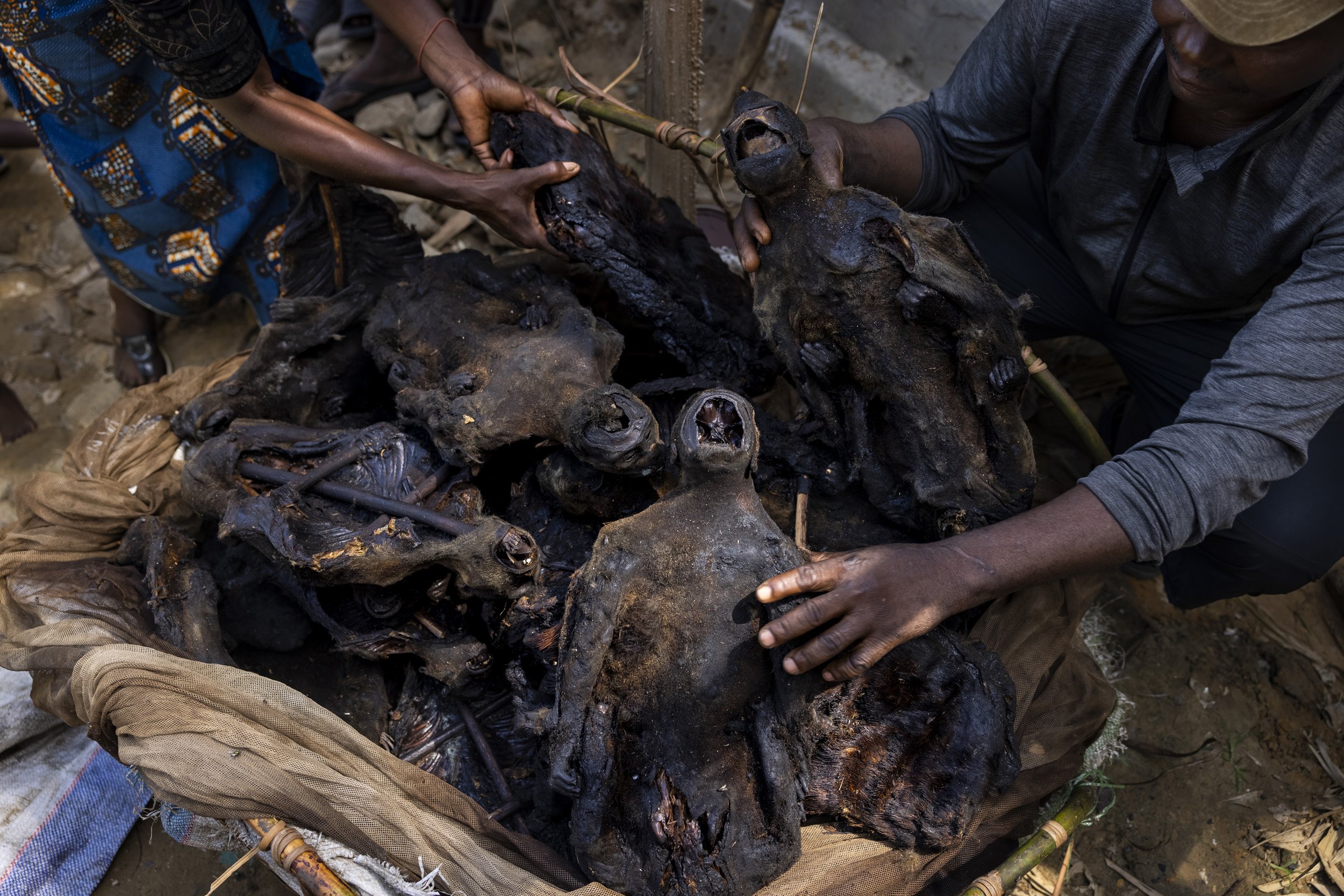
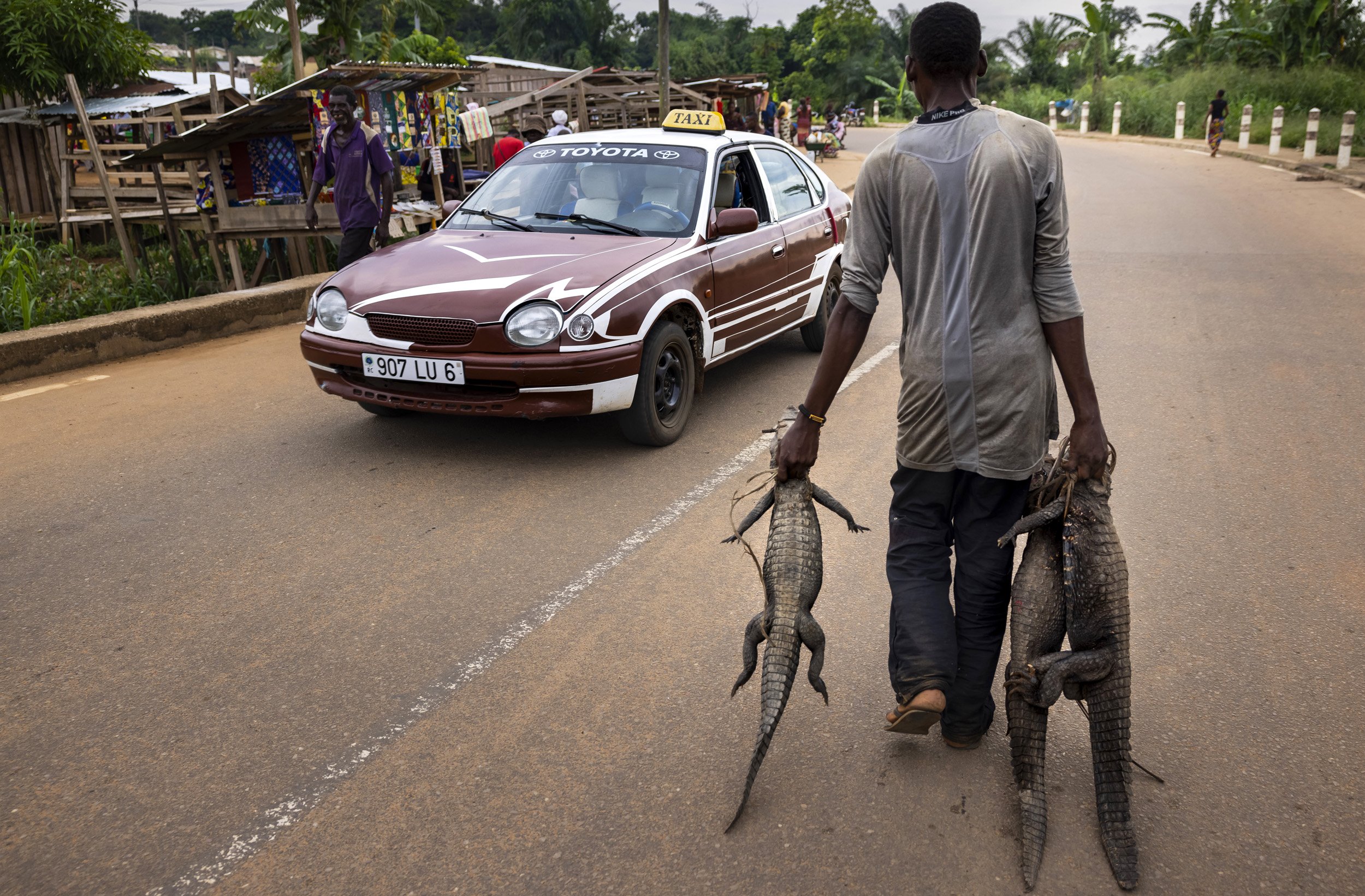
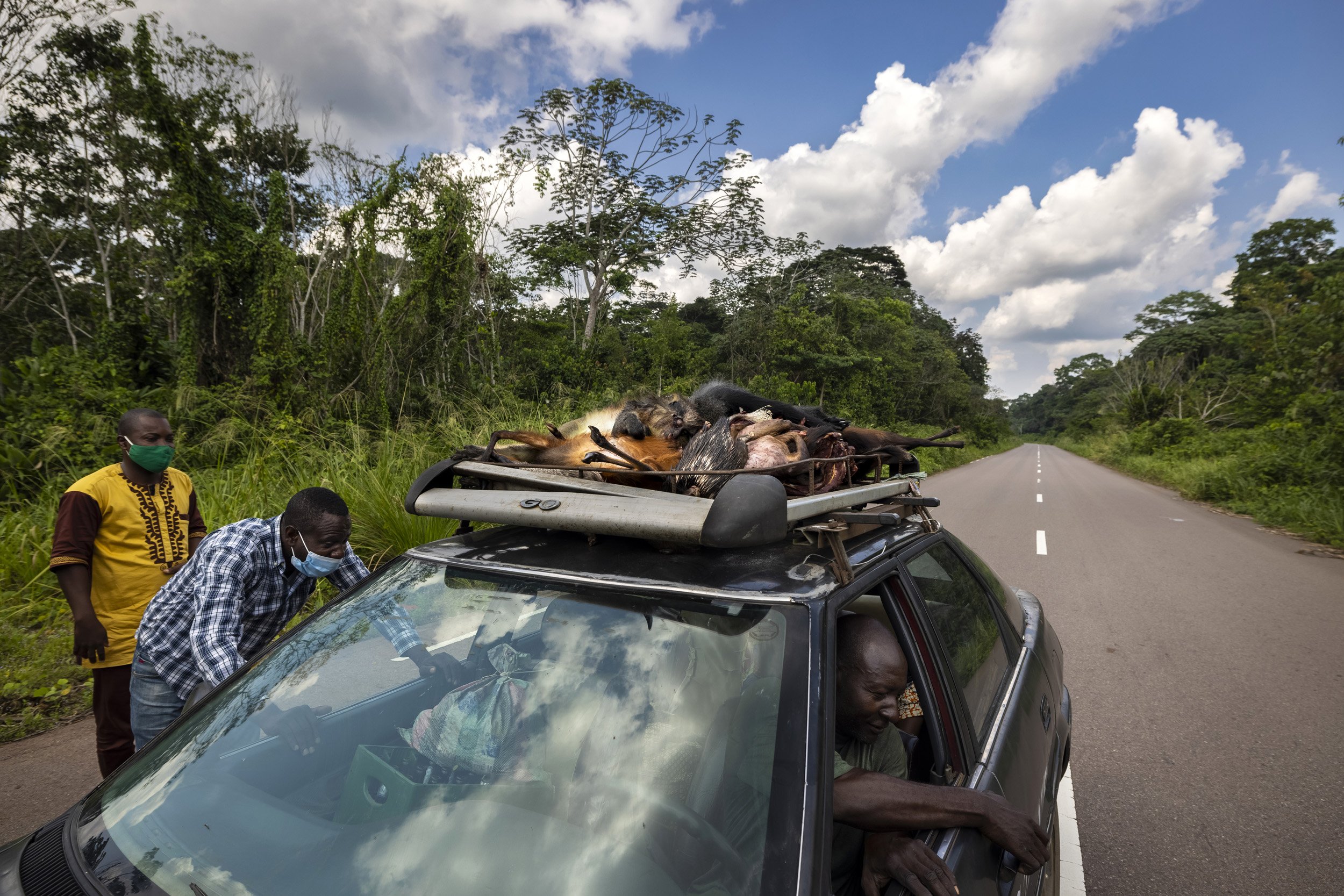
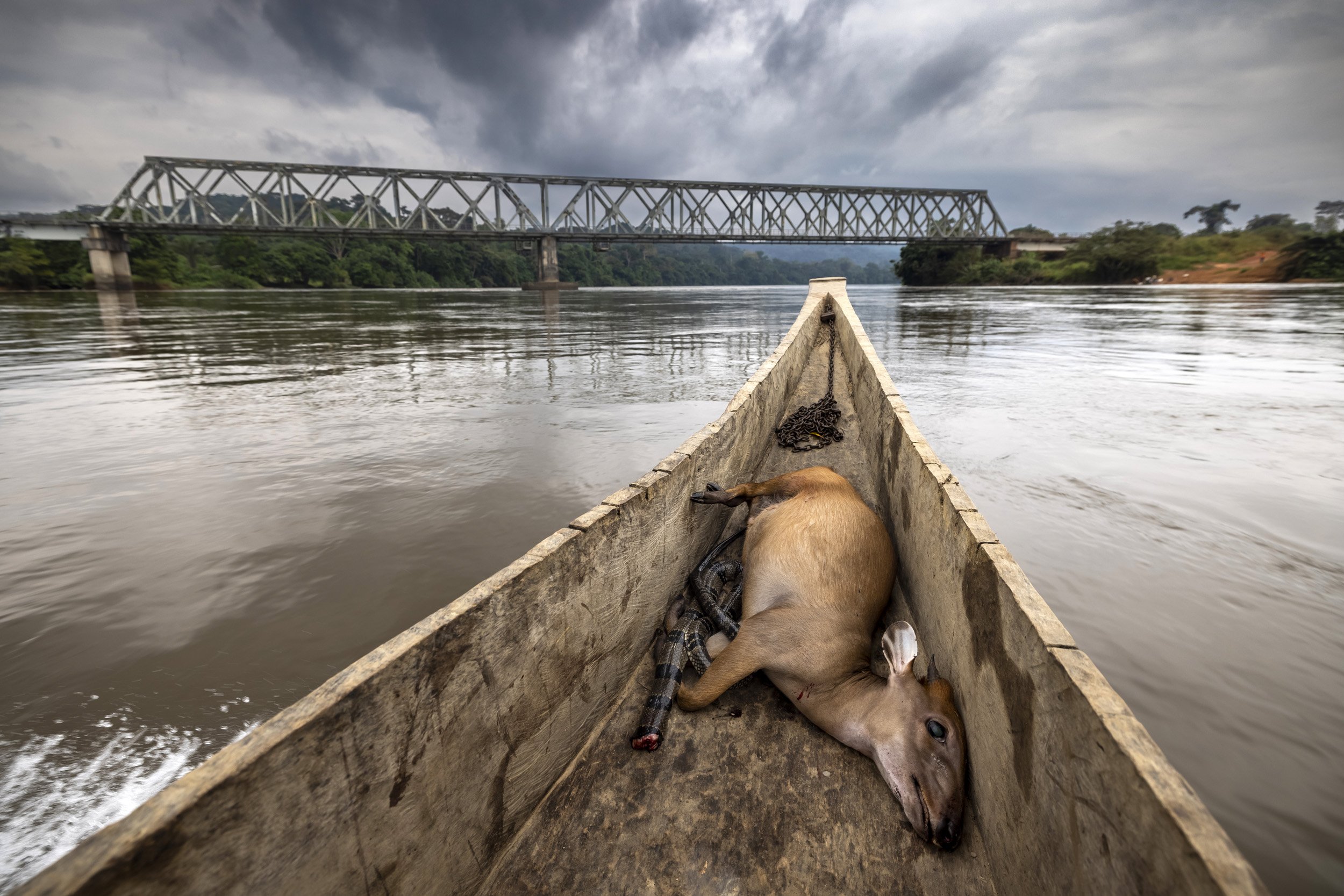
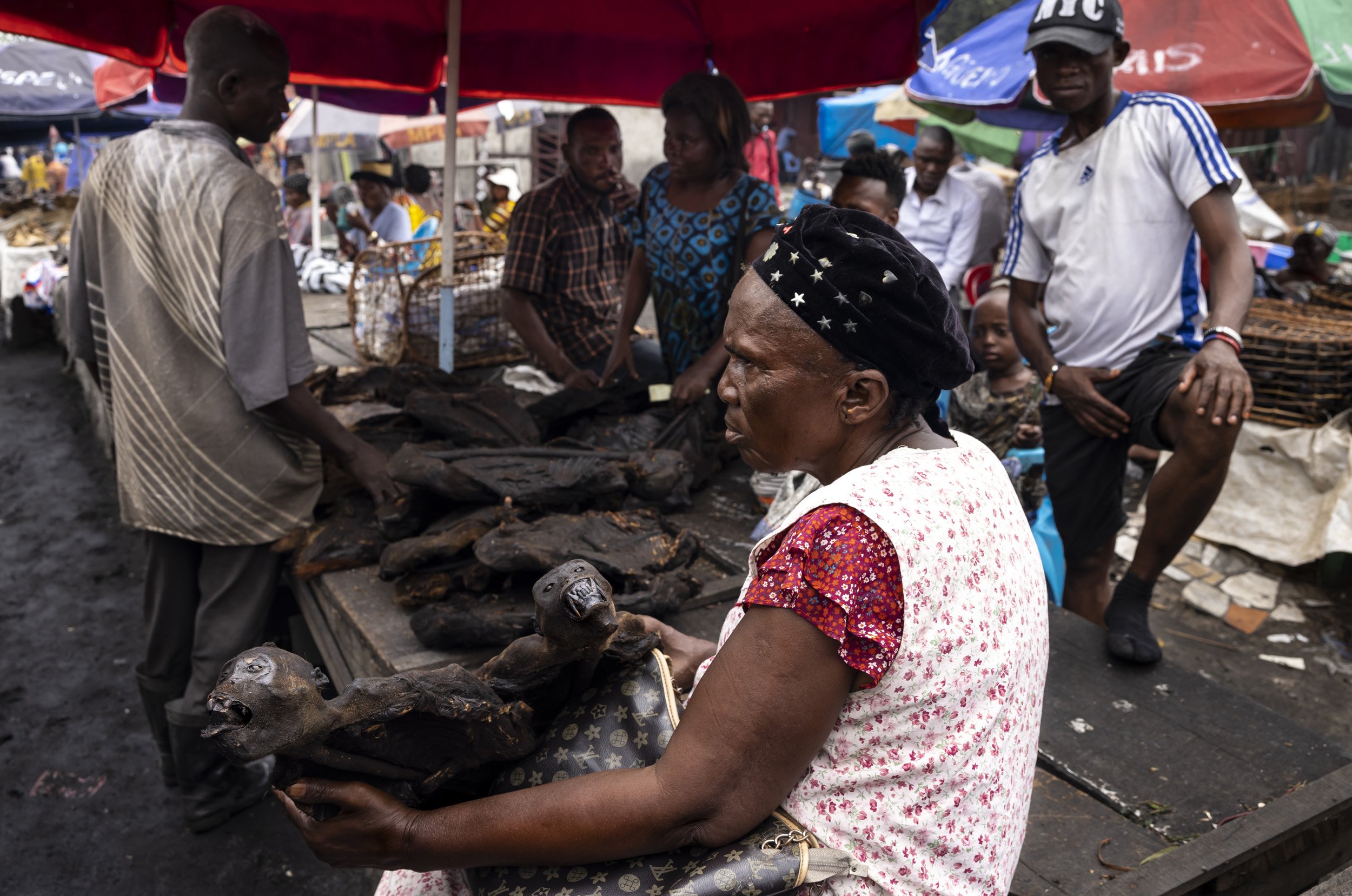
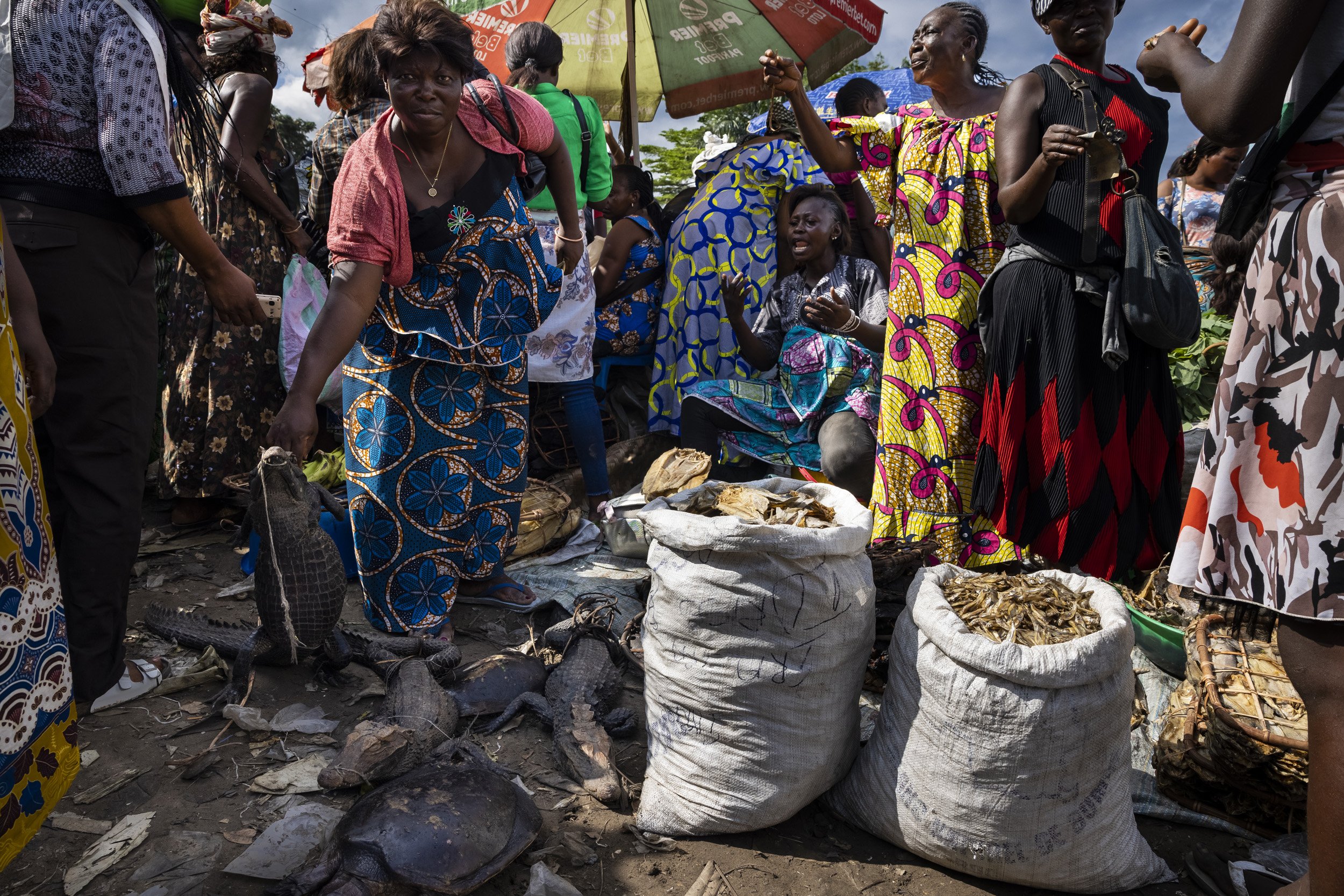
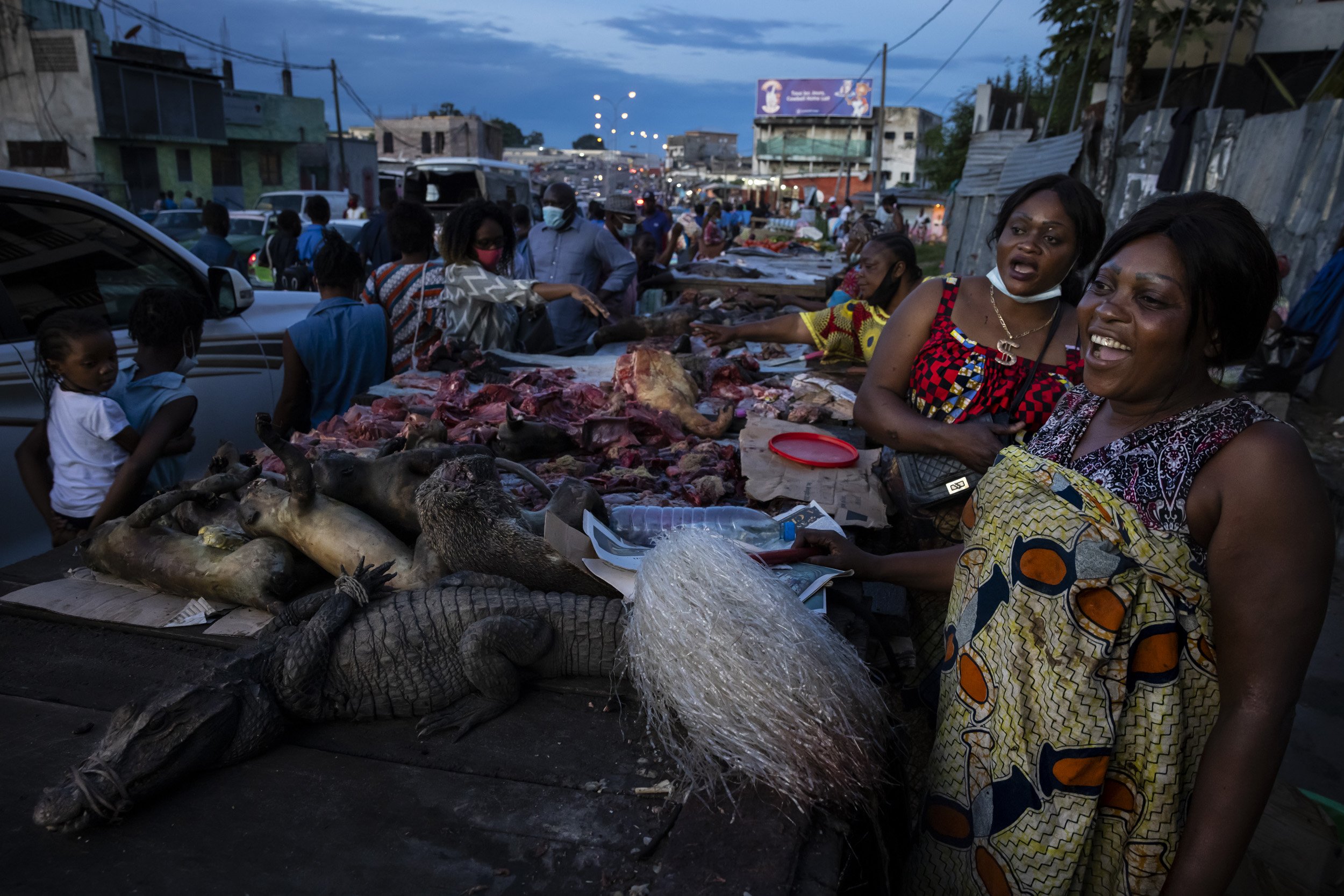
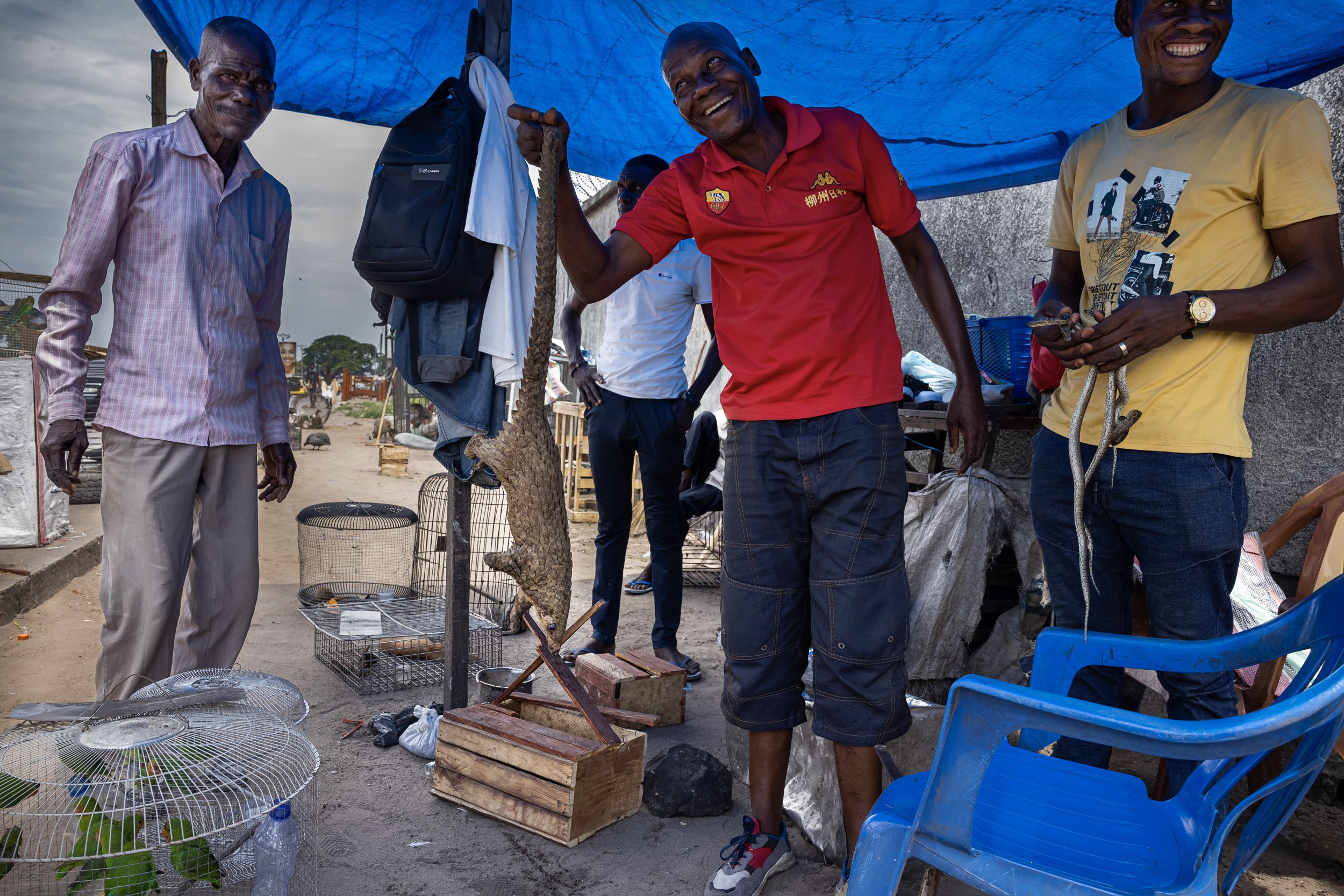
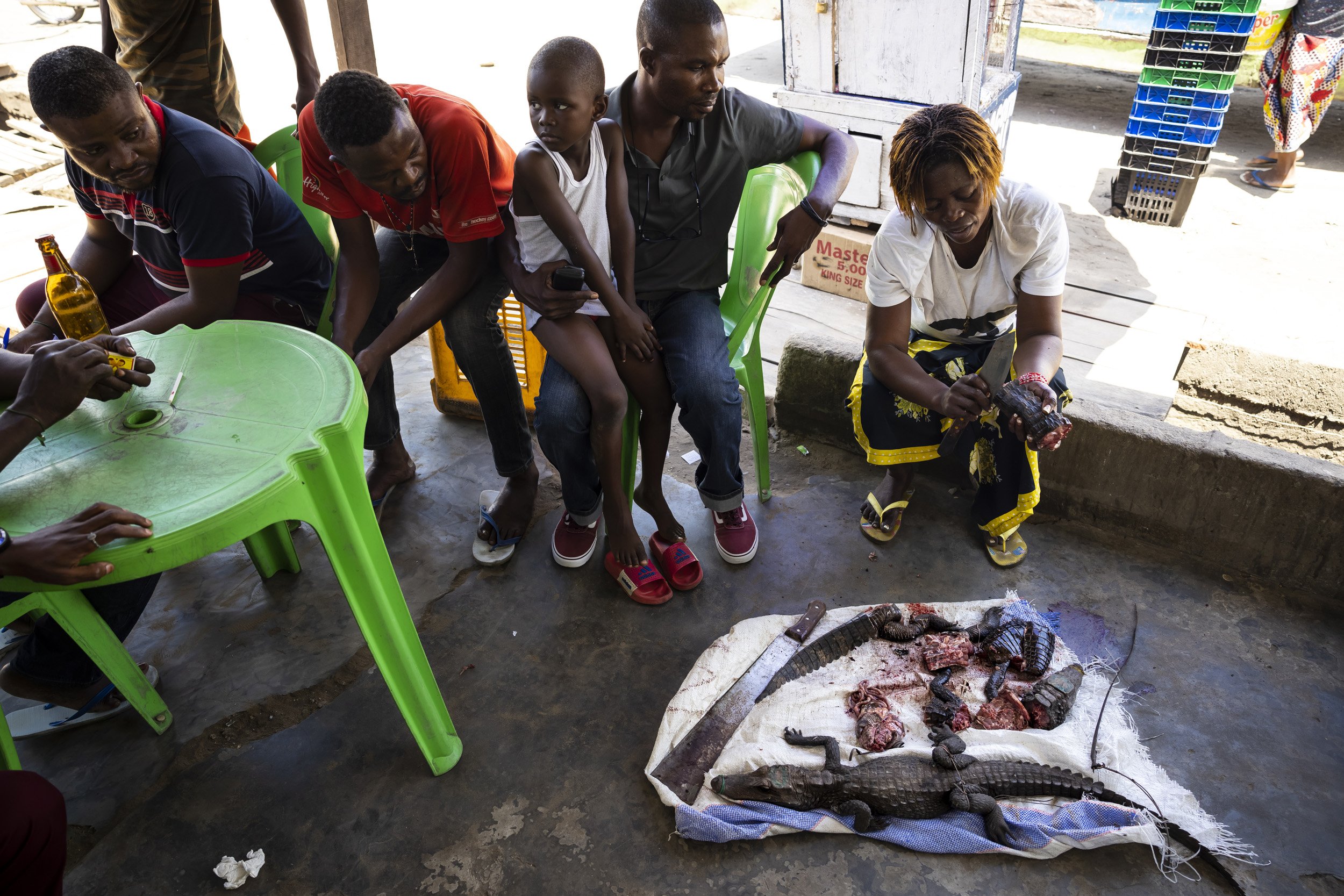
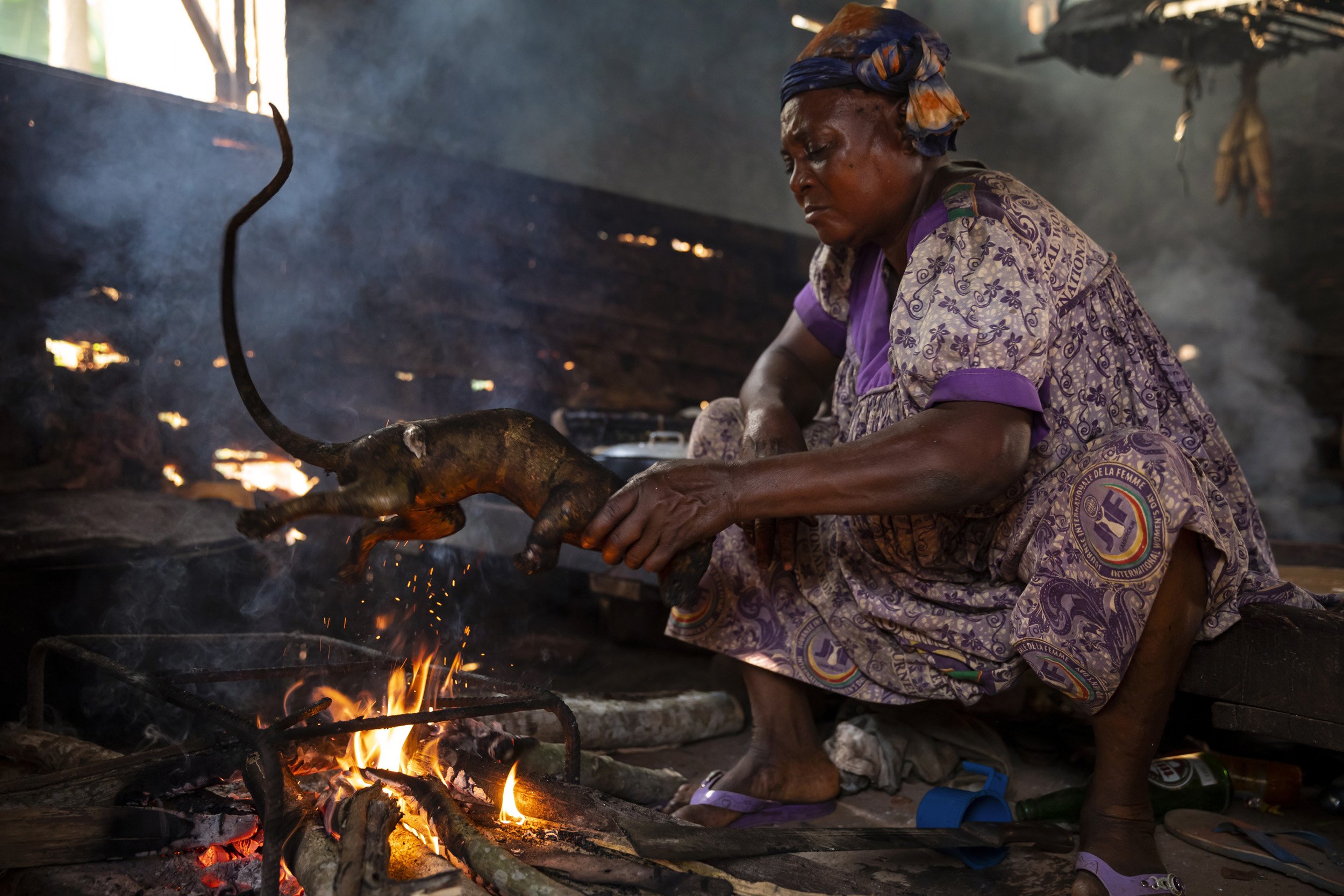

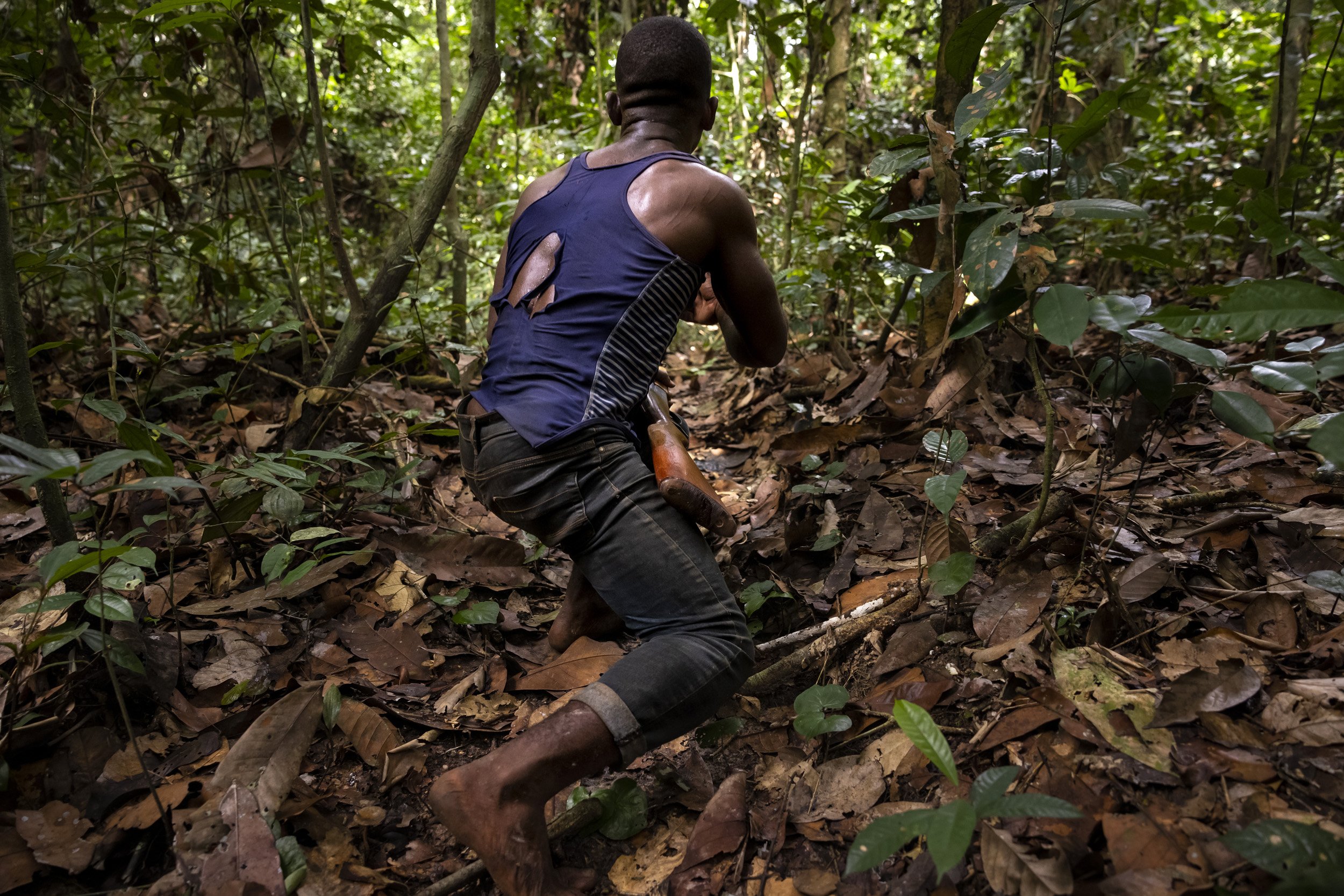

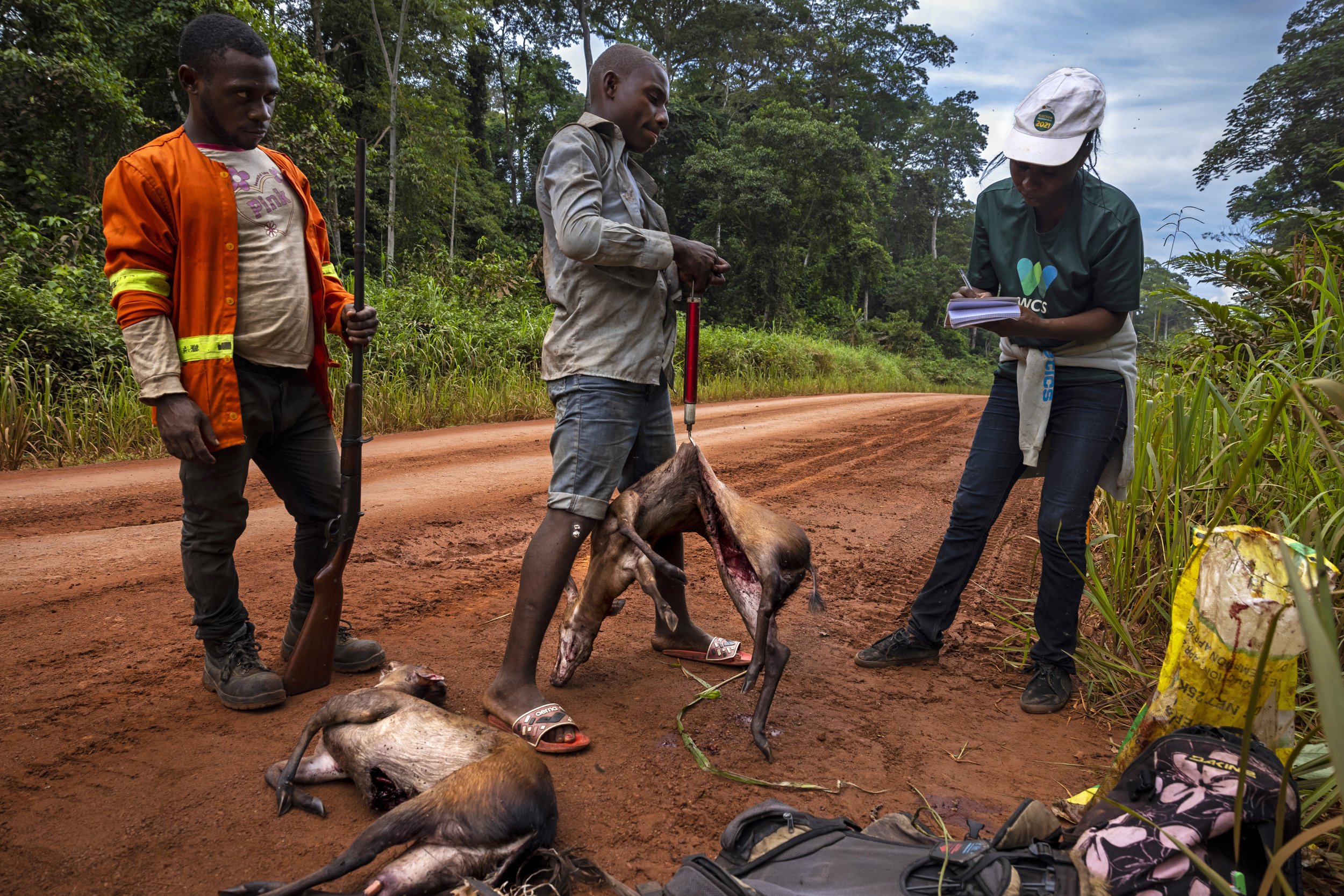

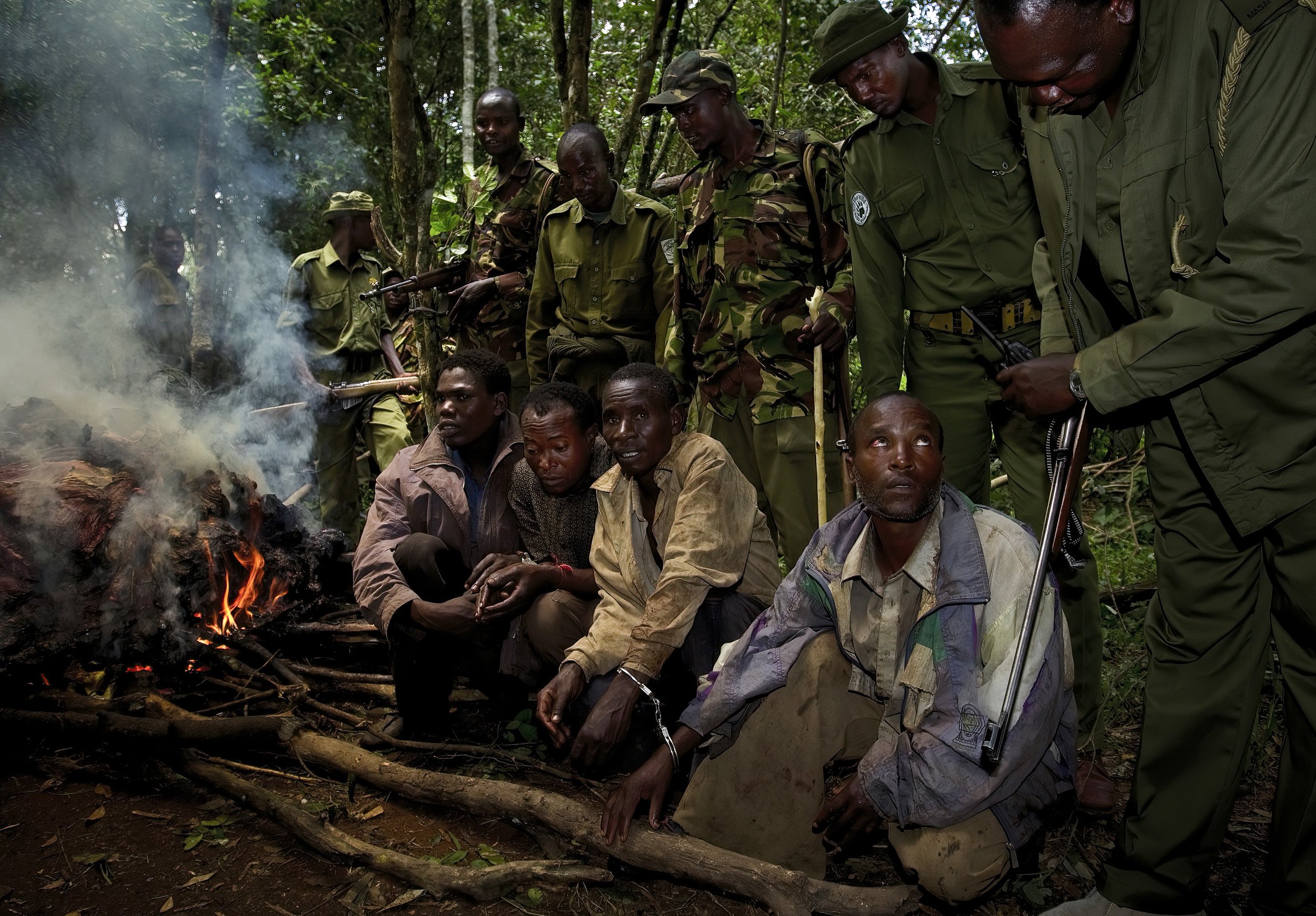
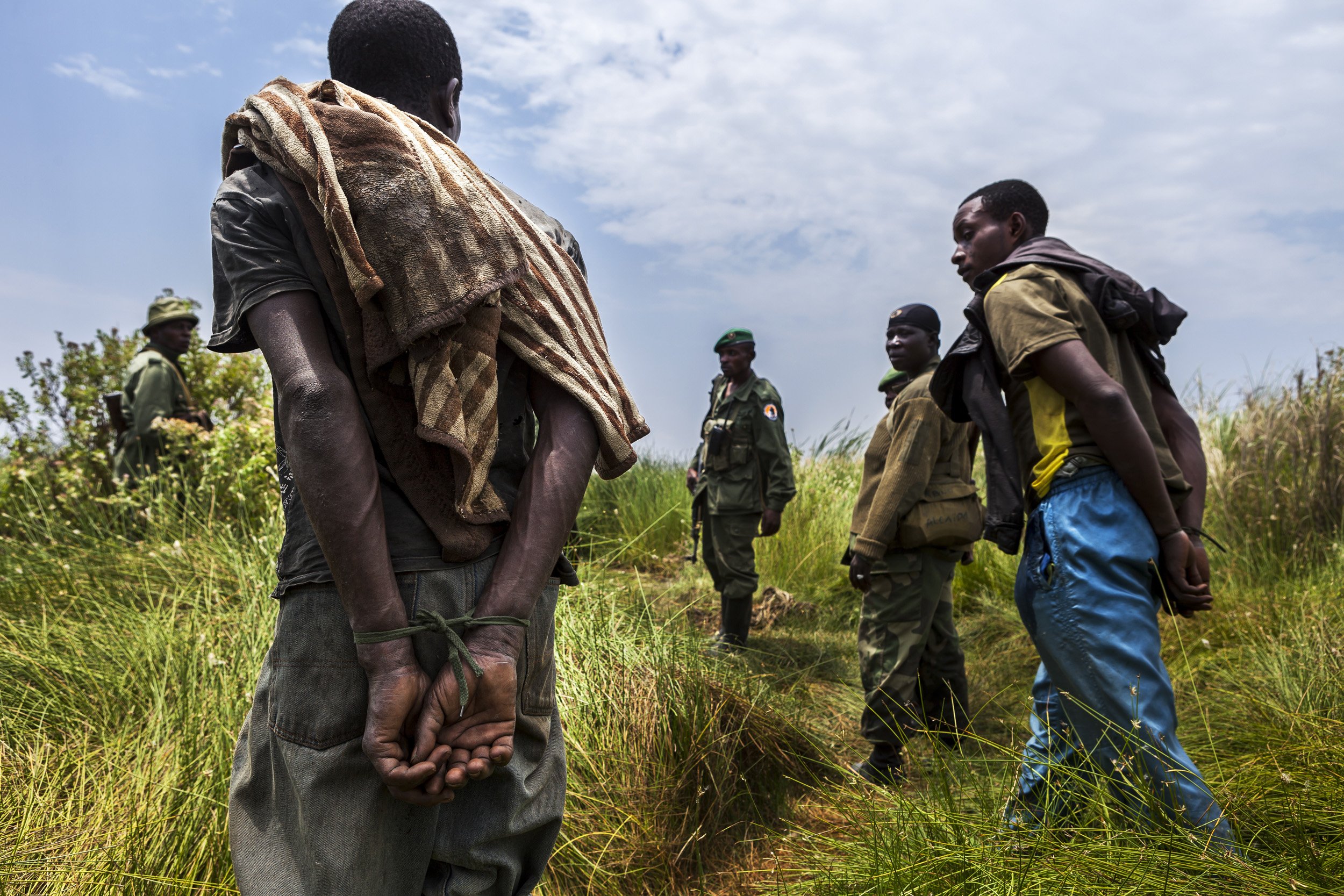

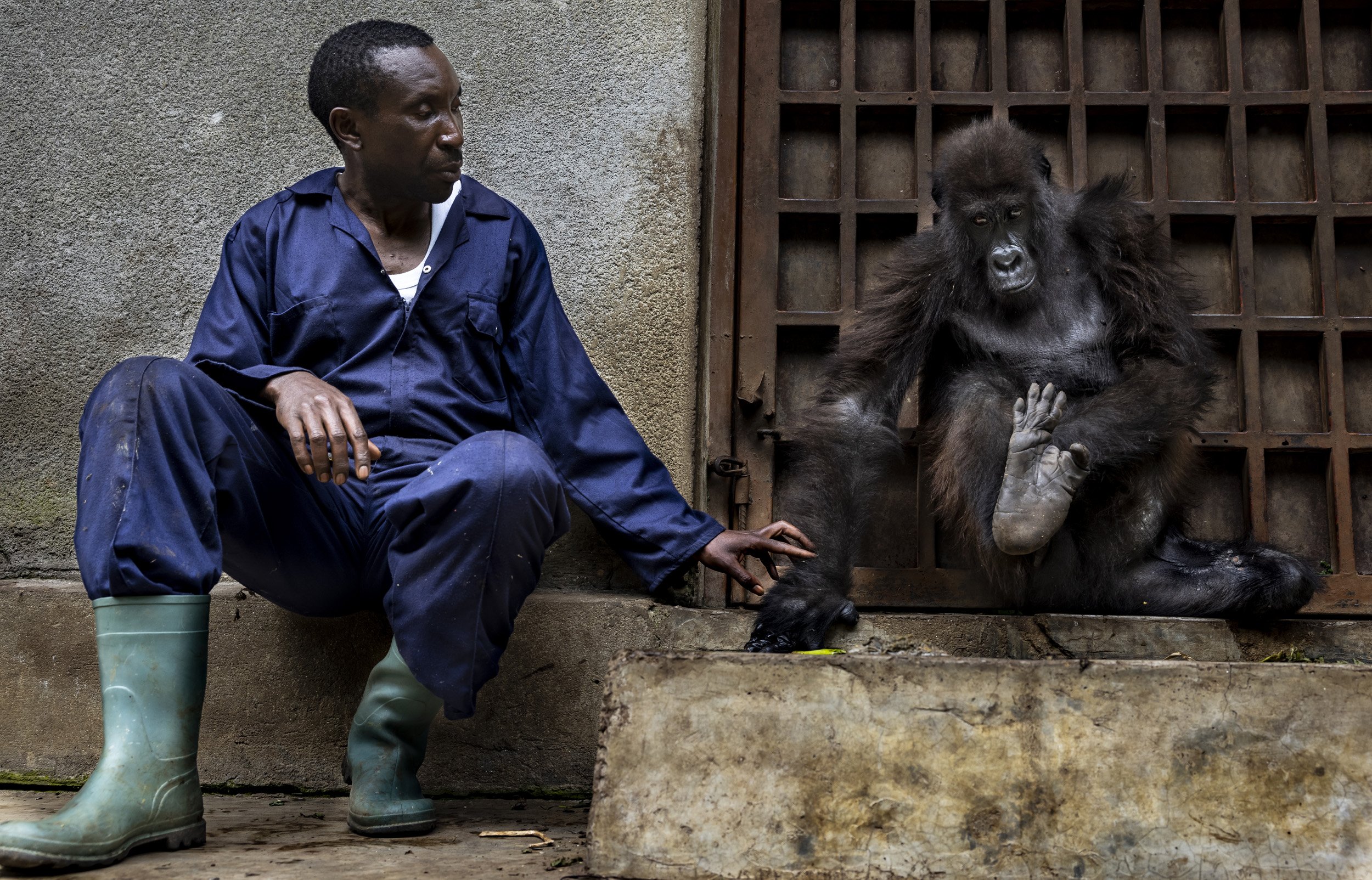
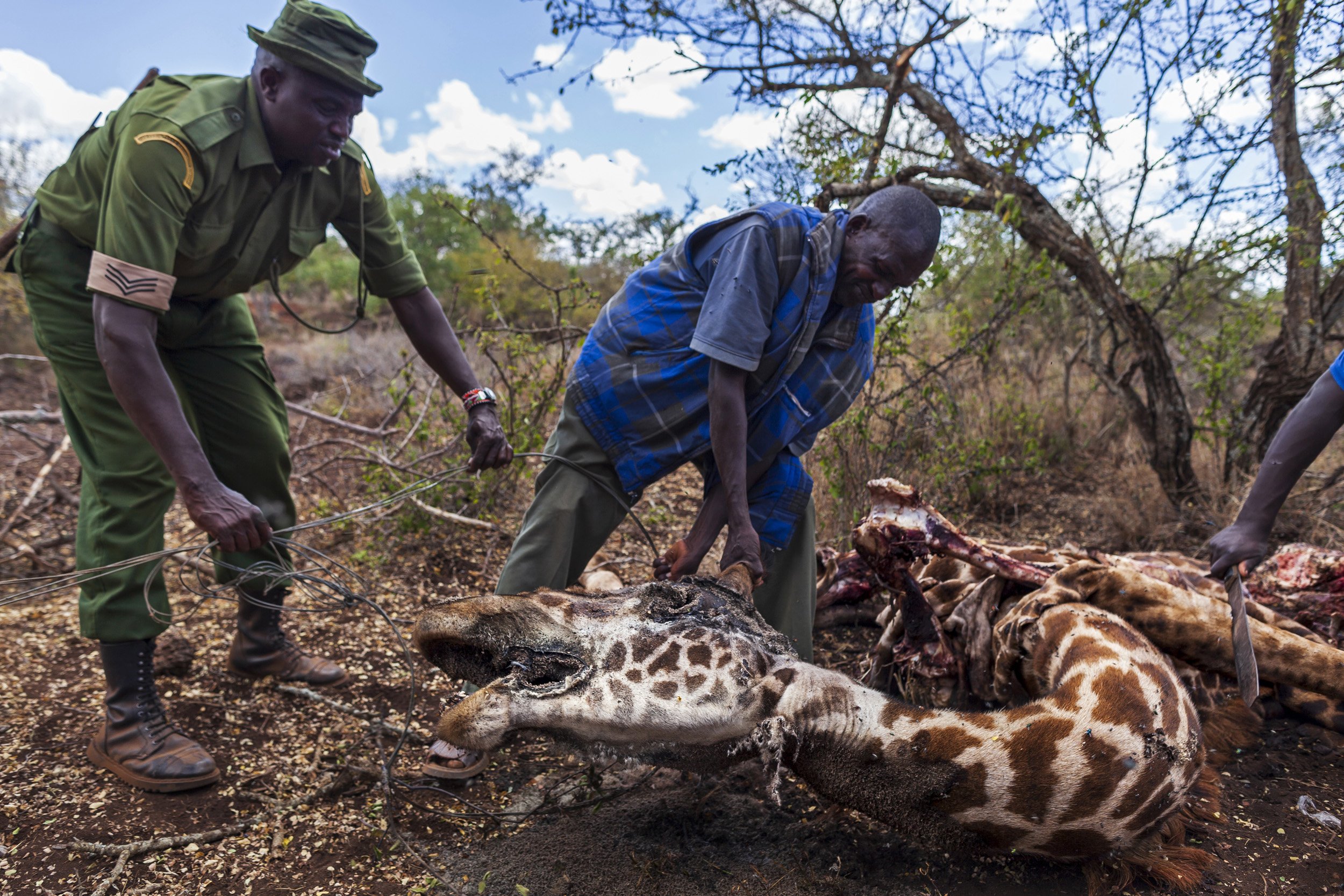
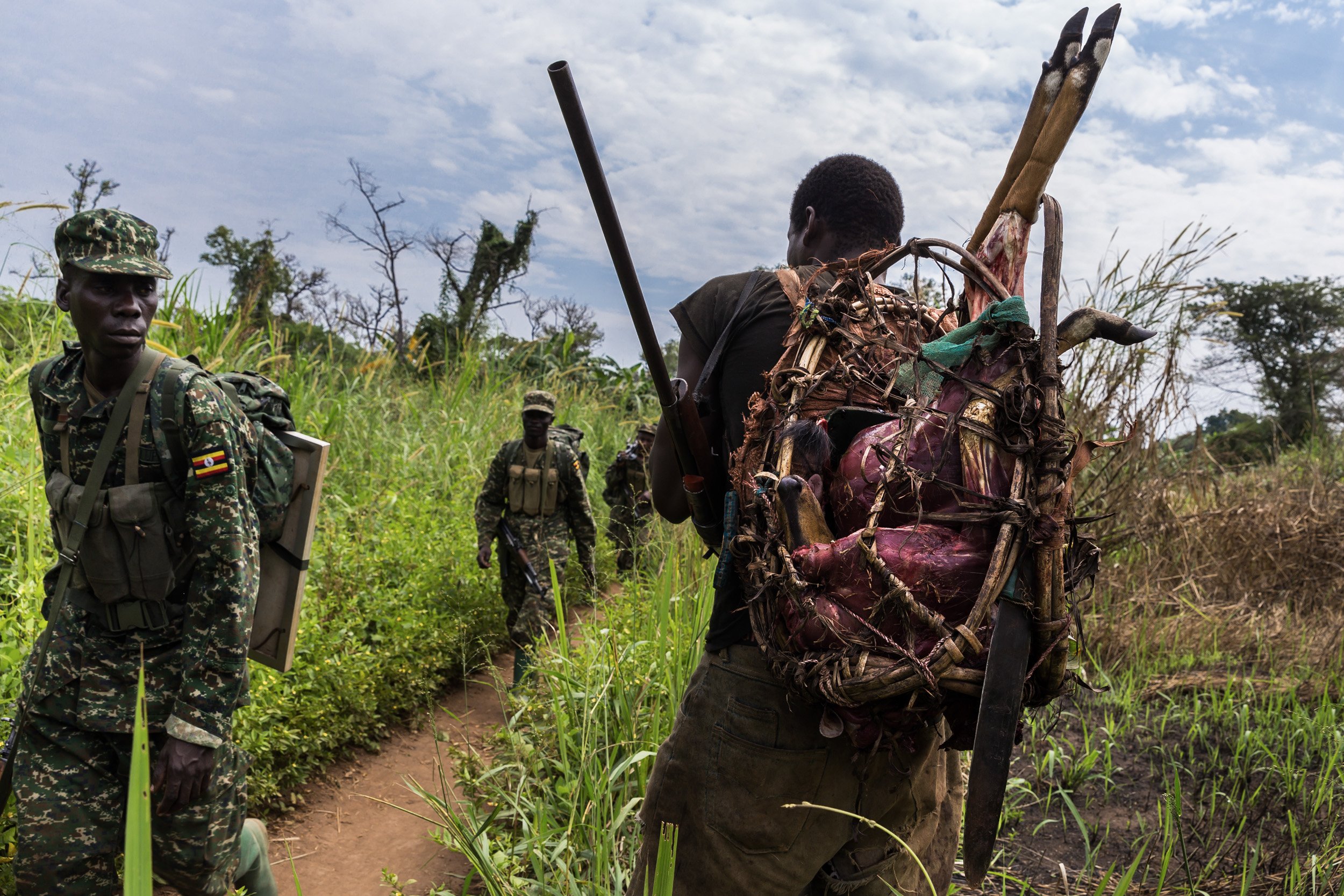
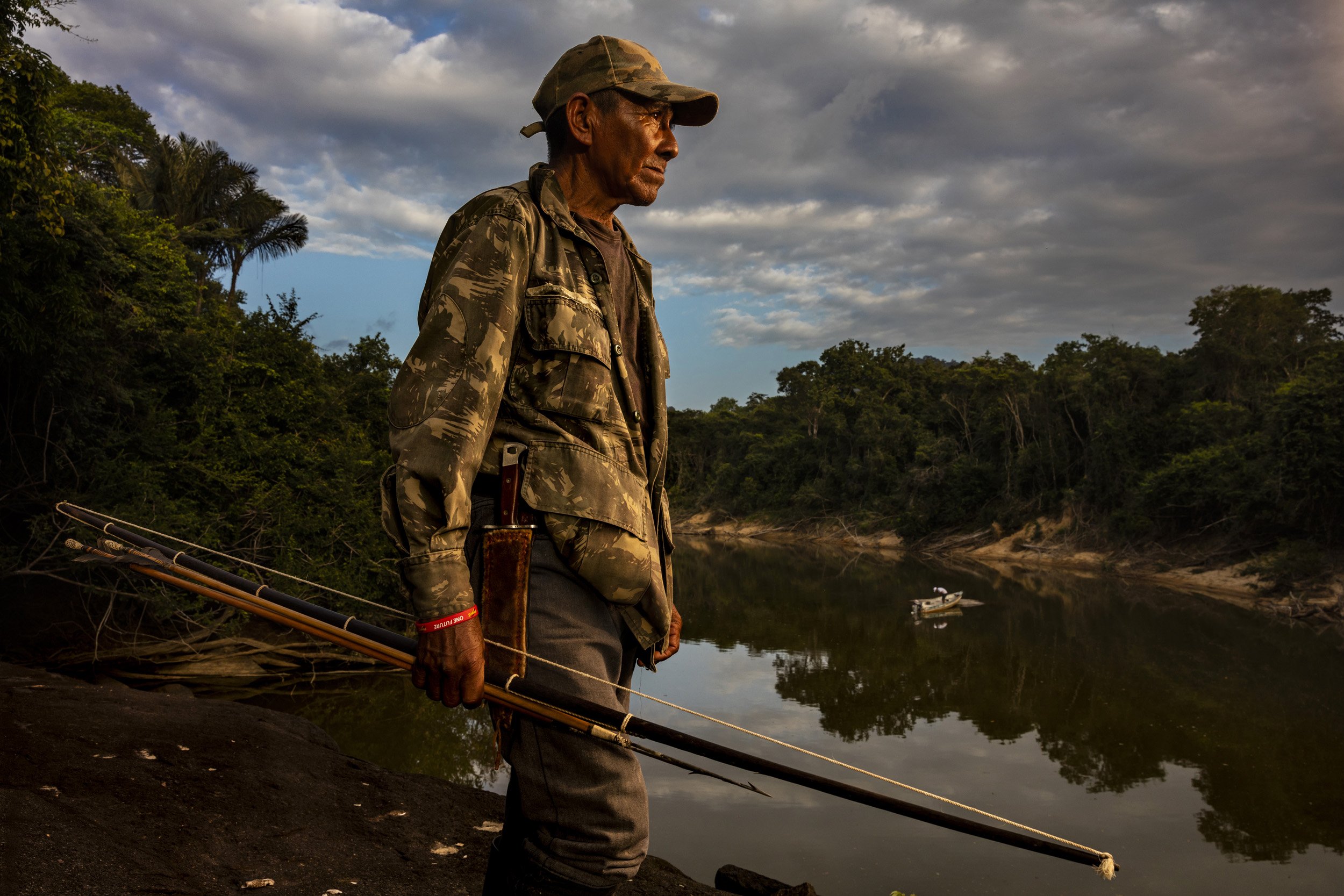
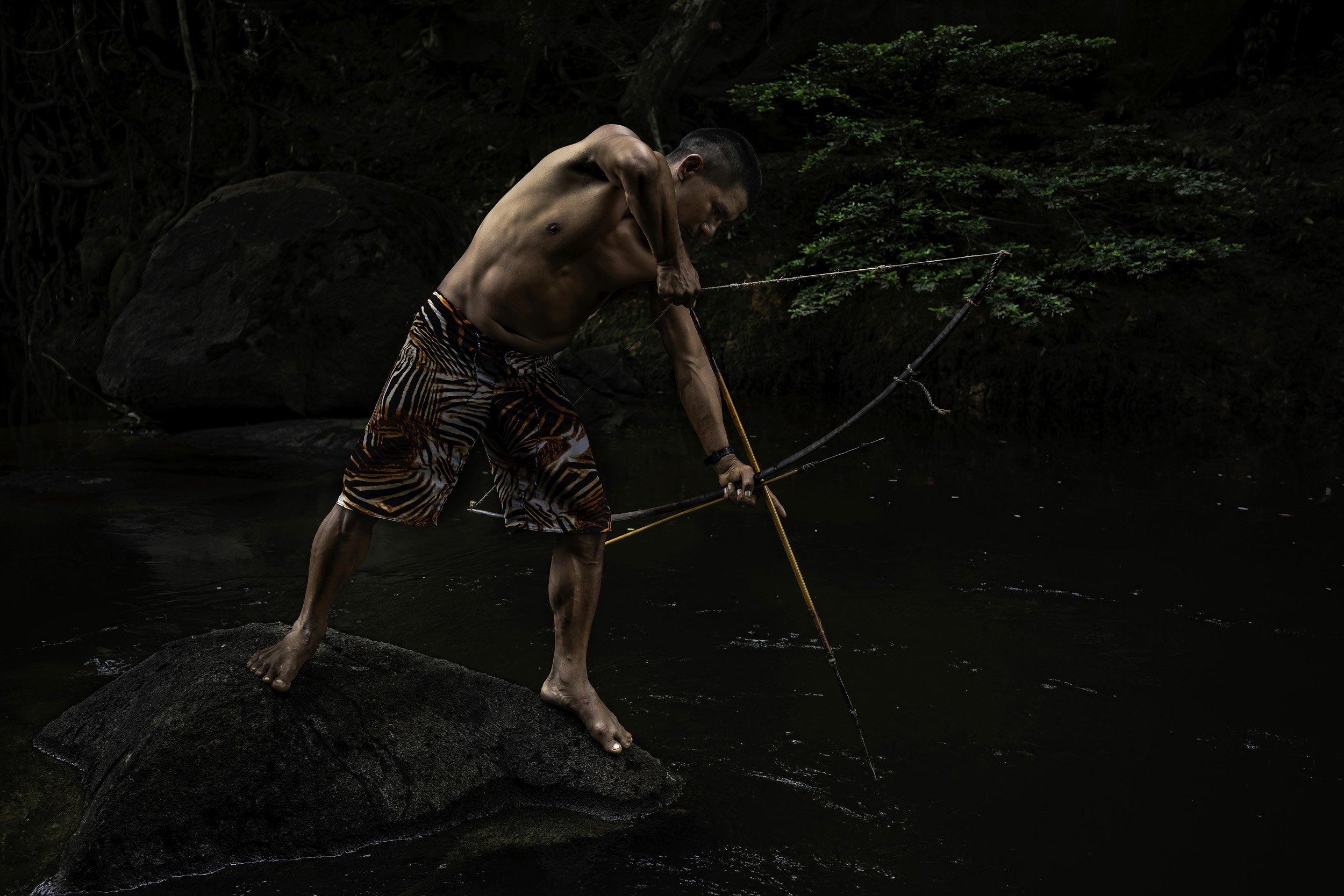
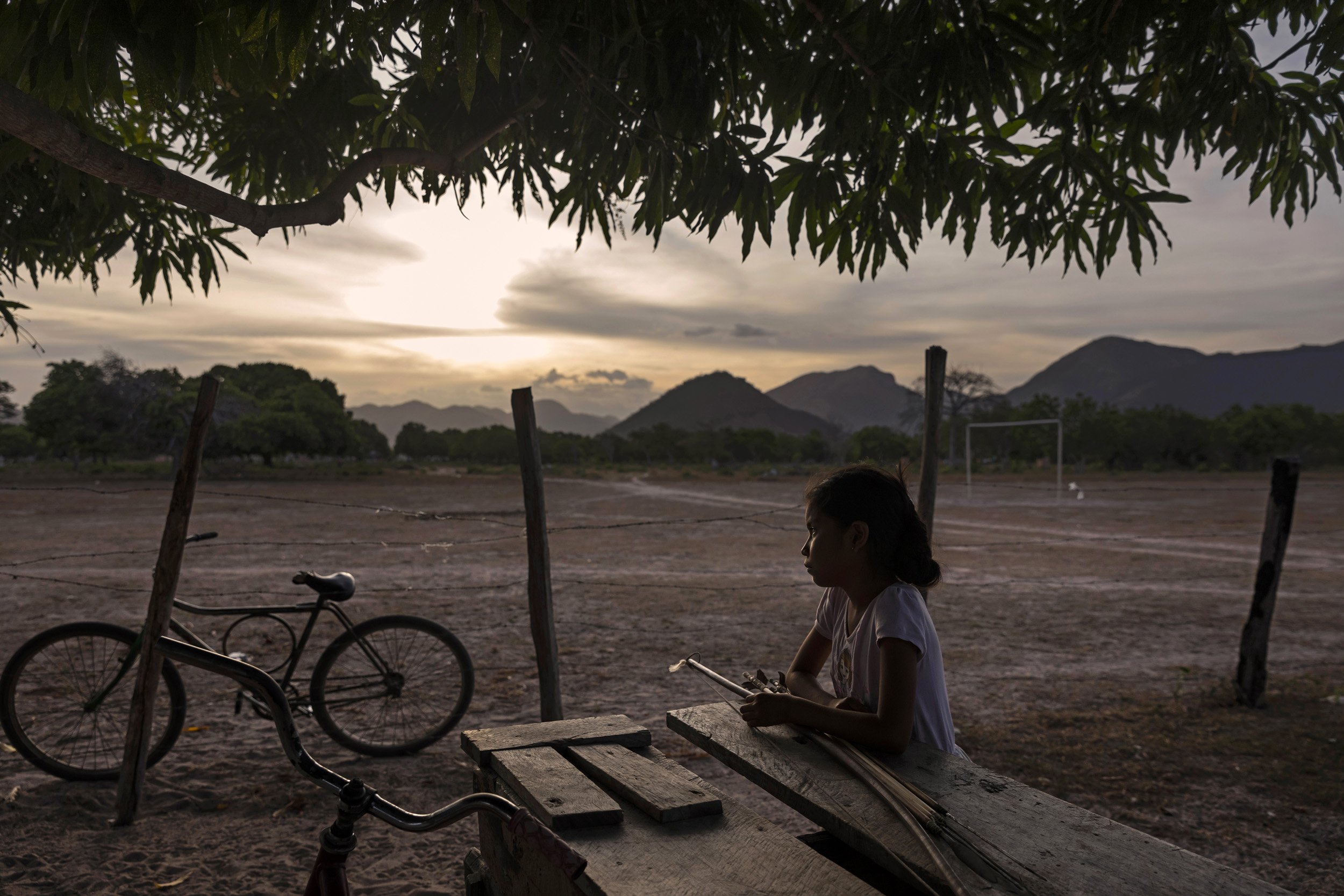
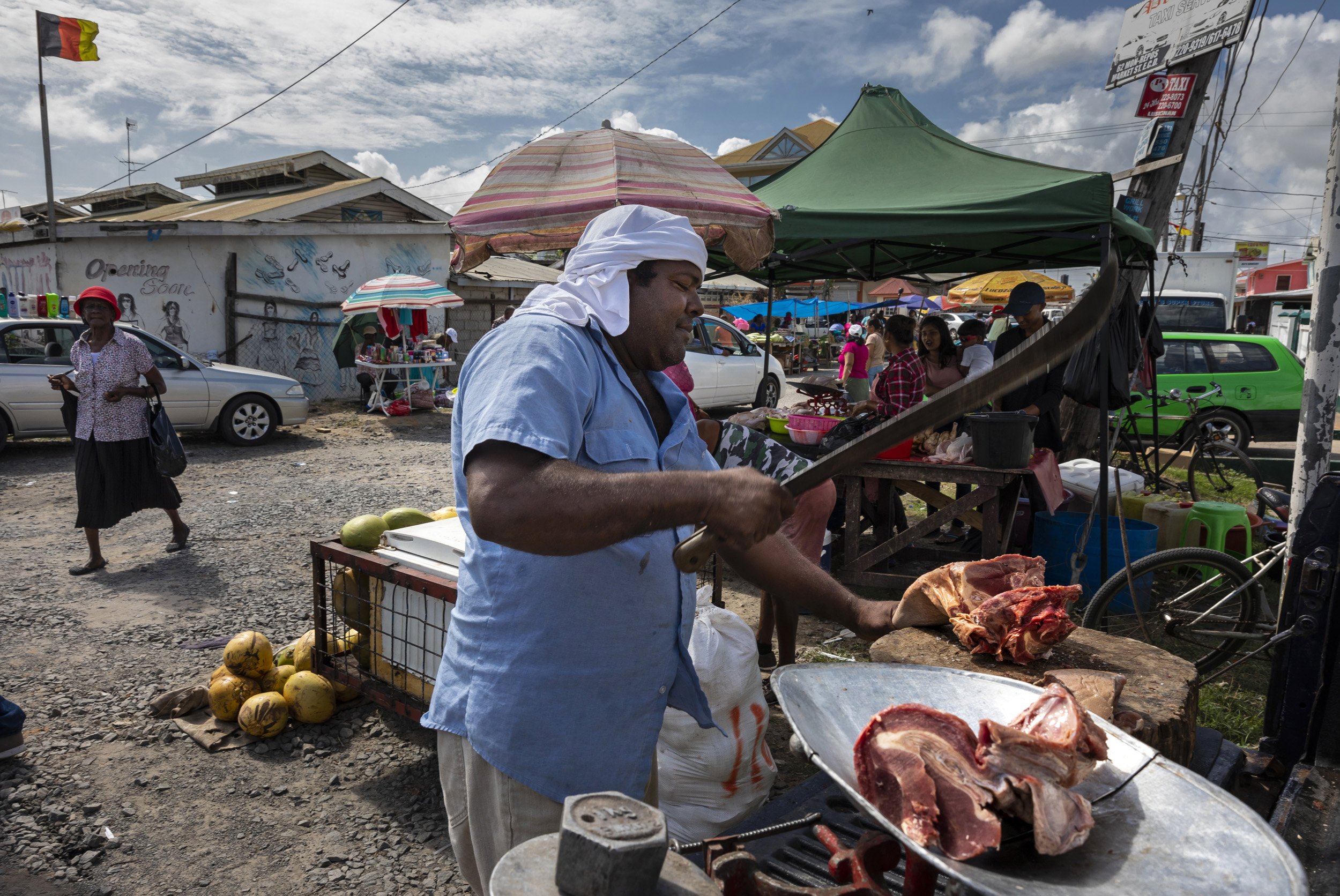
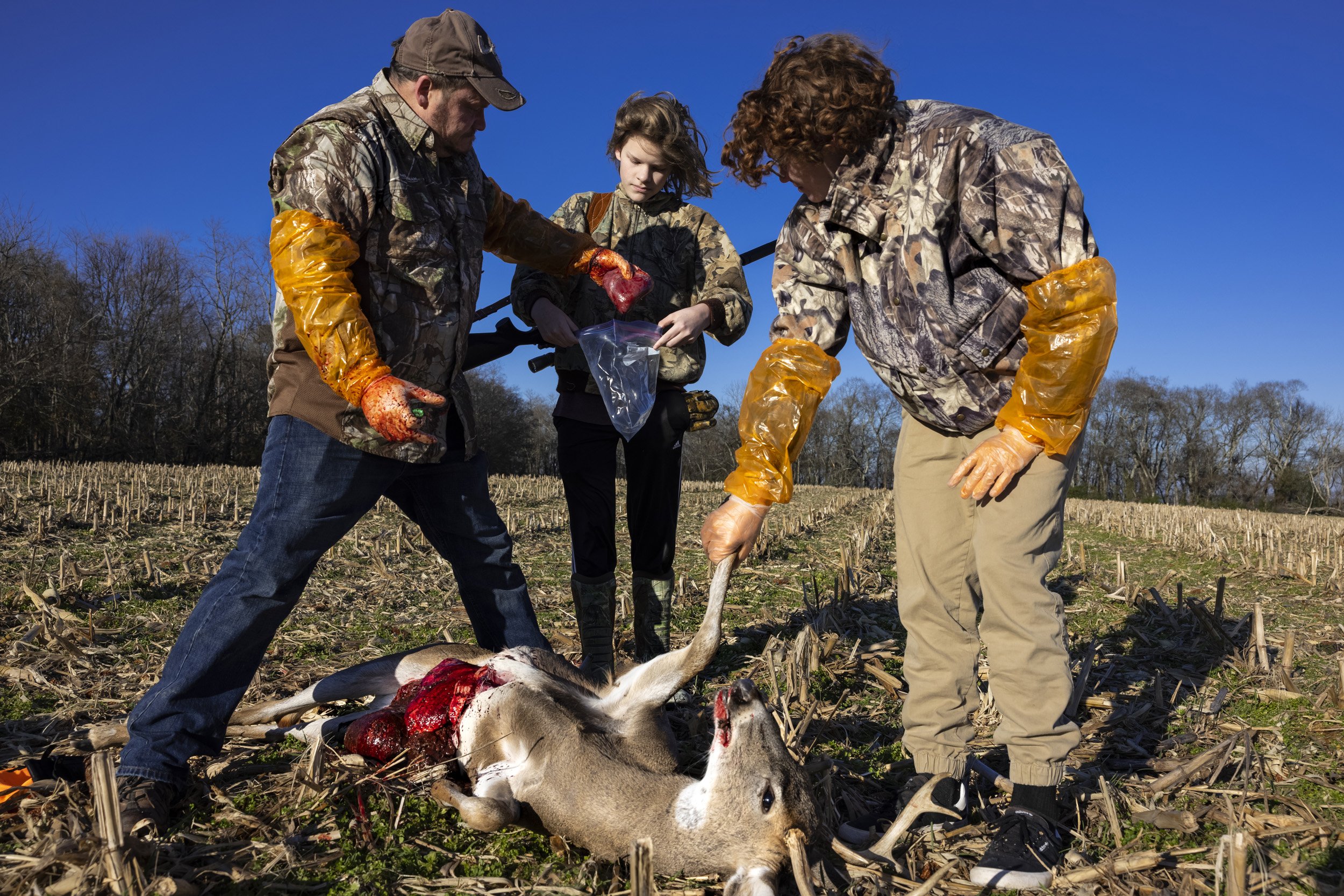
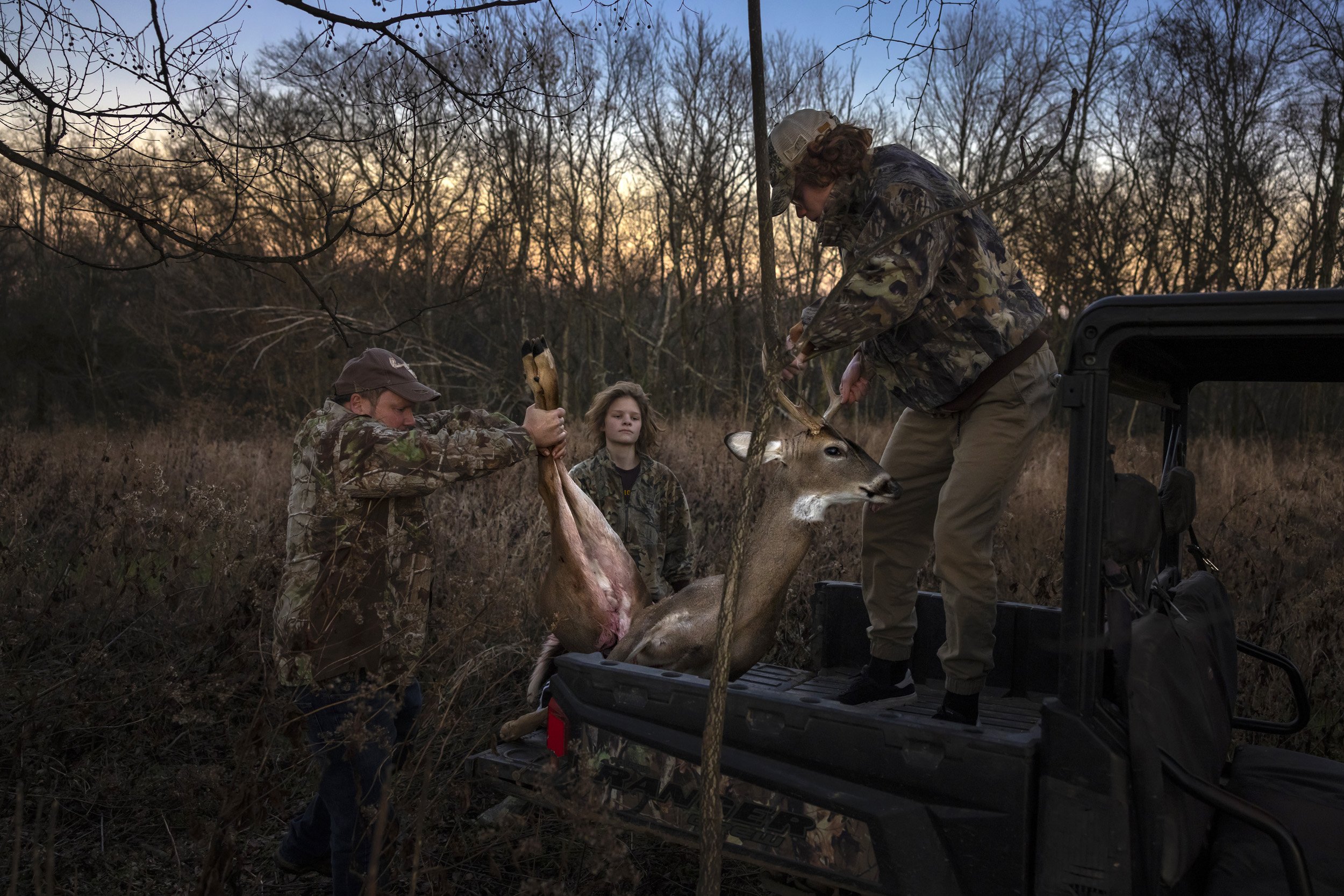
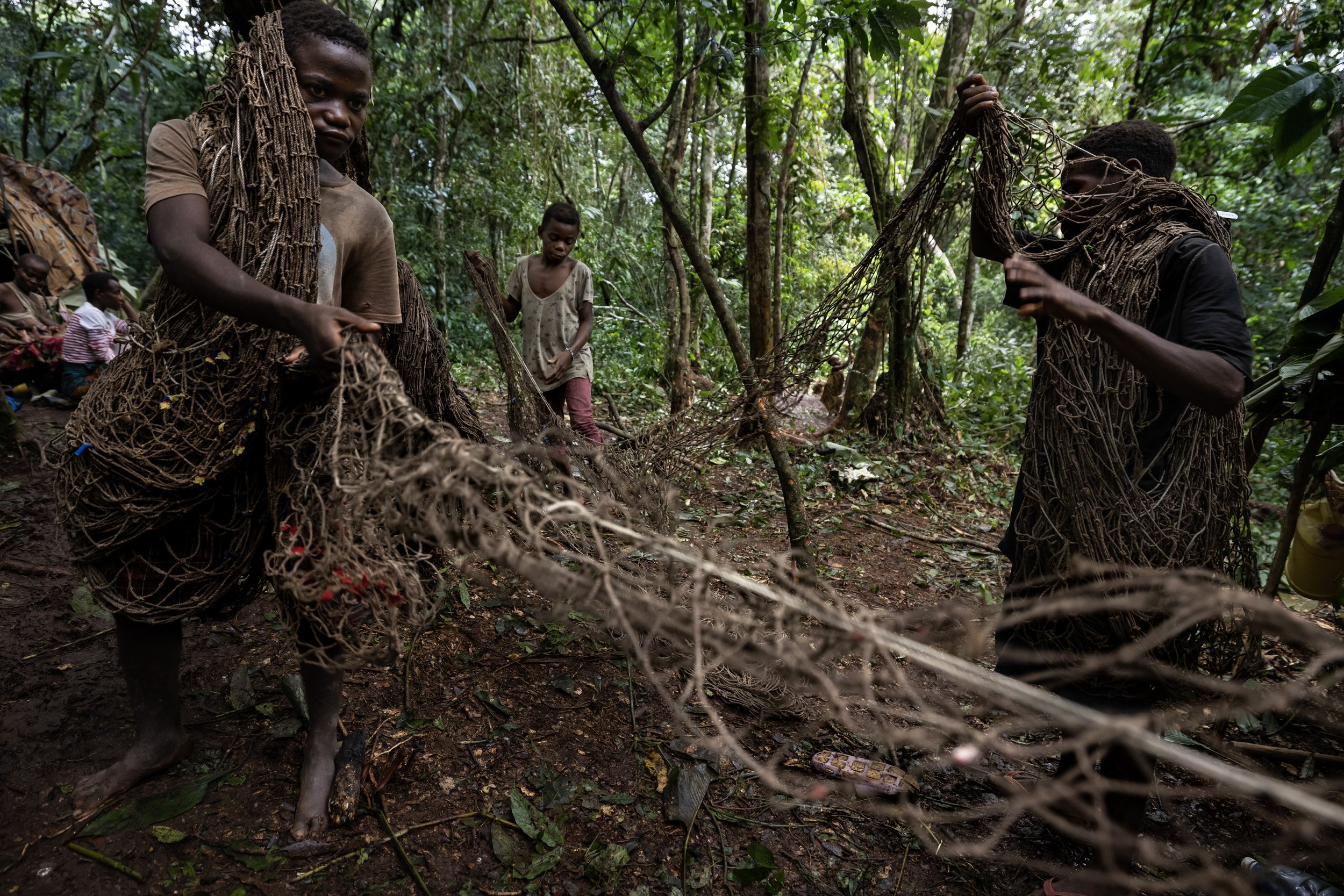
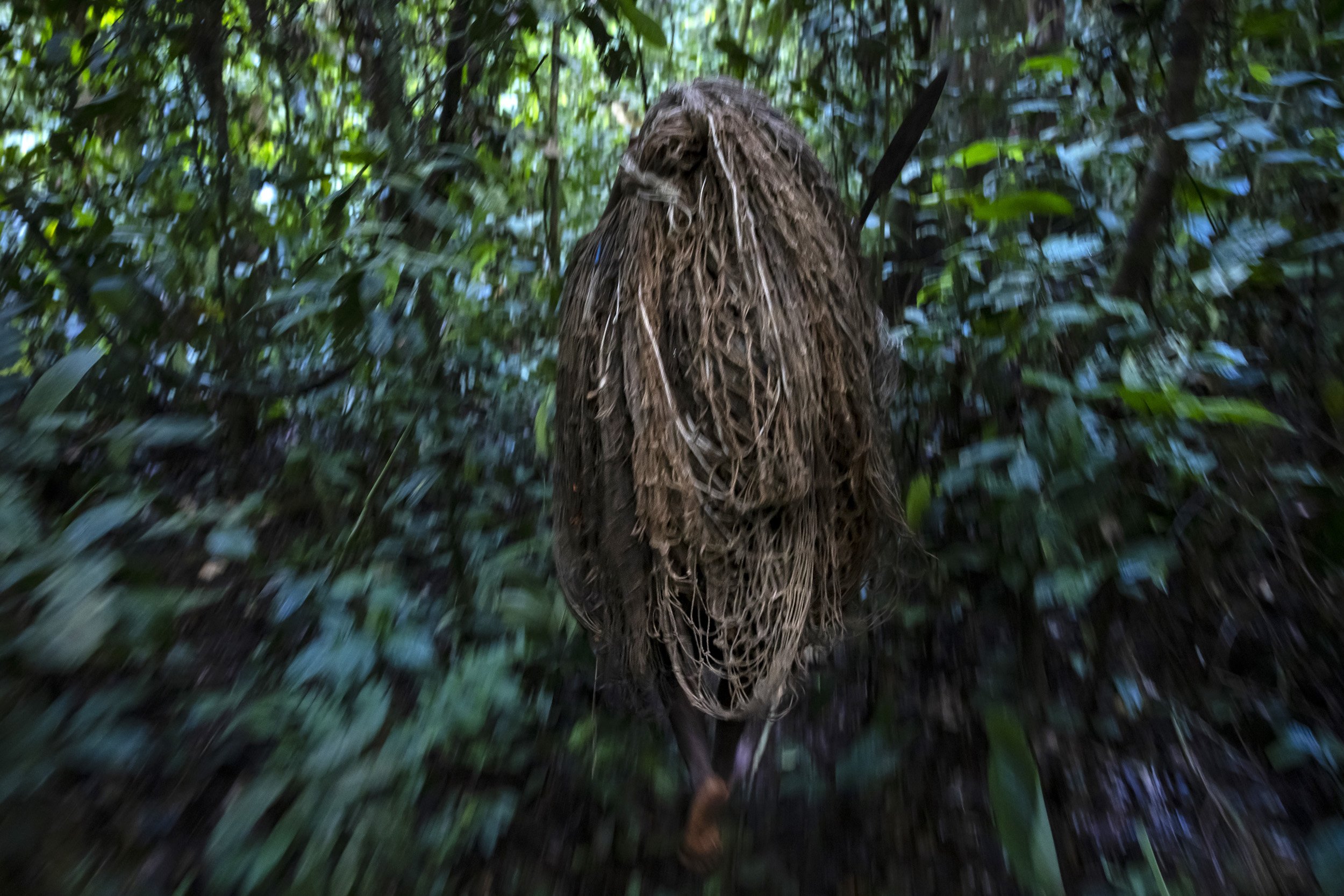
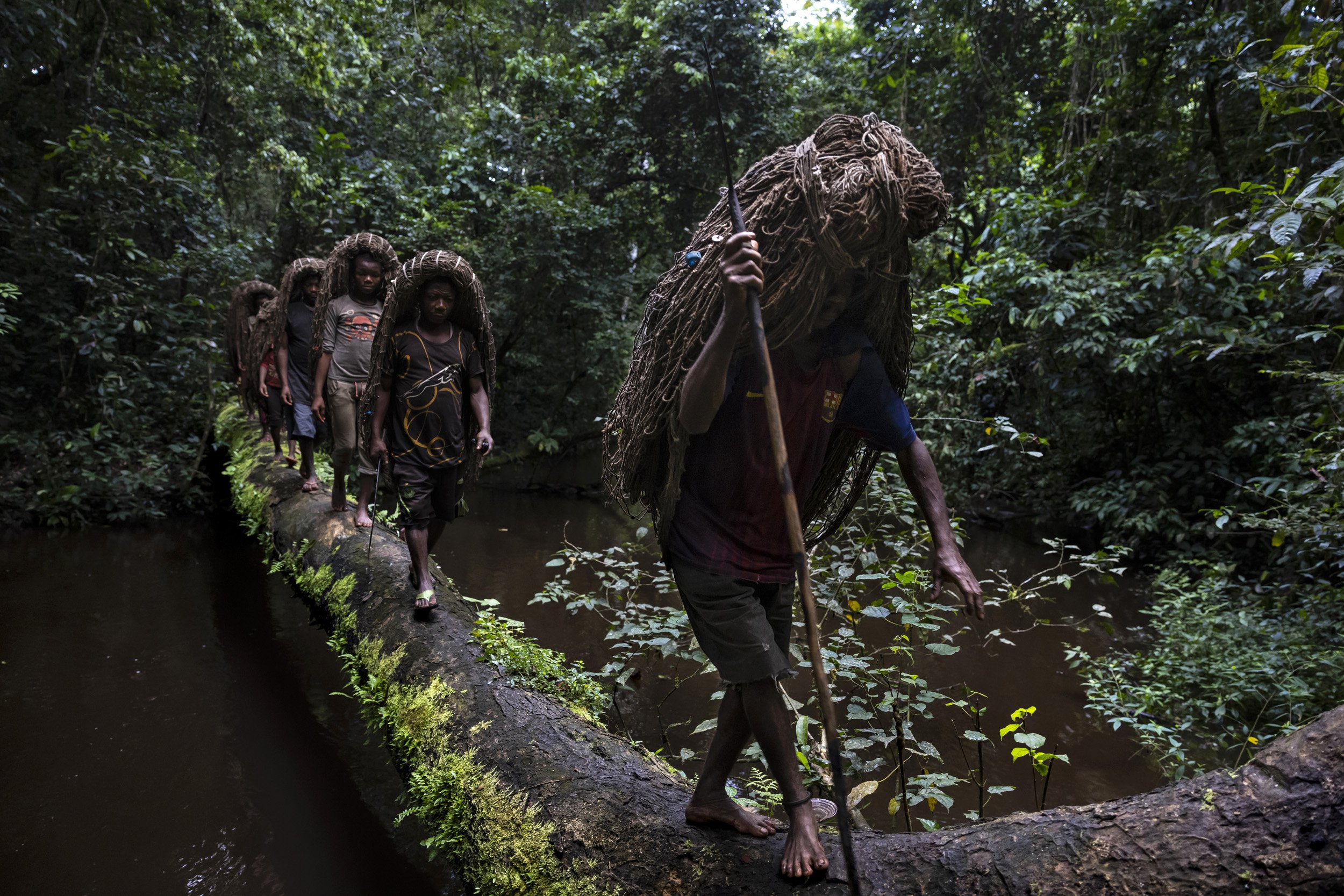
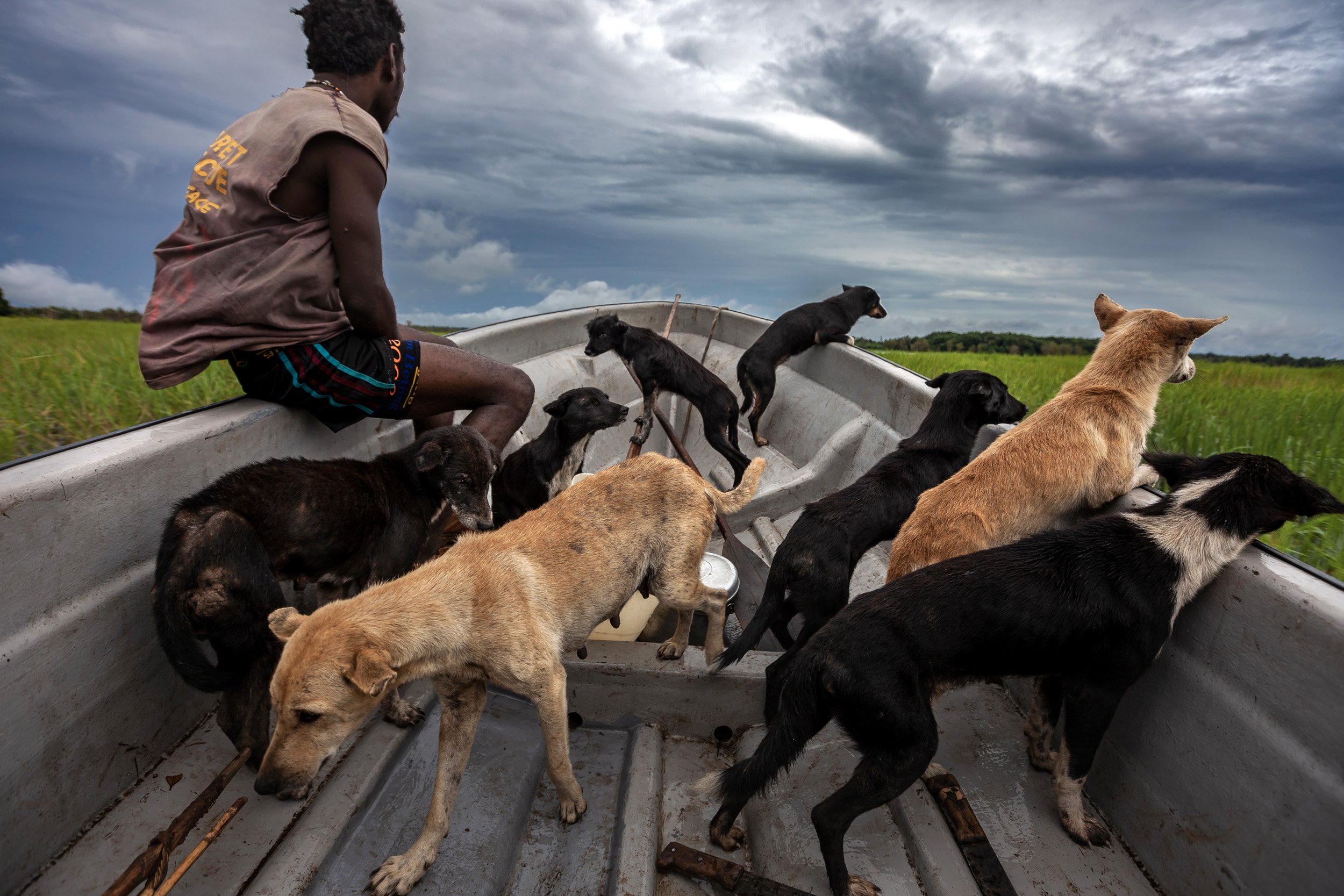
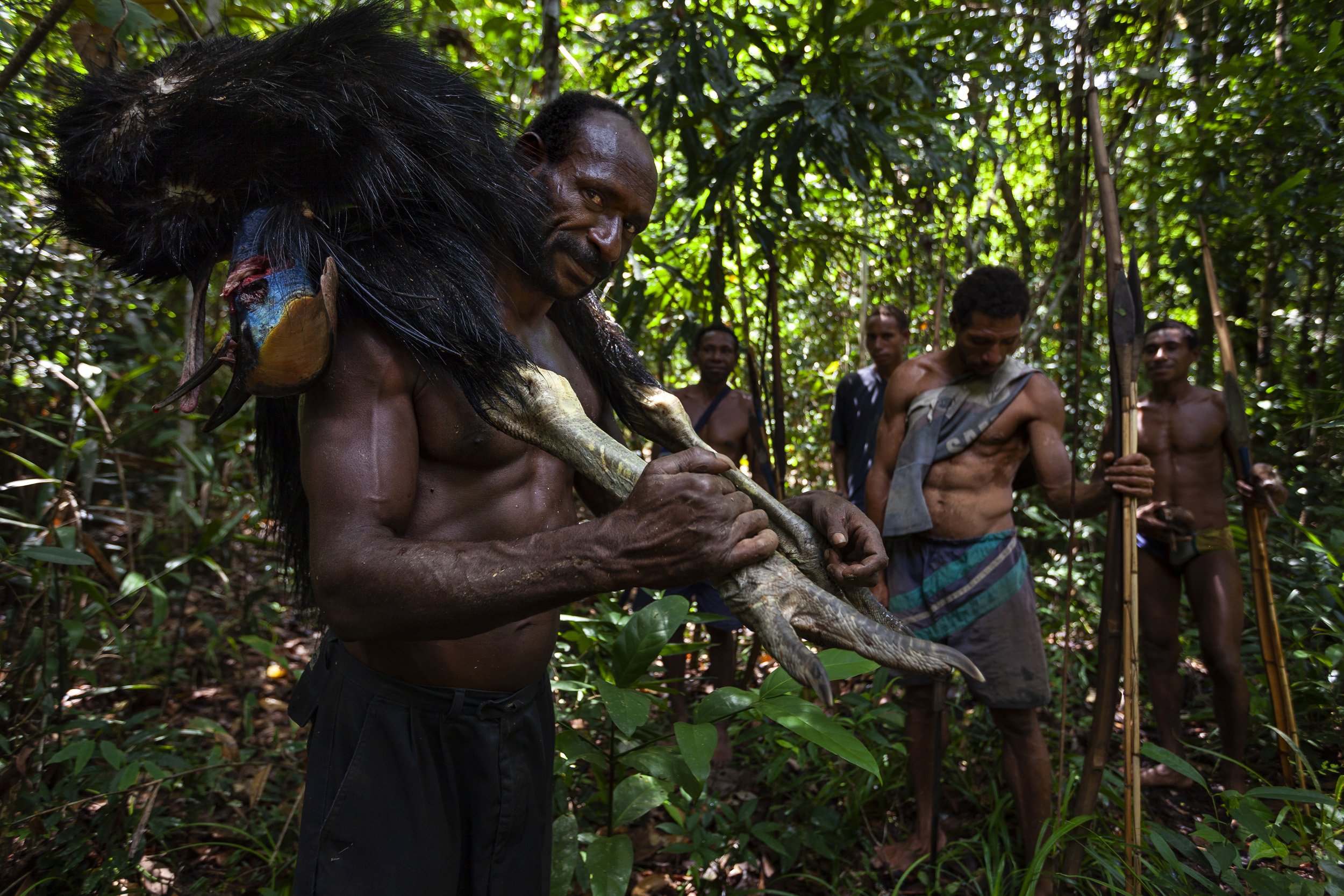
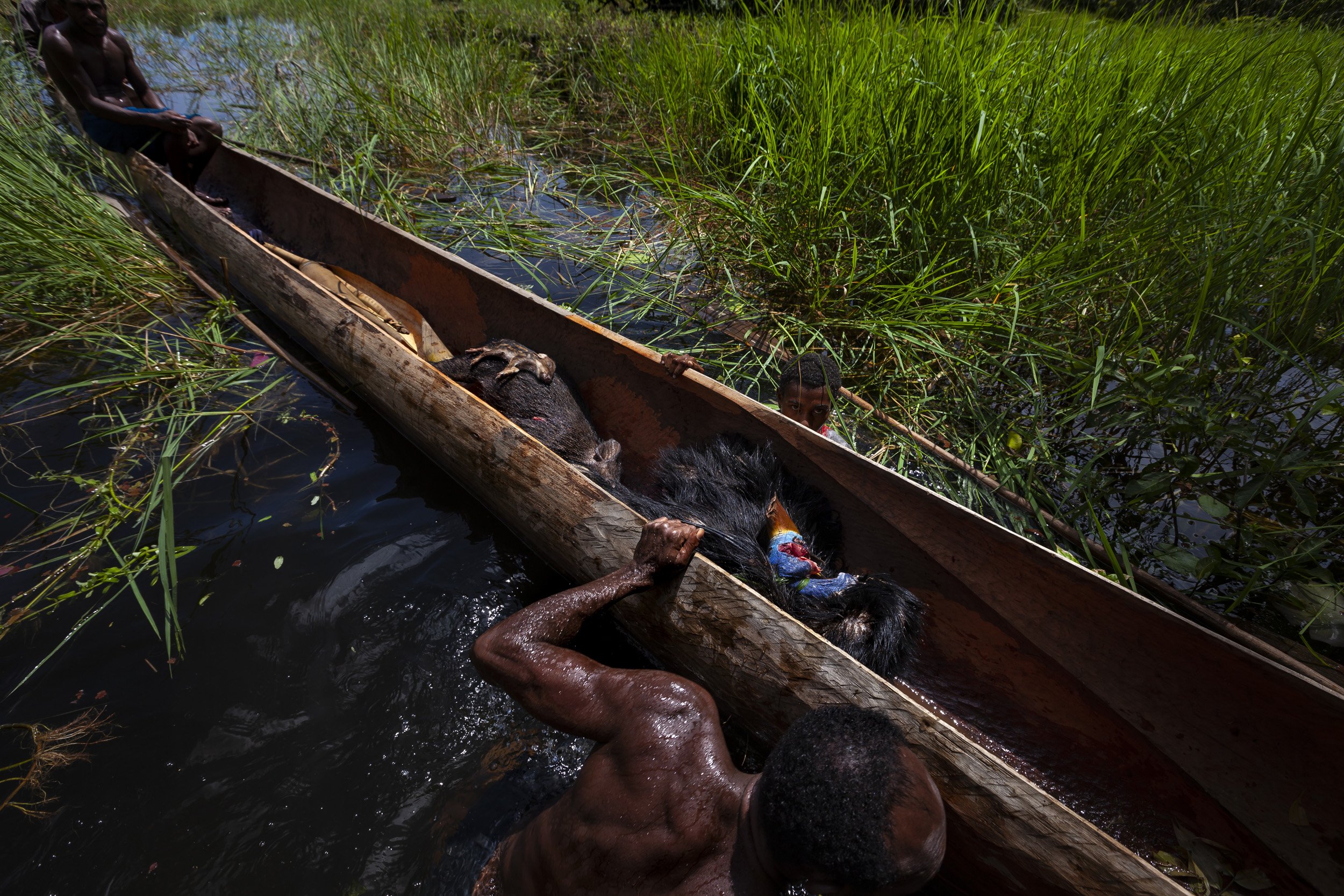
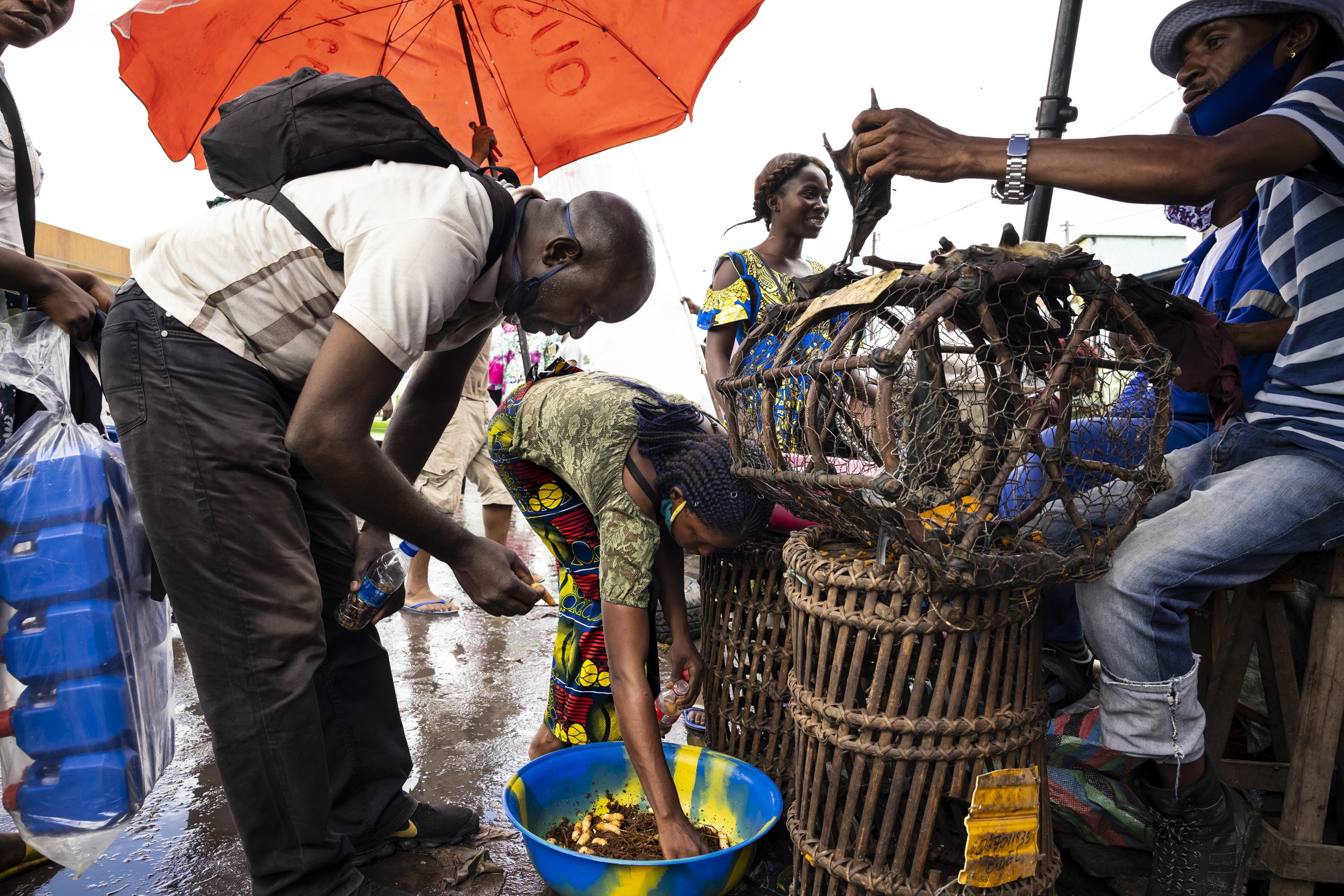
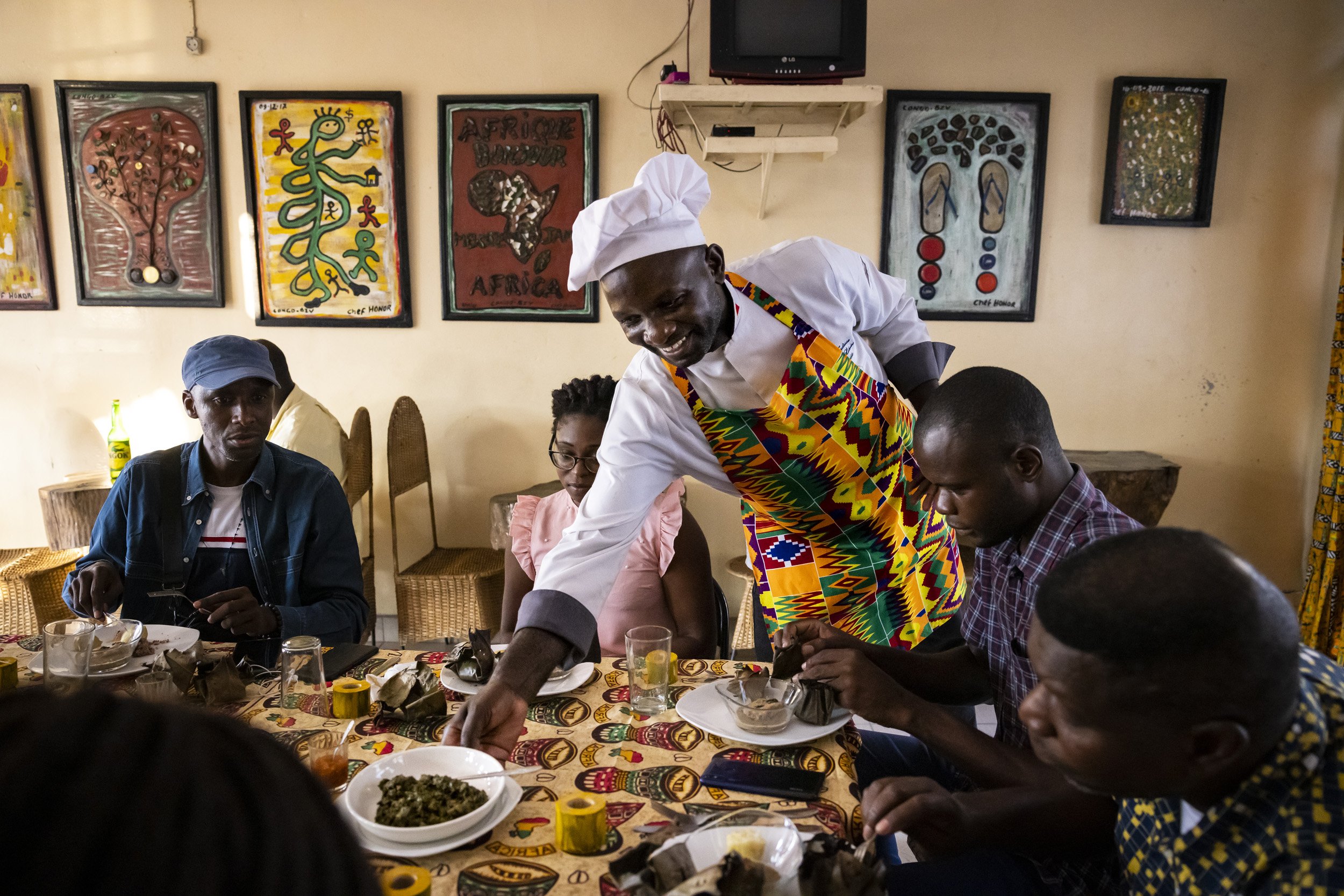
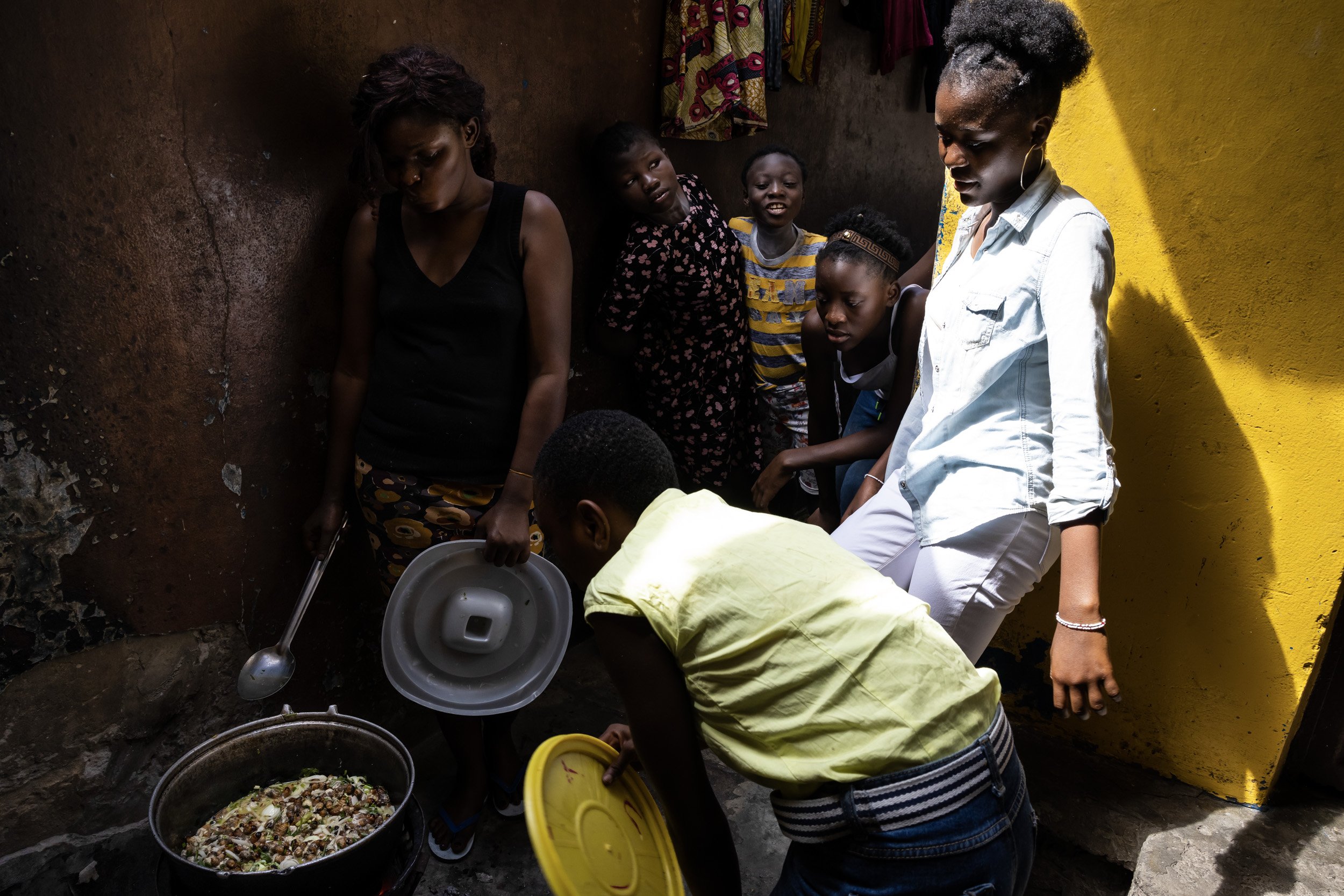
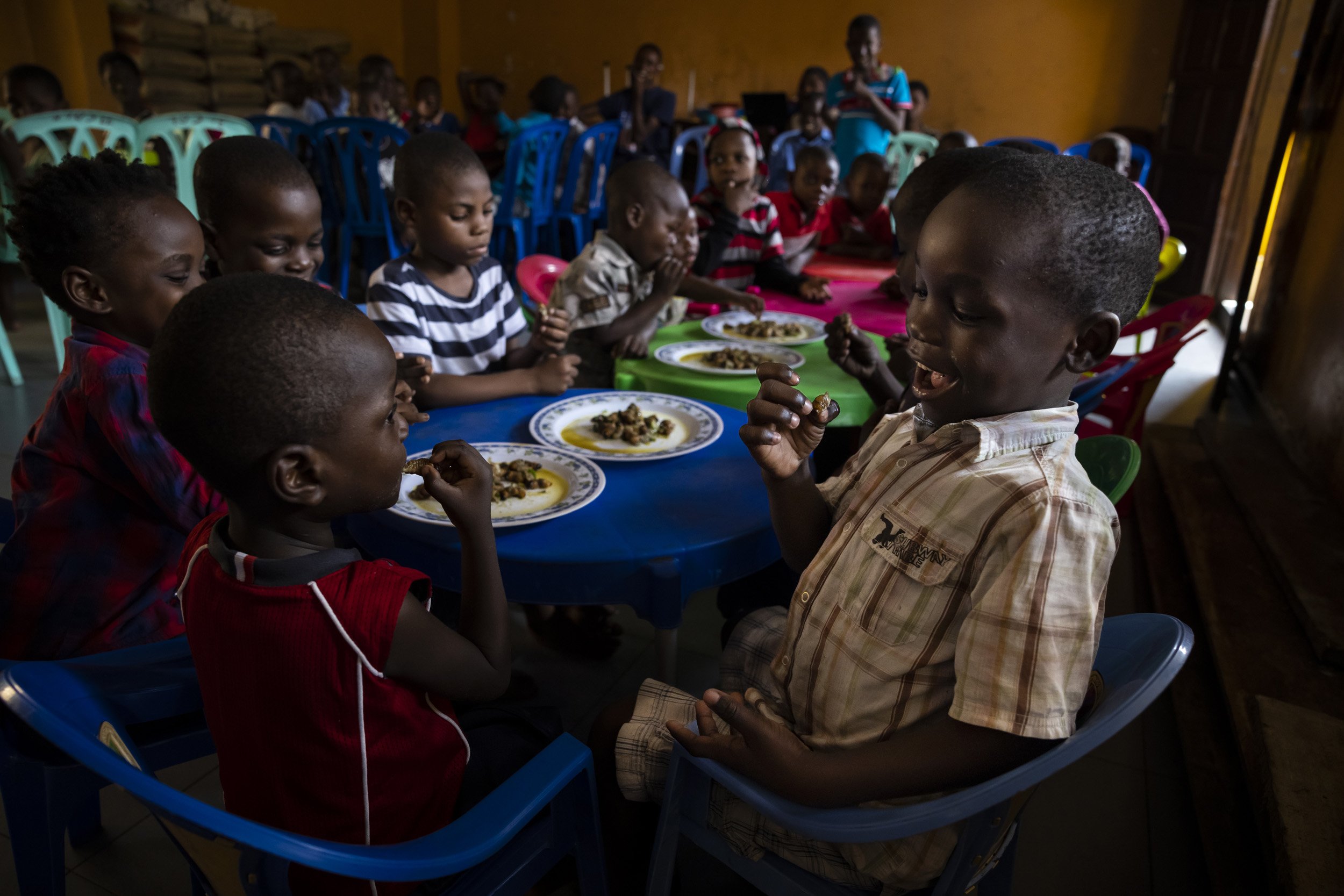


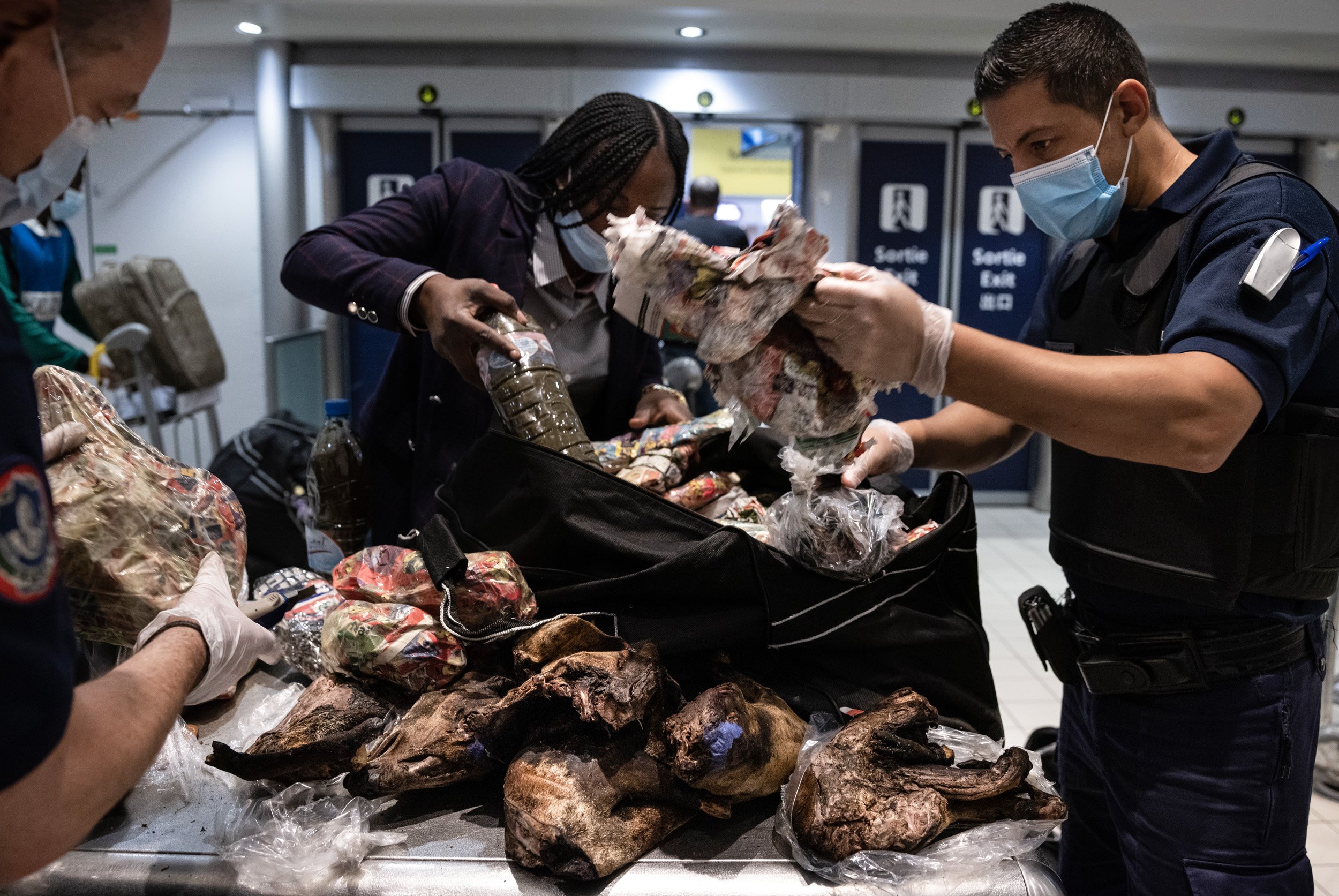
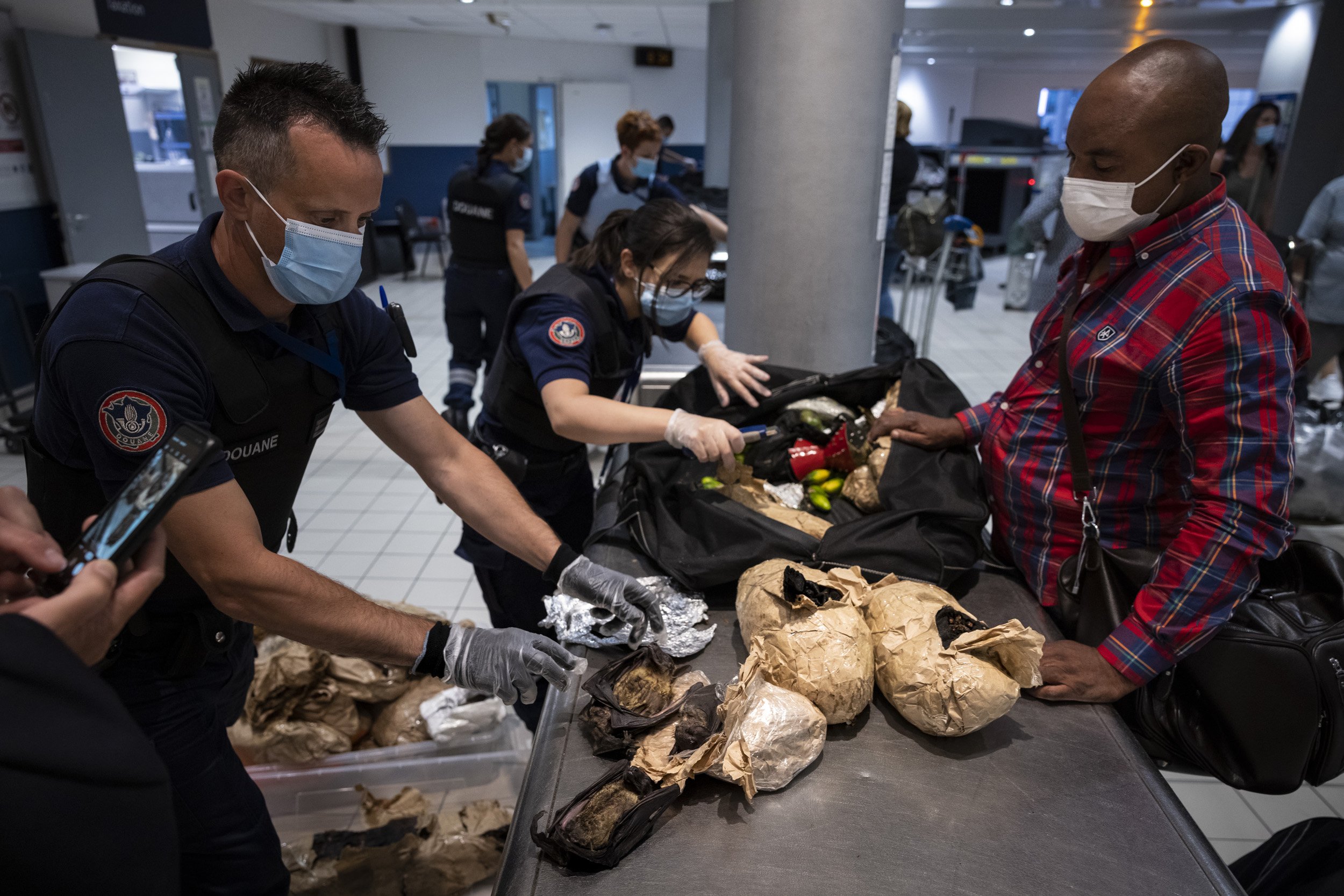
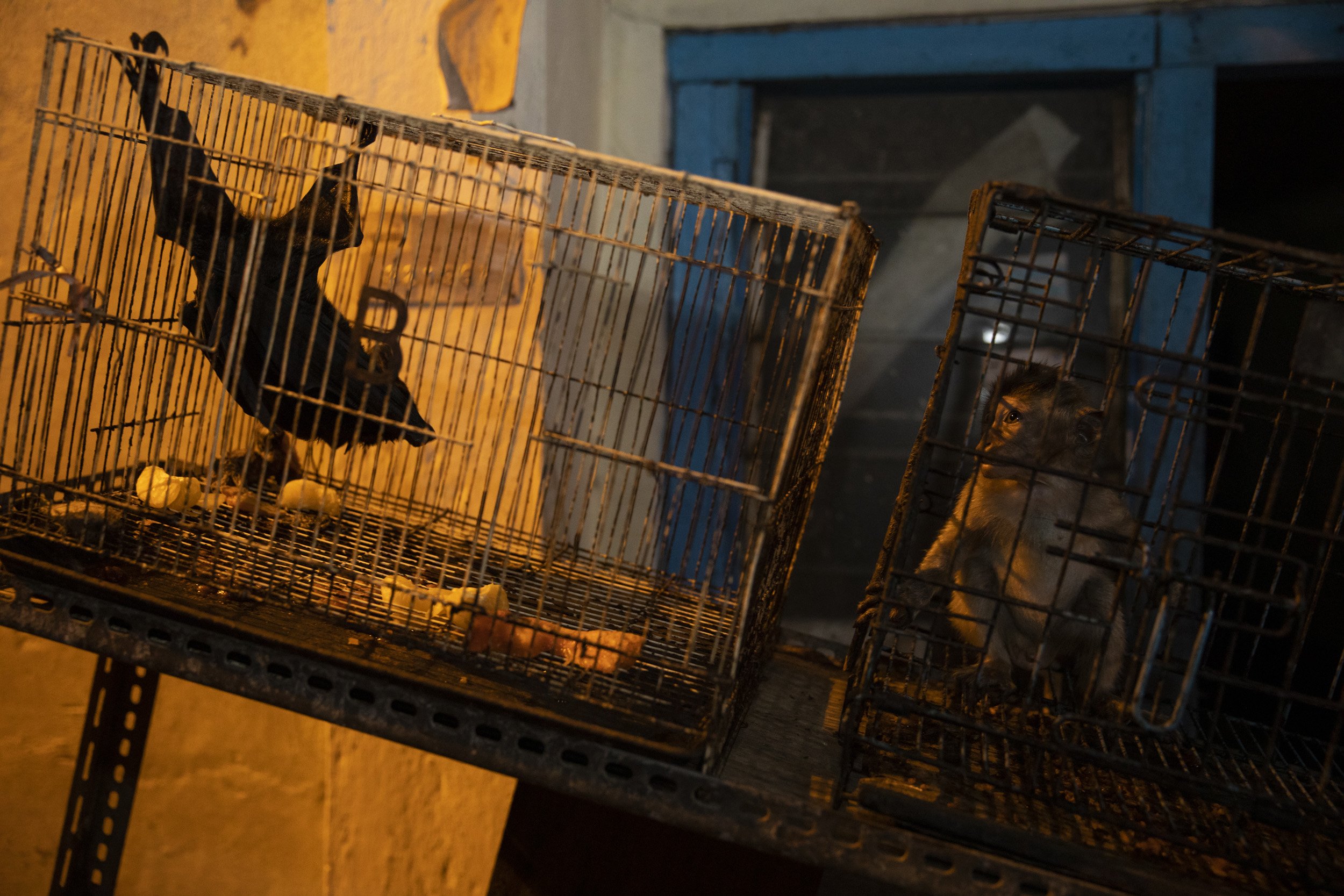
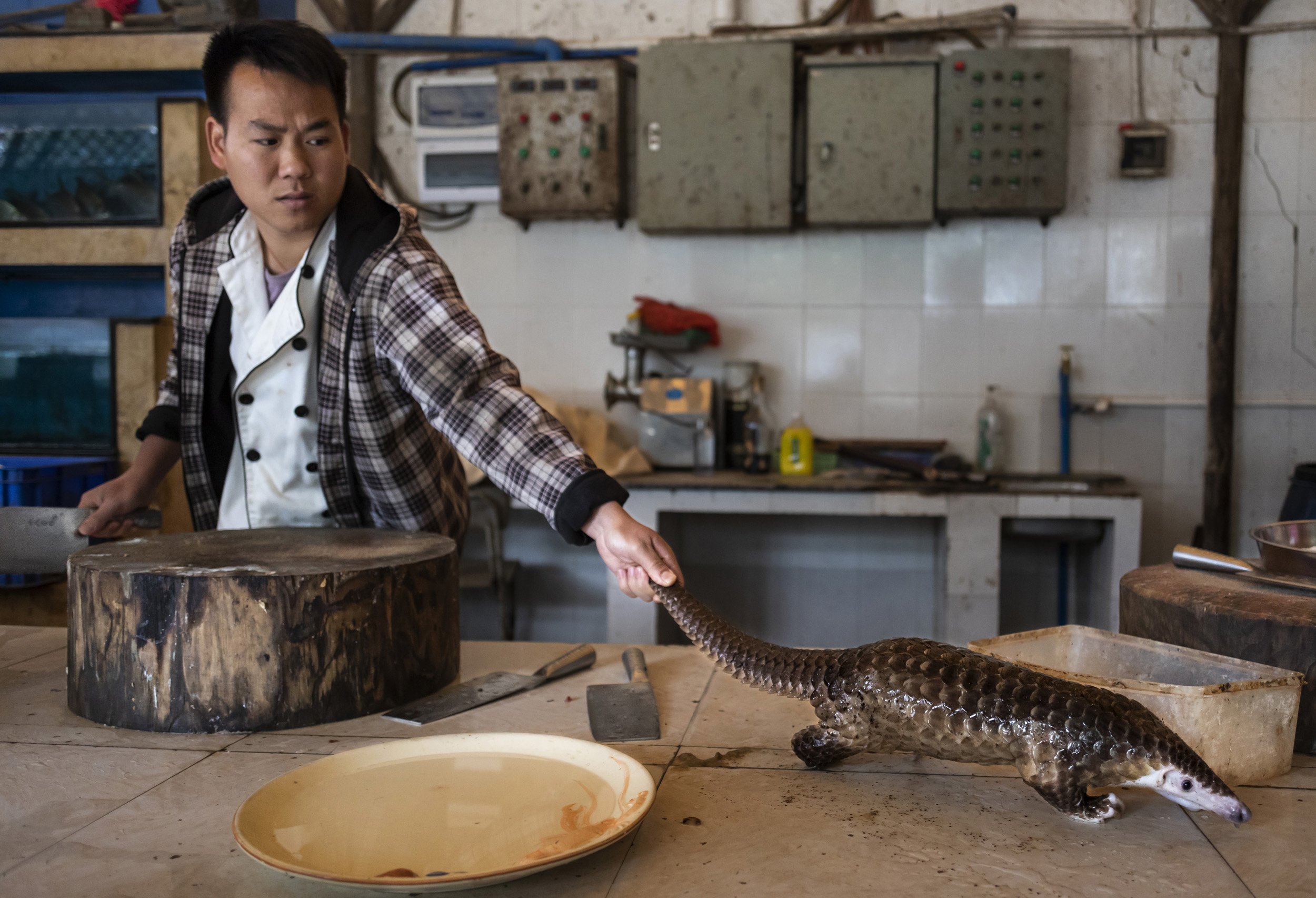
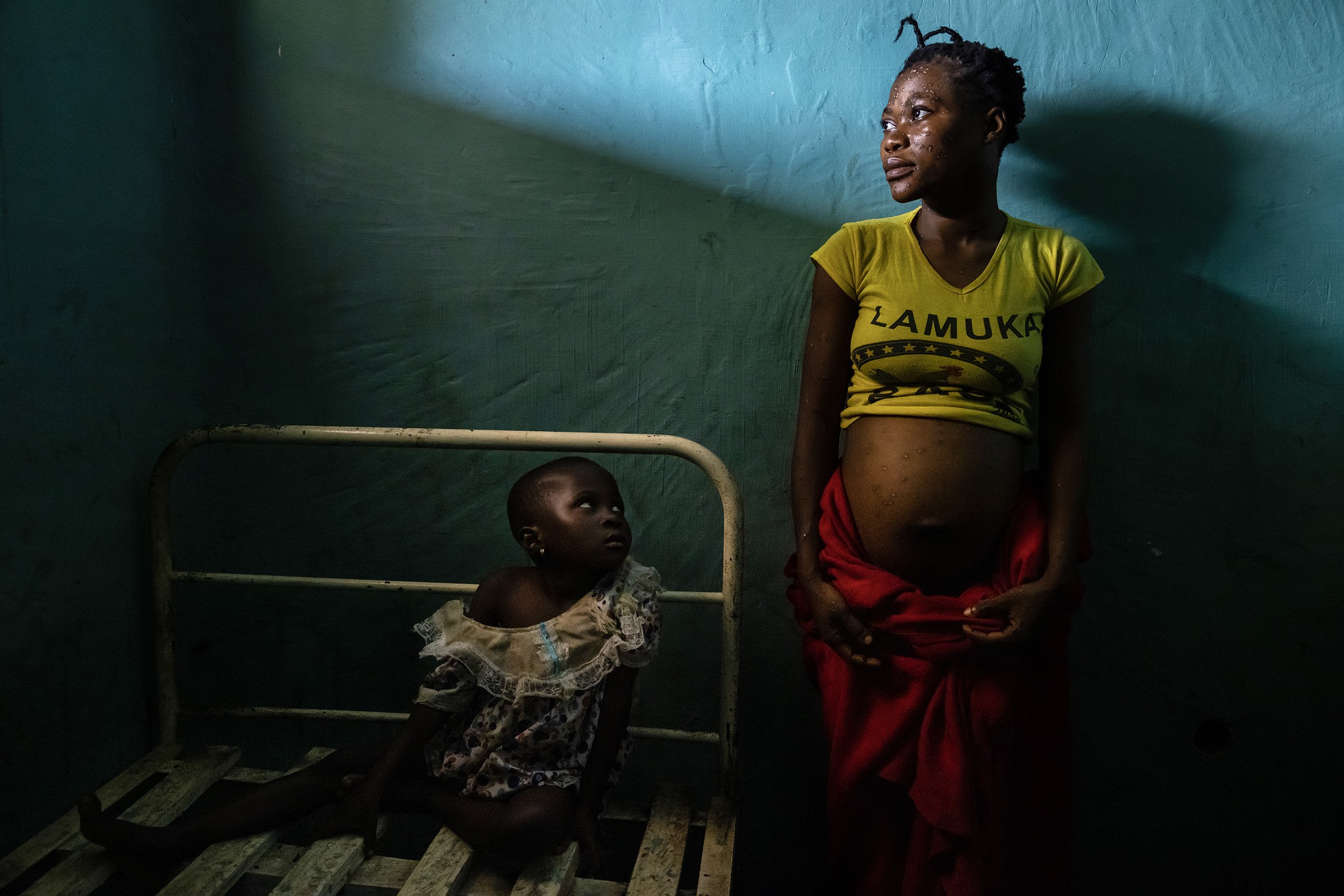
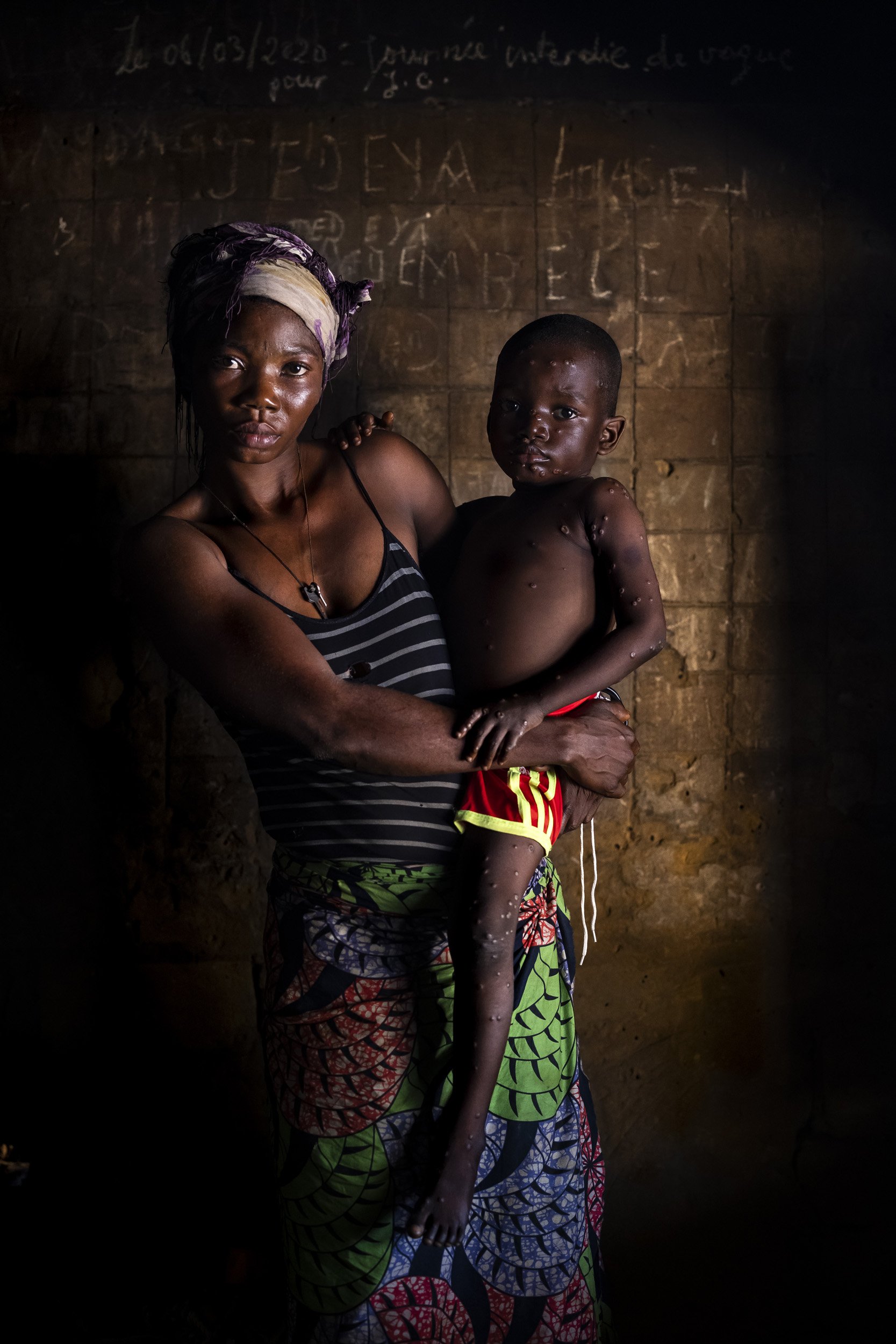
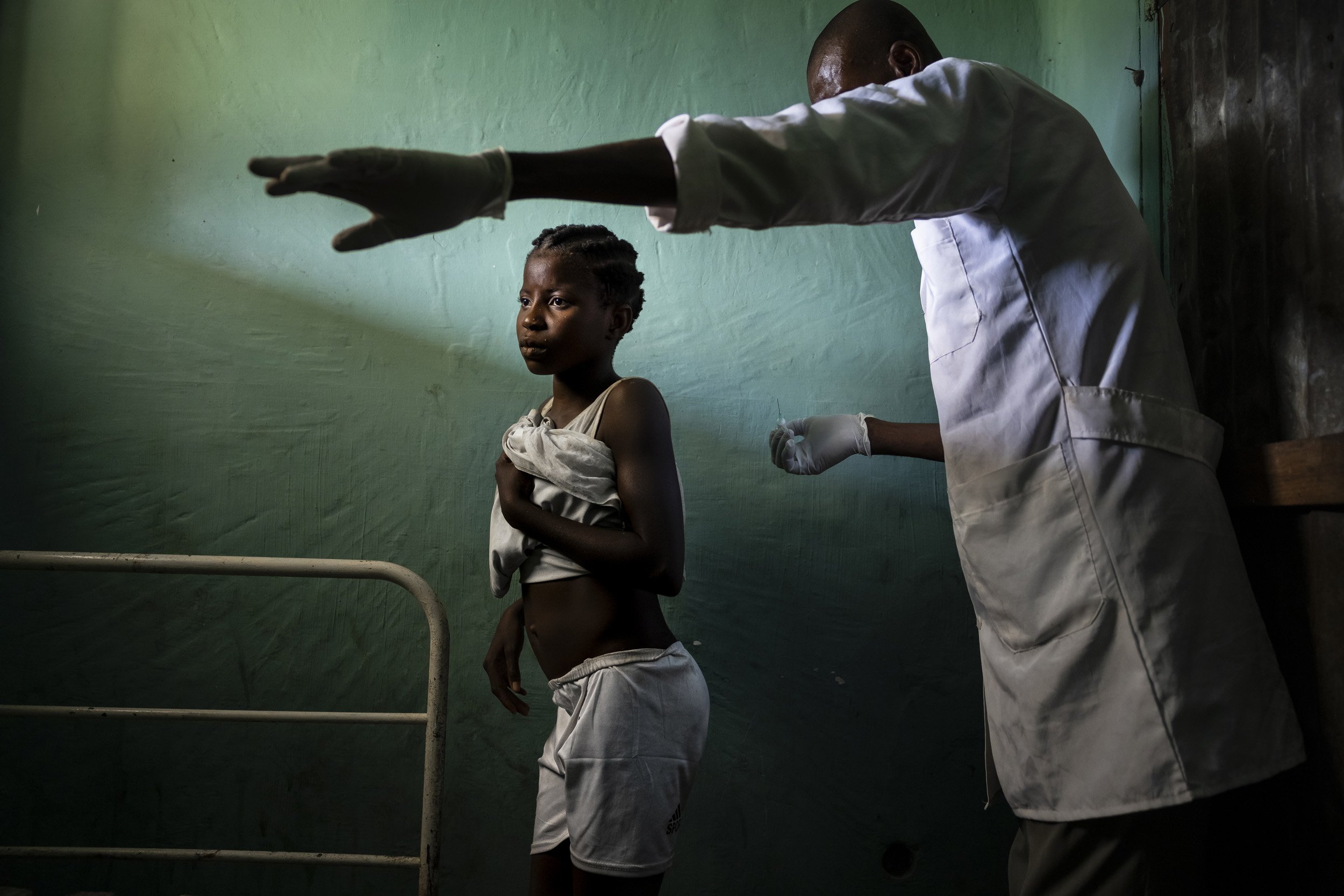
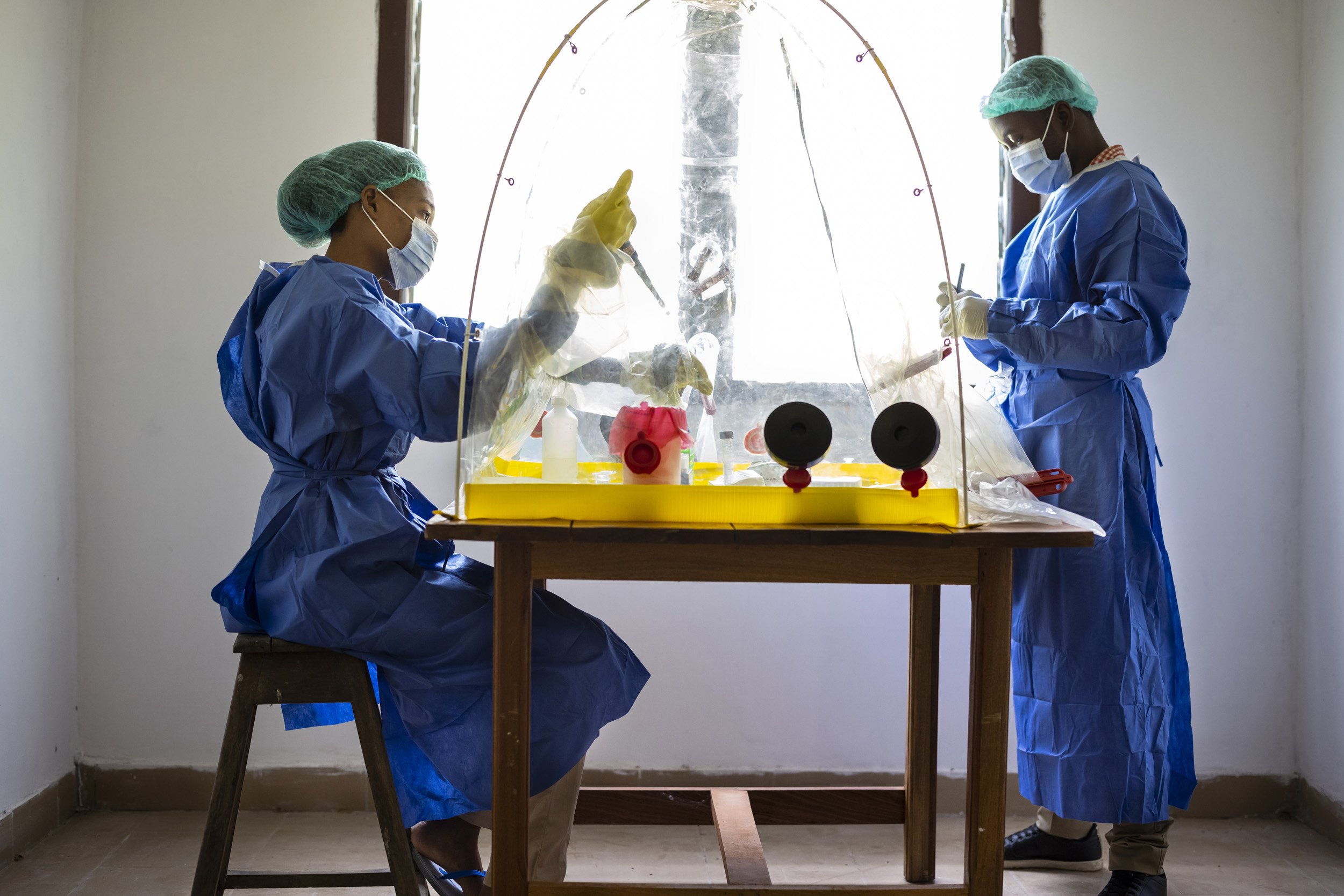
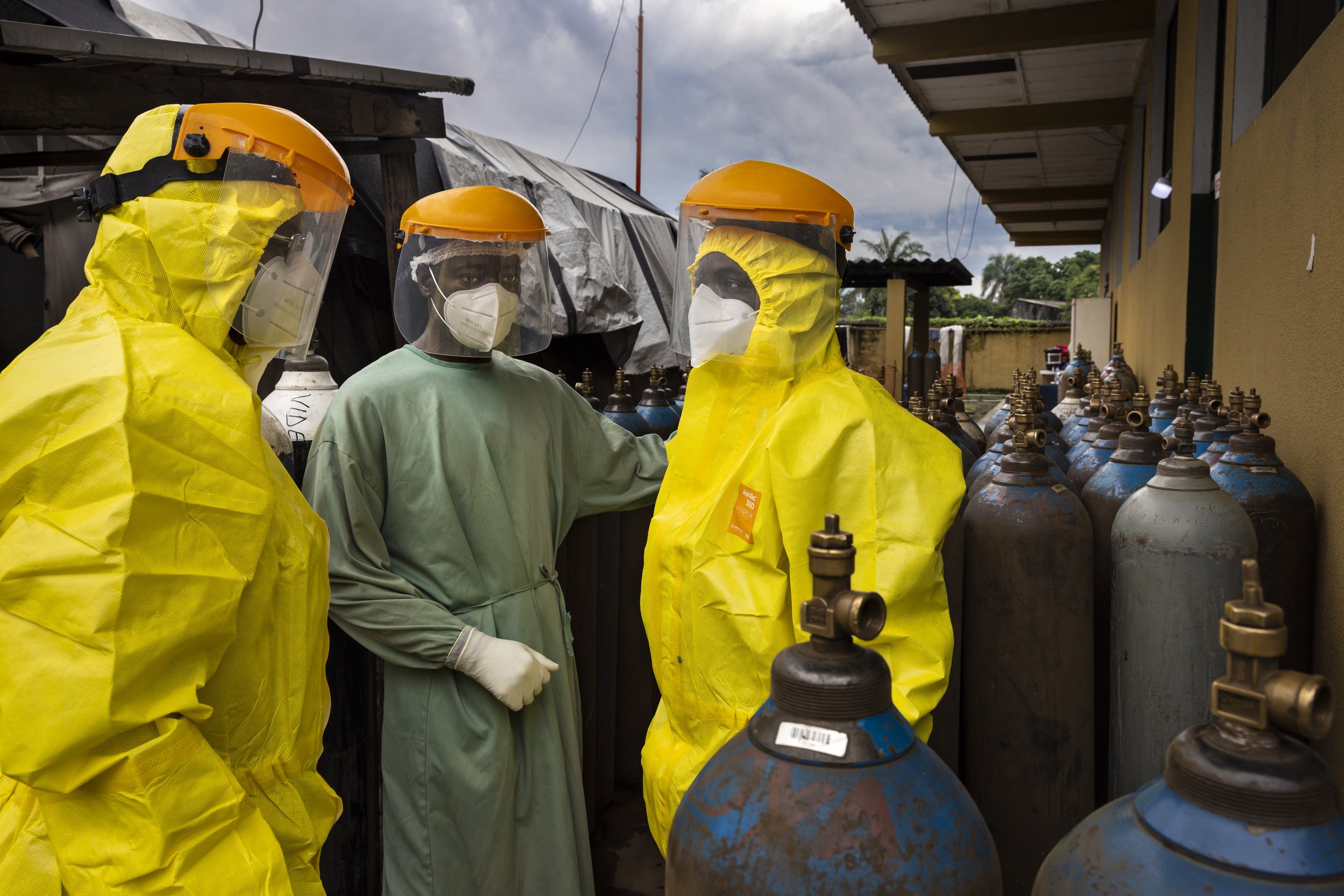
Bushmeat - Conservation, economics, alternatives and Disease. Millions of people around the world consume wild meat, it is an important economic means for hundreds of thousands of rural people. Due to its high value, wildmeat tends to be sold on by hunters. The majority of what is hunted is not consumed where it is caught. From that first sale, it moves to the nearest towns where its value triples. It is often perceived to be healthier and strong cultural beliefs reinforce this. Wildmeat travels internationally on a daily basis, most often to expat African communities in Europe but also to a huge market in Asia. One of the largest zones for the wild meat trade is across the Congo Basin. The trafficking of wildlife to cities to meet non-essential demand for bushmeat poses a major threat to many animal species. As urban populations grow, the pressures imposed on wild populations by consumer demand increases. Kinshasa, Democratic Republic of Congo (DRC), and Brazzaville, Republic of Congo (ROC), are two capital cities separated only by the Congo River. Combined, they form the third largest urban agglomeration in Africa with a total population of 15 million, with Kinshasa predicted to become the fourth largest city in the world by 2050. Alternative animal protein like beef and chicken is widely available in these cities but eating bushmeat is of social and cultural significance, therefore it is consumed as a luxury good rather than to fulfil basic food security needs. Urban bushmeat markets pose a threat to wildlife, the food security of rural communities due to resulting defaunation, and a significant zoonotic disease risk if novel pathogens are imported into populous cities. Ebola, Covid-19, SARS, Monkey-Pox and others are all a consequence of pathogens passing from wild animals into humans. In the case of the bat-hunters seen in this essay, international epidemiologists have found groups of these same bats with as high as 33% Ebola anti-body positivity as well as ot
DOUME VILLAGE, MAMENGA, GABON, 29 JUNE 2021: Two bushmeat hunters are seen at a bat cave as the bats leave the entrance. These caves are an area where these people have hunted for centuries. They pay tribute to their ancestors and settle in to wait for porcupine. This cave complex is special to these hunters and their people. It has been a famous hunting area for centuries and they come here regularly to hunt pangolin and porcupine, who shelter in the cave. The presence of the bats and pangolin, vector animals for zoonotic disease in a place where bushmeat hunters regularly kill wild animals raises questions about possible disease transmission. Pangolin are the chief suspect for Covid-19 and Bats are thought to be the reservoir animal for the specific Corona virus. The hunters village survives on fishing and bushmeat. Gabon has a sustainable bushmeat culture, largely because of its small population and large protected habitats. (photo by Brent Stirton/Getty Images for FAO, CIFOR, CIRAD, WCS)
BRAZZAVILLE, REPUBLIC OF CONGO: Fruit Bat hunters collect bats from an island a couple hours away from the capital Brazzaville. The hunters have nets strung high all over the island and harvest the bats every day of a four-month season. In peak season this can be between 100 to 150 bats per day. This is a popular bushmeat and suppliers deliver the bats twice a week to sellers. They are sold for between 500 and 1500 CFDA each, about $2 to $4 USD. They are traditionally made into a thick soup. The people who market these bats say that white people lie about Ebola and other diseases and their connection to bats. They say it is a way to force local people to buy western foods from white countries. Accepting the fact that bats are the primary vector animal for zoonotic disease is bad for business. This is despite that fact that a live Ebola virus has been isolated inside fruit bats in Guinea, proving their carrier status. It is also believed that bats play a significant role in the current Covid 19 crisis. When the bat sellers prepare the bats for clients, they are often asked to remove the wing bones and wrap the bats in their own wings. This practice is often done with the seller pulling out the bones with their teeth. This is an instant transmission issue but goes unacknowledged by these men. The trafficking of wildlife to cities to meet non-essential demand for bushmeat poses a major threat to many Central African species. As urban populations grow, the pressures imposed on wild populations by consumer demand increase. Kinshasa, Democratic Republic of Congo (DRC), and Brazzaville, Republic of Congo (ROC), are two capital cities separated only by the Congo River. Combined, they form the third largest urban agglomeration in Africa with a total population of 15 million, with Kinshasa predicted to become the fourth largest city in the world by 2050. Alternative animal protein is widely available in these cities but eating bushmeat is of social and cultural significance,
BRAZZAVILLE, REPUBLIC OF CONGO: Fruit Bat hunters collect bats from an island a couple hours away from the capital Brazzaville. The hunters have nets strung high all over the island and harvest the bats every day of a four-month season. In peak season this can be between 100 to 150 bats per day. This is a popular bushmeat and suppliers deliver the bats twice a week to sellers. They are sold for between 500 and 1500 CFDA each, about $2 to $4 USD. They are traditionally made into a thick soup. The people who market these bats say that white people lie about Ebola and other diseases and their connection to bats. They say it is a way to force local people to buy western foods from white countries. Accepting the fact that bats are the primary vector animal for zoonotic disease is bad for business. This is despite that fact that a live Ebola virus has been isolated inside fruit bats in Guinea, proving their carrier status. It is also believed that bats play a significant role in the current Covid 19 crisis. When the bat sellers prepare the bats for clients, they are often asked to remove the wing bones and wrap the bats in their own wings. This practice is often done with the seller pulling out the bones with their teeth. This is an instant transmission issue but goes unacknowledged by these men. The trafficking of wildlife to cities to meet non-essential demand for bushmeat poses a major threat to many Central African species. As urban populations grow, the pressures imposed on wild populations by consumer demand increase. Kinshasa, Democratic Republic of Congo (DRC), and Brazzaville, Republic of Congo (ROC), are two capital cities separated only by the Congo River. Combined, they form the third largest urban agglomeration in Africa with a total population of 15 million, with Kinshasa predicted to become the fourth largest city in the world by 2050. Alternative animal protein is widely available in these cities but eating bushmeat is of social and cultural significance,
BRAZZAVILLE, REPUBLIC OF CONGO: Fruit Bat sellers at the Total market in Brazzaville. This is a popular bushmeat and suppliers deliver the bats twice a week to sellers. They are sold for between 500 and 1500 CFDA each, about 2 to 4 USD. They are traditionally made into a soup. The people who market these bats say that white people lie about Ebola and other diseases and their connection to Bats. They say it is a way to force local people to buy western foods from white countries. Accepting the fact that bats are the primary vector animal for zoonotic disease is bad for business. This is despite that fact that a live Ebola virus has been isolated inside fruit bats in Guinea, proving their carrier status. It is also believed that Bats play a significant role in the current Covid 19 crisis. When the bat sellers prepare the bats for clients, they are often asked to remove the wing bones and wrap the bats in their own wings. This practice is often done with the seller pulling out the bones with their teeth. This is an instant transmission issue but goes unacknowledged by these men. The trafficking of wildlife to cities to meet non-essential demand for bushmeat poses a major threat to many Central African species. As urban populations grow, the pressures posed on wild populations by consumer demand increase. Kinshasa, Democratic Republic of Congo (DRC), and Brazzaville, Republic of Congo (ROC), are two capital cities separated only by the Congo River. Combined, they form the third largest urban agglomeration in Africa with a total population of 15 million, with Kinshasa predicted to become the fourth largest city in the world by 2050. Alternative animal protein is widely available in these cities but eating bushmeat is of social and cultural significance, therefore it is consumed as a luxury good rather than to fulfil basic food security needs. Urban bushmeat markets pose a threat to wildlife, the food security of rural communities due to resulting defaunation, and a signi
SING RIVER, MINKEBI NATIONAL PARK, GABON, JUNE 2011: An anti-poaching team composed of Gabon Parcs personal, Gabon military, Baka pygmy porters and two Pirouge pilots conduct an anti-poaching mission up the Sing River in Minkebi National Park, Gabon, 26 June 2011. Gabon has recently seen a large spate of Elephant killings as a result of thousands of illegal goldminers that had flooded into the Minkebi region to exploit a lack of the rule of law in the reserve. Approximately a month ago the Gabonese military and Gabon Parcs Department conducted a large joint operation, inviting all these illegal miners to go home to their own countries or face detention. The presence of these illegals also created a thriving illegal ivory industry, fueled by the presence of Chinese traders in Gabon and neighbouring Congo Brazzaville and Cameroon. This expedition up the Sing River was to check for the presence of these illegals and to see if they were carrying out any poaching activity. There were no sightings and now only empty mining settelements remain. It appears the initial operations have put the word out and the illegal miners and poaching villages are no more in this region of Gabon. The operation involved travelling far up the Sing River in Minkbebi Park, cutting river pathways for the pirouges and doing a thorough check for poachers all the way up the river. There are plans for a permanent "Jungle Brigade" for this region within the next 6 months and that should safeguard the borders of Gabon and its wildlife from further poaching threats. (Photo by Brent Stirton/National Geographic.)
KABO, REPUBLIC OF CONGO, 23 MAY 2021: Jonas Manguba is seen with two of three monkeys he shot on this day. Jonas has hunted since he was a child with his father, he says he shoots at least five monkeys on most of his hunts. Apart from the controlled hunt he was on today, he also hunts independently as a primary source of income, utilizing his skills and cultural legacy as a Baka pygmy bushmeat hunter. As part of a conservation project ngo's Wildlife Conservation Society and Sustainable Wildlife Management work with a logging company on three separate concessions. They allow their workers to hire these pygmies, who are excellent hunters, to hunt for them in controlled circumstances twice a month in a legal hunting area on the periphery of Nouama Ndoki National Park. Each hunter gets a rifle from the employee and 4 shotgun cartridges. They are only allowed to shoot that much, no more. They usually get to keep the entrails and a small payment. Many of these pygmies do also hunt independently but this collaboration was conceived to prevent the workers from hunting on company time in company vehicles. The hunts are twice a month for the 6 month hunting season.
KINSHASA, DEMOCRATIC REPUBLIC OF CONGO: A man coming off a recently arrived boat carries an African dwarf crocodile in Maluku port. The overall population of this species in the wild varies from estimates of 25,000 to 100,000 individuals. On the IUCN Red List, the Dwarf crocodile is classified as a Vulnerable species within its habitat. Boats which have travelled from Equateur and other regions deliver bushmeat and other goods into the busy Maluku port outside of Kinshasa. All kinds of bushmeat is available, including endangered species. Kinshasa’s ports are the first stop for suppliers to restaurants all over Kinshasa. The trafficking of wildlife to cities to meet non-essential demand for bushmeat poses a major threat to many Central African species. As urban populations grow, the pressures posed on wild populations by consumer demand increase. Kinshasa, Democratic Republic of Congo (DRC), and Brazzaville, Republic of Congo (ROC), are two capital cities separated only by the Congo River. Combined, they form the third largest urban agglomeration in Africa with a total population of 15 million, with Kinshasa predicted to become the fourth largest city in the world by 2050. Alternative animal protein is widely available in these cities but eating bushmeat is of social and cultural significance, therefore it is consumed as a luxury good rather than to fulfil basic food security needs. Urban bushmeat markets pose a threat to wildlife, the food security of rural communities due to resulting defaunation, and a significant zoonotic disease risk if novel pathogens are imported into populous cities. Wildlife Conservation Society estimates that over 33 million kilograms of bushmeat are brought into Kinshasa every year, making this the epicenter of the world bushmeat trade. . (Photo by Brent Stirton/Getty Images for National Geographic.)
OUESSO, REPUBLIC OF CONGO, 20TH MAY 2021: Bushmeat is delivered to the market from the port. The driver of the small truck carries it to the individula ladies stalls for them. The retail side of the trade is done by women. The animals travel via car, motorbike and boat. This is a town notorious for its bushmeat market. These are scenes from the wholesale market in the late afternoon where meat sellers come to buy what they will sell the next day. The vast majority of the selling is done by women. Men do the hunting and transporting. (Photo by Brent Stirton/Getty Images for National Geographic.)
OUESSO, REPUBLIC OF CONGO, 20TH MAY 2021: Bushmeat is delivered to the market from the port. The driver of the small truck carries it to the individula ladies stalls for them. The retail side of the trade is done by women. The animals travel via car, motorbike and boat. This is a town notorious for its bushmeat market. These are scenes from the wholesale market in the late afternoon where meat sellers come to buy what they will sell the next day. The vast majority of the selling is done by women. Men do the hunting and transporting. (Photo by Brent Stirton/Getty Images for National Geographic.)
OUESSO, REPUBLIC OF CONGO, 20TH MAY 2021: Ouesso is a town notorious for its bushmeat market. These are scenes from the wholesale market in the late afternoon where meat sellers come to buy what they will sell the next day. The vast majority of the selling is done by women. Men do the hunting and transporting. (Photo by Brent Stirton/Getty Images for National Geographic.)
KINSHASA, DEMOCRATIC REPUBLIC OF CONGO: African dwarf crocodiles are seen for sale in Maluku port. The overall population of this species in the wild varies from estimates of 25,000 to 100,000 individuals. On the IUCN Red List, the Dwarf crocodile is classified as a Vulnerable species within its habitat. Boats which have travelled from Equateur and other regions deliver bushmeat and other goods into the busy Maluku port outside of Kinshasa. All kinds of bushmeat is available, including endangered species. Kinshasa’s ports are the first stop for suppliers to restaurants all over Kinshasa. The trafficking of wildlife to cities to meet non-essential demand for bushmeat poses a major threat to many Central African species. As urban populations grow, the pressures posed on wild populations by consumer demand increase. Kinshasa, Democratic Republic of Congo (DRC), and Brazzaville, Republic of Congo (ROC), are two capital cities separated only by the Congo River. Combined, they form the third largest urban agglomeration in Africa with a total population of 15 million, with Kinshasa predicted to become the fourth largest city in the world by 2050. Alternative animal protein is widely available in these cities but eating bushmeat is of social and cultural significance, therefore it is consumed as a luxury good rather than to fulfil basic food security needs. Urban bushmeat markets pose a threat to wildlife, the food security of rural communities due to resulting defaunation, and a significant zoonotic disease risk if novel pathogens are imported into populous cities. Wildlife Conservation Society estimates that over 33 million kilograms of bushmeat are brought into Kinshasa every year, making this the epicenter of the world bushmeat trade. . (Photo by Brent Stirton/Getty Images for National Geographic.)
OUESSO, REPUBLIC OF CONGO, 20TH MAY 2021: Ouesso is a town notorious for its bushmeat market. These are scenes from the wholesale market in the late afternoon where meat sellers come to buy what they will sell the next day. The vast majority of the selling is done by women. (Photo by Brent Stirton/Getty Images for National Geographic.)
OUESSO, REPUBLIC OF CONGO, 20TH MAY 2021: Ouesso is a town notorious for its bushmeat market. These are scenes from the wholesale market in the late afternoon where meat sellers come to buy what they will sell the next day. The vast majority of the selling is done by women. Men do the hunting and transporting. (Photo by Brent Stirton/Getty Images for National Geographic.)
OUESSO, REPUBLIC OF CONGO, 20TH MAY 2021: Female bushmeat seller attempt to hide a pangolin, an endangered species and forbidden in the market. Ouesso is a town notorious for its bushmeat market. These are scenes from the wholesale market in the late afternoon where meat sellers come to buy what they will sell the next day. The vast majority of the selling is done by women. (Photo by Brent Stirton/Getty Images for National Geographic.)
OUESSO, REPUBLIC OF CONGO, 20TH MAY 2021: Ouesso is a town notorious for its bushmeat market. These are scenes from the wholesale market in the late afternoon where meat sellers come to buy what they will sell the next day. The vast majority of the selling is done by women. Men do the hunting and transporting. (Photo by Brent Stirton/Getty Images for National Geographic.)
OUESSO, REPUBLIC OF CONGO, 20TH MAY 2021: Ouesso is a town notorious for its bushmeat market. These are scenes from the wholesale market in the late afternoon where meat sellers come to buy what they will sell the next day. The vast majority of the selling is done by women. Men do the hunting and transporting. (Photo by Brent Stirton/Getty Images for National Geographic.)
KINSHASA, DEMOCRATIC REPUBLIC OF CONGO: A man and his wife unpack a bushmeat package of 54 monkeys that they have just unloaded from a boat in Maluku port. There are two different species. The couple say they have a shotgun with relatives in the Equateur region and hunt with that. They make the trip every two weeks. They pay taxes on arrival but there is no problem with the authorities. They say they will sell all of the monkeys within one day in Kinshasa, they are a popular form of bushmeat with consumers. One monkey sells for around $15 in the port, more in the city. Boats which have travelled from Equateur and other regions deliver bushmeat and other goods into the busy Maluku port outside of Kinshasa. All kinds of bushmeat is available, including endangered species. Kinshasa’s ports are the first stop for suppliers to restaurants all over Kinshasa. The trafficking of wildlife to cities to meet non-essential demand for bushmeat poses a major threat to many Central African species. As urban populations grow, the pressures posed on wild populations by consumer demand increase. Kinshasa, Democratic Republic of Congo (DRC), and Brazzaville, Republic of Congo (ROC), are two capital cities separated only by the Congo River. Combined, they form the third largest urban agglomeration in Africa with a total population of 15 million, with Kinshasa predicted to become the fourth largest city in the world by 2050. Alternative animal protein is widely available in these cities but eating bushmeat is of social and cultural significance, therefore it is consumed as a luxury good rather than to fulfil basic food security needs. Urban bushmeat markets pose a threat to wildlife, the food security of rural communities due to resulting defaunation, and a significant zoonotic disease risk if novel pathogens are imported into populous cities. Wildlife Conservation Society estimates that over 33 million kilograms of bushmeat are brought into Kinshasa every year, making this the epicen
KINSHASA, DEMOCRATIC REPUBLIC OF CONGO: A man and his wife unpack a bushmeat package of 54 monkeys that they have just unloaded from a boat in Maluku port. There are two different species. The couple say they have a shotgun with relatives in the Equateur region and hunt with that. They make the trip every two weeks. They pay taxes on arrival but there is no problem with the authorities. They say they will sell all of the monkeys within one day in Kinshasa, they are a popular form of bushmeat with consumers. One monkey sells for around $15 in the port, more in the city. Boats which have travelled from Equateur and other regions deliver bushmeat and other goods into the busy Maluku port outside of Kinshasa. All kinds of bushmeat is available, including endangered species. Kinshasa’s ports are the first stop for suppliers to restaurants all over Kinshasa. The trafficking of wildlife to cities to meet non-essential demand for bushmeat poses a major threat to many Central African species. As urban populations grow, the pressures posed on wild populations by consumer demand increase. Kinshasa, Democratic Republic of Congo (DRC), and Brazzaville, Republic of Congo (ROC), are two capital cities separated only by the Congo River. Combined, they form the third largest urban agglomeration in Africa with a total population of 15 million, with Kinshasa predicted to become the fourth largest city in the world by 2050. Alternative animal protein is widely available in these cities but eating bushmeat is of social and cultural significance, therefore it is consumed as a luxury good rather than to fulfil basic food security needs. Urban bushmeat markets pose a threat to wildlife, the food security of rural communities due to resulting defaunation, and a significant zoonotic disease risk if novel pathogens are imported into populous cities. Wildlife Conservation Society estimates that over 33 million kilograms of bushmeat are brought into Kinshasa every year, making this the epicen
OUESSO, REPUBLIC OF CONGO, 20TH MAY 2021: Bushmeat scenes from the port of Ouesso. The animals travel via car, motorbike and boat. This is a town notorious for its bushmeat market. These are scenes from the wholesale market in the late afternoon where meat sellers come to buy what they will sell the next day. The vast majority of the selling is done by women. Men do the hunting and transporting. (Photo by Brent Stirton/Getty Images for National Geographic.)
ROAD TO OUESSO, REPUBLIC OF CONGO, 20TH MAY 2021: A car is seen loaded with bushmeat on the road close to Odzala National Park in Republic of Congo. The driver and his female client are headed for the bushmeat market in Ouesso, a nearby town notorious for its bushmeat market. It is illegal to transport more than a certain number of animals in a vehicle in the Republic of Congo but this is ignored by the authorities or a small bribe is paid. New road infrastructure in the Congo basin has made transportation between wild areas and the cities easy. As a result, there is far more trafficking of animals.
LASTOURSVILLE, GABON, 29 JUNE 2021: A forest antelope is delivered to town via pirogue along with a water snake. Bushmeat is regularly on the menu in restaurant in this region. Rivers are one of the most common means by which wild meat is brought out of the jungle and into cities where its value is much higher.
KINSHASA, DEMOCRATIC REPUBLIC OF CONGO: African dwarf crocodiles are seen for sale in Maluku port. The overall population of this species in the wild varies from estimates of 25,000 to 100,000 individuals. On the IUCN Red List, the Dwarf crocodile is classified as a Vulnerable species within its habitat. Boats which have travelled from Equateur and other regions deliver bushmeat and other goods into the busy Maluku port outside of Kinshasa. All kinds of bushmeat is available, including endangered species. Kinshasa’s ports are the first stop for suppliers to restaurants all over Kinshasa. The trafficking of wildlife to cities to meet non-essential demand for bushmeat poses a major threat to many Central African species. As urban populations grow, the pressures posed on wild populations by consumer demand increase. Kinshasa, Democratic Republic of Congo (DRC), and Brazzaville, Republic of Congo (ROC), are two capital cities separated only by the Congo River. Combined, they form the third largest urban agglomeration in Africa with a total population of 15 million, with Kinshasa predicted to become the fourth largest city in the world by 2050. Alternative animal protein is widely available in these cities but eating bushmeat is of social and cultural significance, therefore it is consumed as a luxury good rather than to fulfil basic food security needs. Urban bushmeat markets pose a threat to wildlife, the food security of rural communities due to resulting defaunation, and a significant zoonotic disease risk if novel pathogens are imported into populous cities. Wildlife Conservation Society estimates that over 33 million kilograms of bushmeat are brought into Kinshasa every year, making this the epicenter of the world bushmeat trade. . (Photo by Brent Stirton/Getty Images for National Geographic.)
BRAZZAVILLE, REPUBLIC OF CONGO: Women are seen selling a variety of bushmeat at a night market in Brazzaville. The trafficking of wildlife to cities to meet non-essential demand for bushmeat poses a major threat to many Central African species. As urban populations grow, the pressures posed on wild populations by consumer demand increase. Kinshasa, Democratic Republic of Congo (DRC), and Brazzaville, Republic of Congo (ROC), are two capital cities separated only by the Congo River. Combined, they form the third largest urban agglomeration in Africa with a total population of 15 million, with Kinshasa predicted to become the fourth largest city in the world by 2050. Alternative animal protein is widely available in these cities but eating bushmeat is of social and cultural significance, therefore it is consumed as a luxury good rather than to fulfil basic food security needs. Urban bushmeat markets pose a threat to wildlife, the food security of rural communities due to resulting defaunation, and a significant zoonotic disease risk if novel pathogens are imported into populous cities. Wildlife Conservation Society estimates that over 33 million kilograms of bushmeat are brought into Kinshasa every year, making this region the epicenter of the world bushmeat trade. (Photo by Brent Stirton/Getty Images for National Geographic Magazine.)
KINSHASA, DEMOCRATIC REPUBLIC OF CONGO: A group of men sell live bushmeat species by the side of the road in Kinshasa. Some of these species are highly endangered, such as the pangolin. The men say there is no issue with the authorities and state that the wildlife authorties often buy from them as they have the right connections to make a greater profit. They state that there are only restrictions in the areas where the animals are hunted but none in the cities they are trafficked to.these men were selling the pangolin for $60 and say they usually sell those to the Chinese. The trafficking of wildlife to cities to meet non-essential demand for bushmeat poses a major threat to many Central African species. As urban populations grow, the pressures posed on wild populations by consumer demand increase. Kinshasa, Democratic Republic of Congo (DRC), and Brazzaville, Republic of Congo (ROC), are two capital cities separated only by the Congo River. Combined, they form the third largest urban agglomeration in Africa with a total population of 15 million, with Kinshasa predicted to become the fourth largest city in the world by 2050. Alternative animal protein is widely available in these cities but eating bushmeat is of social and cultural significance, therefore it is consumed as a luxury good rather than to fulfil basic food security needs. Urban bushmeat markets pose a threat to wildlife, the food security of rural communities due to resulting defaunation, and a significant zoonotic disease risk if novel pathogens are imported into populous cities. Wildlife Conservation Society estimates that over 33 million kilograms of bushmeat are brought into Kinshasa every year, making this the epicenter of the world bushmeat trade. . (Photo by Brent Stirton/Getty Images for National Geographic.)
KINSHASA, DEMOCRATIC REPUBLIC OF CONGO: A woman prepares two African dwarf crocodiles for consumption at a local restaurant in Maluku port. This is a popular dish that can be sold for substantial profit. The overall population of this species in the wild varies from estimates of 25,000 to 100,000 individuals. On the IUCN Red List, the Dwarf crocodile is classified as a Vulnerable species within its habitat. Boats which have travelled from Equateur and other regions deliver bushmeat and other goods into the busy Maluku port outside of Kinshasa. All kinds of bushmeat is available, including endangered species. Kinshasa’s ports are the first stop for suppliers to restaurants all over Kinshasa. The trafficking of wildlife to cities to meet non-essential demand for bushmeat poses a major threat to many Central African species. As urban populations grow, the pressures posed on wild populations by consumer demand increase. Kinshasa, Democratic Republic of Congo (DRC), and Brazzaville, Republic of Congo (ROC), are two capital cities separated only by the Congo River. Combined, they form the third largest urban agglomeration in Africa with a total population of 15 million, with Kinshasa predicted to become the fourth largest city in the world by 2050. Alternative animal protein is widely available in these cities but eating bushmeat is of social and cultural significance, therefore it is consumed as a luxury good rather than to fulfil basic food security needs. Urban bushmeat markets pose a threat to wildlife, the food security of rural communities due to resulting defaunation, and a significant zoonotic disease risk if novel pathogens are imported into populous cities. Wildlife Conservation Society estimates that over 33 million kilograms of bushmeat are brought into Kinshasa every year, making this the epicenter of the world bushmeat trade. . (Photo by Brent Stirton/Getty Images for National Geographic.)
DJA NATIONAL PARK, SALOMA, CAMEROON, 11 AUGUST 2018: Cameroonian women cook bushmeat, in this case a porcupine and a cervil cat. (Photo by Brent Stirton/Getty Images for National Geographic Magazine.)
KABO, REPUBLIC OF CONGO, 23 MAY 2021: Images of Baka pygmy bushmeat hunters. As part of a conservation project WCS and SWM work with a logging concession on three separate concessions. They allow their workers to hire these pygmies, who are excellent hunters, to hunt for them in controlled circumstances twice a month in a legal hunting area on the periphery of Nouama Ndoki National Park. Each hunter gets a rifle from the employee and 4 shotgun cartridges. They are only allowed to shoot that much, no more. They usually get to keep the entrails and a small payment. Many of these pygmies do also hunt independently but this collaboration with the logging concessions involves weighing and counting the animals too. It was conceived to prevent the workers from hunting on company time in company vehicles. The hunts are twice a month for the 6 month hunting season. (Photo by Brent Stirton/Getty Images for National Geographic.)
KABO, REPUBLIC OF CONGO, 23 MAY 2021: Images of Baka pygmy bushmeat hunters. As part of a conservation project WCS and SWM work with a logging concession on three separate concessions. They allow their workers to hire these pygmies, who are excellent hunters, to hunt for them in controlled circumstances twice a month in a legal hunting area on the periphery of Nouama Ndoki National Park. Each hunter gets a rifle from the employee and 4 shotgun cartridges. They are only allowed to shoot that much, no more. They usually get to keep the entrails and a small payment. Many of these pygmies do also hunt independently but this collaboration with the logging concessions involves weighing and counting the animals too. It was conceived to prevent the workers from hunting on company time in company vehicles. The hunts are twice a month for the 6 month hunting season. (Photo by Brent Stirton/Getty Images for National Geographic.)
DOUME VILLAGE, CLOSE TO LASTOURSVILLE, GABON, 29 JUNE 2021: Two bushmeat hunter listen to forest elephant very close by as the hunters search for antelope and porcupine in the forest close to Doume. They are seen using their shotgun to imitate the sound of elephants trumpeting. The hunters are in an area with many elephants and in order to avoid danger, they announce their presene this way. Forest elephants are dangerous due to heavy poaching and most bushmeat hunters try to avoid them. Their village survives on fishing and bushmeat. Gabon has a sustainable bushmeat culture, largely because of its small population and large protected habitats. (photo by Brent Stirton/Getty Images for FAO, CIFOR, CIRAD, WCS)
KABO, REPUBLIC OF CONGO, 23 MAY 2021: Images of Baka pygmy bushmeat hunters. As part of a conservation project WCS and SWM work with a logging concession on three separate concessions. They allow their workers to hire these pygmies, who are excellent hunters, to hunt for them in controlled circumstances twice a month in a legal hunting area on the periphery of Nouama Ndoki National Park. Each hunter gets a rifle from the employee and 4 shotgun cartridges. They are only allowed to shoot that much, no more. They usually get to keep the entrails and a small payment. Many of these pygmies do also hunt independently but this collaboration with the logging concessions involves weighing and counting the animals too. It was conceived to prevent the workers from hunting on company time in company vehicles. The hunts are twice a month for the 6 month hunting season. (Photo by Brent Stirton/Getty Images for National Geographic.)
VILLAGE NDAMBI, AREA OF LASTOURSVILLE, GABON, 30 JUNE 2021: Rick Lindzondzo is a talented bushmeat hunter , he is seen skinning and preparing the Duiker and Antelope he killed the previous night in the forest around the village of Ndambi, one of a number of villages in the area where SWM has relations and regular monitoring for bushmeat consumption. Night hunting is controversial and there is talk of banning it in Gabon. (photo by Brent Stirton/Getty Images for FAO, CIFOR, CIRAD, WCS)
MASAAI MARA NATIONAL RESERVE, KENYA, FEBRUARY 2010. Four Tanzanian poachers are arrested for killing a hippo inside the Masaai Mara National Reserve, Kenya, 21 February 2010. The anti-poaching park rangers are all Masaai men with a strong interest in conserving the wildlife legacy of the Masaai Mara. Traditionally pastoralists, the Masaai are increasingly considering conservation alternatives on their traditional land as an alternative. Drought, increasing overpopulation, shrinking grazing land are a few of the reasons for this shift in cultural values. (Photo by Brent Stirton/Reportage by Getty Images)
CHONDO, VIRUNGA NATIONAL PARK, DEMOCRATIC REPUBLIC OF CONGO: ICCN Congolese conservation rangers capture poachers suspected of killing an elephant. Many of these poachers are involved in this activity due to poverty, others are there to supply the rebel FDLR group with food and ivory. The FDLR are the hardcore Hutu's who were behind the Rwandan massacre of 1994. (Photo by Brent Stirton/Gettyimages.)
LWIRO, EASTERN DEMOCRATIC REPUBLIC OF CONGO: A caregiver at Lwiro Chimpanzee rescue center and sanctuary is seen in her room with a recently rescued baby chimp who is recovering from trauma. These young rescue chimps live in the house and are raised like children until they can be released into the large sanctuary cages with the other chimps. Many of the caregivers at this sanctuary are victims of conflict, a number have been raped, displaced or wounded. They see their relationship with these chimps as healing for themselves as much as they are healing the chimps. These chimps are all rescues and come from the bushmeat trade in DRC after their mothers were killed for bushmeat. The babies are often taken for sale and sometimes for pets. As a result many of these chimps have lived lives of isolation, suffering and cruelty. The sanctuary is a place where they can learn to be chimps for the first time and interact with other chimps. They were brought to the sanctuary after being rescued either by the Congolese Conservation authority or the Lwiro staff.
VIRUNGA, DEMOCRATIC REPUBLIC OF CONGO: Mazuka, a young mountain gorilla orphan, is seen with head caregiver Andre in the Senkwekwe Mountain Gorilla orphan center at the park headquarters of Rumangabo. Mazuka is a victim of snaring, a technique where wire snares are used by bushmeat hunters to indiscriminately trap animals of all kinds. When Mazuka was found, the damage from the snare was too great and her foot had to be amputated as a result. She is withdrawn and shy as a result. A great deal of bushmeat is captured through the use of snares, often thousands of cheap wire snares are laid out over an area in an attempt to capture as many animals as possible for commercial profit. These snares ensure that the animals die a brutal death, often by starvation or suffocation. In many cases, the snares will be pulled out of their anchor point by animals and dragged around, the limb slowly dying. (Photo by Brent Stirton/Getty Images for National Geographic.)
AMBOSELI, KENYA, MAY 2011: Members of a combined Big Life conservation foundation team and Kenya Wildlife Services Rangers discover a snared Giraffe in the Amboseli ecosystem, Kenya, May 29, 2011. KWS has the mandate to protect wildlife in Kenya but lack the manpower and resources. Organisations like Big Life are the private sector arm of KWS in the 2 million acre Amboseli ecosystem, working alongside them to supply manpower, vehicles, funding, information networks and aircraft to practise effective conservation in the region. (Photo by Brent Stirton/Reportage for National Geographic Magazine.)
MBOKI, CENTRAL AFRICAN REPUBLIC, 25 NOVEMBER 2014: Soldiers on patrol from the African Union Ugandan Armed forces, UPDF, base at Mboki, Central African Republic. The Ugandan contingent based here are focused on the aprehension of the Lord's Resistance Army, LRA, the notorious rebel group led by Joseph Kony which has terrorized citizens of Uganda, C.A.R, South Sudan and the Democratic Republic of Congo for the last 4 decades. Soldiers are seen crossing a river, a technique they have perfected with ropes despite the fact that many of the men cannot swim. Captain (Photo by Brent Stirton/Reportage by Getty Images for National Geographic Magazine.)
RUPUNUNI RIVER, GUYANA: Herman Phillips, 63, has lived his whole life in the Rupununi region bases on a subsistence existence. He believes that is his natural right as an indigenous person in the Rupununi. He fishes uses his bow and arrow, nets and lines and he hunts in the forest. This is how he has fed and clothed his 8 children and he would like to see that be an option for them too. Members of the Sustainable Wildlife Management Program, SWM, on a Rupununi River expedition with partners, the South Rupununi Conservation Society. This trip focused on fishing, bow-fishing and local hunting and lifestyles. It also took in the condition of the river and the sidecreeks employed by locals for food and shelter and occasional gold mining prospecting. In the Rupununi region, on Amerindian land, everything is ruled by the village and they control hunting and fishing. In the protected areas, the villages and government partner on these things. The Rupununi Region is located in the southwest of Guyana. It consists mostly of large tracts of primary forest, with about 20% of its land area covered by natural Neotropical savanna and seasonally flooded wetlands. The region has approximately 24,000 inhabitants, including indigenous groups that rely on subsistence hunting, fishing and farming. During recent years, fish populations have declined, and similar trends are being observed for terrestrial wildlife. Studies indicate that hunting-dependent livelihoods are sustainable within indigenous lands. Scenarios highlight the probability of future disruption due to infrastructure development, competition with other more lucrative land uses, climate change, and cultural transformation. While conservation efforts are evolving in the Rupununi, there is a need to foster long-term sustainable management practices. In addition, there is a need to share lessons learnt that may be valuable in other Caribbean and Amazonian countries. The SWM Guyana project is building upon existing strategie
RUPUNUNI RIVER, GUYANA: Leon Baird, 32, is seen bow-fishing in a creek on the Rupununi river. He uses torchlight at night to attract the fish. Leoon has ancestry from both the Macushi and Arawak tribe and made his first trip on the Rupununi at age ten. He works as a guide and as a boat pilot but still lives sustainably off the land by hunting and fishing. Members of the Sustainable Wildlife Management Program, SWM, were on a Rupununi River expedition with partners, the South Rupununi Conservation Society. This trip focused on fishing, bow-fishing and local hunting and lifestyles. It also took in the condition of the river and the sidecreeks employed by locals for food and shelter and occasional gold mining prospecting. In the Rupununi region, on Amerindian land, everything is ruled by the village and they control hunting and fishing. In the protected areas, the villages and government partner on these things. The Rupununi Region is located in the southwest of Guyana. It consists mostly of large tracts of primary forest, with about 20% of its land area covered by natural Neotropical savanna and seasonally flooded wetlands. The region has approximately 24,000 inhabitants, including indigenous groups that rely on subsistence hunting, fishing and farming. During recent years, fish populations have declined, and similar trends are being observed for terrestrial wildlife. Studies indicate that hunting-dependent livelihoods are sustainable within indigenous lands. Scenarios highlight the probability of future disruption due to infrastructure development, competition with other more lucrative land uses, climate change, and cultural transformation. While conservation efforts are evolving in the Rupununi, there is a need to foster long-term sustainable management practices. In addition, there is a need to share lessons learnt that may be valuable in other Caribbean and Amazonian countries. The SWM Guyana project is building upon existing strategies, visions and development pl
KARASABAI, SOUTH PAKARAIMAS, GUYANA: Sherika Khan sits outside at a table with her father’s hunting bow and arrows next to her. She is waiting to say goodbye to him before he goes huniting that night. Egbert Khan, her father, is preparing to set out to hunt Armadillos in the nearby forest. Hunting and fishing are the mainstay of their subsistence existence, it is the way that most indigenous people from this region feed their families. (Photo by Brent Stirton/Getty Images for FAO)
GEORGETOWN, GUYANA, 15TH FEBRUARY 2020: A wildmeat hunter and trader, name withheld, is seen selling wildmeat at a roadside market in Georgetown. He says he has been doing this job for over 20 years, starting when he shot animals who were raiding crops on the farm he grew up on. He feels there are more than enough animals to sustain his business but says that mining and other industrial activities have disturbed the animals so he must go further to reach them. He also says that the police have become more serious with the new legislation but there is no real enforcement. He still sees a number of hunters with bow and arrow. He uses a single pellet shotgun for most of his hunting and often does so at night. He shoot peccary, capybara, tapier, deer and bush hogs. In times of drought, he says it is easier for him as the animals must come to water. He says, “Guyana has 83000 square kilometers, there are lots of animals. It says in the bible that God created animals as food for us.” He adds that there are more and more Chinese in Guyana and they are interested in the big cats – jaguars and panthers. “They want the testicles and the claws and the teeth.” (Photo by Brent Stirton/Getty Images for FAO)
EPULU, ITURI, DEMOCRATIC REPUBLIC OF CONGO: Images of a Mbuti pygmy hunting group inside the forest in Okapi National Reserve. The Mbuti pygmies hunt wild meat in a sustainable manner, using nets they have created from forest vines. They conduct brief ceremonies asking for a good hunt, the men then lay out the nets in a long line in the forest while the women move through the forest, shouting and making a noise, driving any animals towards the nets. The Mbuti have a 15 to 20% success rate, similar to a lion. This is what makes this practice sustainable. Larger animals simply break through the net, meaning small duikers and other smaller animals make up the majority of capture. There are around 2300 Mbuti in the reserve, mostly living in harmony with the forest. It is when pygmies are co-opted by other parties for their hunting skills that that harmony is broken. Centuries of ill-treatment by the Bantu people have reduced pygmies in many areas to indentured servitude and a state of survival. Illegal mining camps in Epulu, some very large and politically connected, use pygmies to hunt bushmeat for the miners, supplying them with shotguns and shells and paying them with part of what they can shoot. The pygmies are also forced to hunt by the Congolese Army who protect many of the illegal mining areas. (Photo by Brent Stirton/Getty Images for National Geographic.)
EPULU, ITURI, DEMOCRATIC REPUBLIC OF CONGO: Images of a Mbuti pygmy hunting group inside the forest in Okapi National Reserve. The Mbuti pygmies hunt wild meat in a sustainable manner, using nets they have created from forest vines. They conduct brief ceremonies asking for a good hunt, the men then lay out the nets in a long line in the forest while the women move through the forest, shouting and making a noise, driving any animals towards the nets. The Mbuti have a 15 to 20% success rate, similar to a lion. This is what makes this practice sustainable. Larger animals simply break through the net, meaning small duikers and other smaller animals make up the majority of capture. There are around 2300 Mbuti in the reserve, mostly living in harmony with the forest. It is when pygmies are co-opted by other parties for their hunting skills that that harmony is broken. Centuries of ill-treatment by the Bantu people have reduced pygmies in many areas to indentured servitude and a state of survival. Illegal mining camps in Epulu, some very large and politically connected, use pygmies to hunt bushmeat for the miners, supplying them with shotguns and shells and paying them with part of what they can shoot. The pygmies are also forced to hunt by the Congolese Army who protect many of the illegal mining areas. (Photo by Brent Stirton/Getty Images for National Geographic.)
EPULU, ITURI, DEMOCRATIC REPUBLIC OF CONGO: Images of a Mbuti pygmy hunting group inside the forest in Okapi National Reserve. The Mbuti pygmies hunt wild meat in a sustainable manner, using nets they have created from forest vines. They conduct brief ceremonies asking for a good hunt, the men then lay out the nets in a long line in the forest while the women move through the forest, shouting and making a noise, driving any animals towards the nets. The Mbuti have a 15 to 20% success rate, similar to a lion. This is what makes this practice sustainable. Larger animals simply break through the net, meaning small duikers and other smaller animals make up the majority of capture. There are around 2300 Mbuti in the reserve, mostly living in harmony with the forest. It is when pygmies are co-opted by other parties for their hunting skills that that harmony is broken. Centuries of ill-treatment by the Bantu people have reduced pygmies in many areas to indentured servitude and a state of survival. Illegal mining camps in Epulu, some very large and politically connected, use pygmies to hunt bushmeat for the miners, supplying them with shotguns and shells and paying them with part of what they can shoot. The pygmies are also forced to hunt by the Congolese Army who protect many of the illegal mining areas. (Photo by Brent Stirton/Getty Images for National Geographic.)
BRAZZAVILLE, REPUBLIC OF CONGO: Honor Toudissa is an influential Chef in the Brazzaville/Kinshasa region. Honor is a believer in traditional Congolese cuisine but is not a believer in the use of bushmeat. He feels it is too expensive, too elitist and bad for the environment. Honor is seen buying Mpose worms while a bat seller tries to offer him bats for a good price. Honor wants to cook food from every day ingredients people can afford and he is also interested in insects as an affordable protein source. As a result, Honor is part of the Willife Conservation Society’s anti bushmeat campaign as an influencer voice. He runs a small restaurant in Poto-Poto (3rd arrondissement of Brazzaville), trains young cooks in the promotion of local dishes and works on the creation of a Liboke village, a kind of academy of Congolese gastronomy. Honor works with mentally handicapped kids twice a week and has done for the last 20 years. (Photo by Brent Stirton/Getty Images for National Geographic.}
BRAZZAVILLE, REPUBLIC OF CONGO: Honor Toudissa is an influential Chef in the Brazzaville/Kinshasa region. He is seen preparing and serving dishes made from insects in his restaurant. Honor is a believer in traditional Congolese cuisine but is not a believer in the use of bushmeat. He feels it is too expensive, too elitist and bad for the environment. He wants to cook food from every day ingredients people can afford and he is also interested in insects as an affordable protein source. As a result, Honor is part of the Willife Conservation Society’s anti bushmeat campaign as an influencer voice. He runs a small restaurant in Poto-Poto (3rd arrondissement of Brazzaville), trains young cooks in the promotion of local dishes and works on the creation of a Liboke village, a kind of academy of Congolese gastronomy. Honor works with mentally handicapped kids twice a week and has done for the last 20 years. (Photo by Brent Stirton/Getty Images for National Geographic.}
KINSHASA, DR CONGO: Orphans at the Centre Orphelinat Lisanga ya Klisto prepare Mpose for a meal. This is palm weevil larva which is a popular and much cheaper alternative protein in DR Congo but not yet produced in significant enough quantities to really combat the bushmeat trade at this stage. Farms for Orphans is a local NGO that specializes in breeding Mpose. They supply orphanages in Kinshasa on a regular basis. They are currently in talks over partnership with the Wildlife Conservation Society to introduce mpose farming in communities surrounding Congo’s national parks. The trafficking of wildlife to cities to meet non-essential demand for bushmeat poses a major threat to many Central African species. As urban populations grow, the pressures posed on wild populations by consumer demand increase. Kinshasa, Democratic Republic of Congo (DRC), and Brazzaville, Republic of Congo (ROC), are two capital cities separated only by the Congo River. Combined, they form the third largest urban agglomeration in Africa with a total population of 15 million, with Kinshasa predicted to become the fourth largest city in the world by 2050. Alternative animal protein is widely available in these cities but eating bushmeat is of social and cultural significance, therefore it is consumed as a luxury good rather than to fulfil basic food security needs. Urban bushmeat markets pose a threat to wildlife, the food security of rural communities due to resulting defaunation, and a significant zoonotic disease risk if novel pathogens are imported into populous cities. Wildlife Conservation Society estimates that over 33 million kilograms of bushmeat are brought into Kinshasa every year, making this the epicenter of the world bushmeat trade. (Photo by Brent Stirton/Getty Images for National Geographic.)
KINSHASA, DR CONGO: Orphans at the Centre Orphelinat Lisanga ya Klisto prepare Mpose for a meal. This is palm weevil larva which is a popular and much cheaper alternative protein in DR Congo but not yet produced in significant enough quantities to really combat the bushmeat trade at this stage. Farms for Orphans is a local NGO that specializes in breeding Mpose. They supply orphanages in Kinshasa on a regular basis. They are currently in talks over partnership with the Wildlife Conservation Society to introduce mpose farming in communities surrounding Congo’s national parks. The trafficking of wildlife to cities to meet non-essential demand for bushmeat poses a major threat to many Central African species. As urban populations grow, the pressures posed on wild populations by consumer demand increase. Kinshasa, Democratic Republic of Congo (DRC), and Brazzaville, Republic of Congo (ROC), are two capital cities separated only by the Congo River. Combined, they form the third largest urban agglomeration in Africa with a total population of 15 million, with Kinshasa predicted to become the fourth largest city in the world by 2050. Alternative animal protein is widely available in these cities but eating bushmeat is of social and cultural significance, therefore it is consumed as a luxury good rather than to fulfil basic food security needs. Urban bushmeat markets pose a threat to wildlife, the food security of rural communities due to resulting defaunation, and a significant zoonotic disease risk if novel pathogens are imported into populous cities. Wildlife Conservation Society estimates that over 33 million kilograms of bushmeat are brought into Kinshasa every year, making this the epicenter of the world bushmeat trade. (Photo by Brent Stirton/Getty Images for National Geographic.)
SANJOU VILLAGE, BOUNDARY OF PENDJARI NATIONAL PARK, BENIN, MAY 2019: The villagers of Sanjou engage in a fishing festival that occurs every 3 years. All the villagers wade through this lake with nets and baskets for a few days catching as many fish as possible. Fishing camps are banned within the National Park as they often become poaching camps. Fishing is the primary alternative to bushmeat as a protein source but it is easily commercialized and over fished. It is vital that this is protected in order to balance out the amount of bushmeat that is hunted. PHOTO BY BRENT STIRTON/GETTY IMAGES FOR NATIONAL GEOGRAPHIC MAGAZINE.
Emeryville, San Francisco, 16 November 2021: Bio-process operators and supervisors are seen setting up cultivator tanks in the engineering, production and innovation center inside the Upside Food headquarters in Emeryville, San Francisco. Upside Foods is a revolutionary producer and seller of real meat products intended to bring delicious and healthy meat to the table by harvesting it from cells, instead of animals. Upside was started in 2015 as the only cultivated meat company in the world, since then companies all around the world are embracing this idea. The company's meat products are produced directly from animal cells without the need to raise and slaughter actual animals. These products require significantly less caloric input, water, land, and energy than conventional meat production, enabling consumers to enjoy meat products that are clean and free from harmful chemicals and safer from a zoonotic perspective. Upside Food’s first focus will be chicken, but they will expand as they grow to beef, seafood and other cell-based foods. The process is similar to brewing beer or culturing yoghurt. But instead of growing yeast or microbes, they grow animal cells directly. Cells are the building blocks of meat, Upside selects the best chicken first, the cells are nourished with micronutrients and then placed in a cultivator where they follow their natural process to form meat. Cells from one chicken allows for the meat production equivalent of hundreds of thousands of chickens. After 2/3 weeks, this meat is harvested and prepared for consumption. The global population will reach 10 billion people by 2050, this means our traditional means of feeding people is not viable. Cultivated, cell-based meat is likely to be the solution. Upside Foods currently has investment from the Virgin group, Gates, Wholefood, Tyson meat and others. At scale, projections state that cultivated meat will require 77% less water and 62% less land to meet current production rates, it is expect
CHARLES DE GAULE AIRPORT, PARIS, FRANCE, 6TH SEPTEMBER 2021: Customs authorities at Charles De Gaule airport check for illegal wildmeat coming into France with most African flights. The heaviest amounts of wildmeat tend to come off flights from the Congo Basin region. In the last 9 months they have seized over 14 tons of wildmeat, one ton of that coming from the Democratic Republic of Congo. This is nowhere near the total amount coming into France however, manpower shortages make it possible to only search a very small number of passengers coming off each flight. Each check point has an average of 20 agents, they must be paired up for legal reasons and each search can take over half an hour. The majority of the customs agents are white, the majority of people being searched are black and this can also complicate things, with accusations of racism clouding the fact that it is illegal to import meat over international borders in most case around the world. Statistically speaking, the most likely smuggler of wildmeat is a woman with I or more children. Customs authorities in France complain that the root of the problem lies with the airlines in the country of origin. There are either insufficient or no checks at all. Cargo holds are often empty on the flights coming into France, so airlines appear to look the other way at extra baggage no matter what it contains. (Photo by Brent Stirton/Getty Images for National Geographic Magazine.)
CHARLES DE GAULE AIRPORT, PARIS, FRANCE, 6TH SEPTEMBER 2021: Customs authorities at Charles De Gaule airport seize for illegal wildmeat coming into France. In this case its bats which are known to be carriers of the deadliest zoonotic diseases. The heaviest amounts of wildmeat tend to come off flights from the Congo Basin region. In the last 9 months they have seized over 14 tons of wildmeat, one ton of that coming from the Democratic Republic of Congo. This is nowhere near the total amount coming into France however, manpower shortages make it possible to only search a very small number of passengers coming off each flight. Each check point has an average of 20 agents, they must be paired up for legal reasons and each search can take over half an hour. The majority of the customs agents are white, the majority of people being searched are black and this can also complicate things, with accusations of racism clouding the fact that it is illegal to import meat over international borders in most case around the world. Statistically speaking, the most likely smuggler of wildmeat is a woman with I or more children. Customs authorities in France complain that the root of the problem lies with the airlines in the country of origin. There are either insufficient or no checks at all. Cargo holds are often empty on the flights coming into France, so airlines appear to look the other way at extra baggage no matter what it contains. (Photo by Brent Stirton/Getty Images for National Geographic Magazine.)
SURABAYA, BORNEO, 15 NOVEMBER 2018: A wildlife trader offers a monkey and large bat illegally for sale at a wetmarket in Surbabya. (Photo by Brent Stirton/Getty Images for National Geographic Magazine.)
GUANGZHOU, CHINA: A Pangolin is slaughtered and prepared for a meal in a restaurant on the outskirts of Guangzhou. The Pangolin is suspected to be the vector animal for the transmission of the COVID virus from bats to animals which are consumed by humans, thereby passing on the virus to humans through wet markets in China.
BEFALE, TSHUAPA, EQUATEUR PROVINCE, DEMOCRATIC REPUBLIC OF CONGO, 23 APRIL 2021: Blandine Bosaku, 18, is seen inside the isolation ward at Befale general hospital in remote Befale village. Blandine is suffering from Monkeypox, a virus that is often fatal if not treated with antibiotics. Blandine had two children, the eldest recently died from the virus and her surviving daughter Anisha Yaiteni, 6, then became infected and passed the virus onto her. Blandine says her children caught monkeypox from a neighbor who has since passed away. She say that in her village of Liyaela, there is a 70% infection. The lesions on Blandine are clear indicators of Monkeypox, a virus that is often fatal if not treated with antibiotics. She is pregnant and this can result in the virus being passed on to her baby, who will most likely die as a result. Monkeypox is first passed onto humans when an infected primate or rodent is eaten. Once that human is infected, they are highly contagious and multiple infections at a village level are common. In most cases, the remote rural poor cannot afford the medicine or the travel and expense of going to the nearest rural hospital. That hospital may also not have the necessary antibiotics. Superstition, traditional hunting of bushmeat as a protein source, traditional medicine practices and a failure to social distance all add to the infection rate once Monkeypox comes to a village. (Photo by Brent Stirton/National Geographic Magazine.)
BOENDE, TSHUAPA, EQUATEUR PROVINCE, DEMOCRATIC REPUBLIC OF CONGO, 23 APRIL 2021: Nazaro Bofaya, 35, is seen with her son Diedonne Longulu, 6, both are suffering from an attack of Monkeypox. There are currently 15 cases in her village of Lolengi, 17 km from Befale. The lesions on the boy are clear indicators of Monkeypox, a virus that is often fatal if not treated with antibiotics. Nazaro’s family has been battling the affliction since early March, her oldest son died recently from the disease and she has two more children who have contracted Monkeypox as well as herself. They displayed symptoms the day after her eldest son’s funeral. They do not know how they contracted the disease. Monkeypox is first passed onto humans when an infected primate or rodent is eaten. Once that human is infected, they are highly contagious and infection at a village level is common. At the time of this photo, ten other families had members who were infected. Nazaro and her family have been suffering for nearly two months now as they cannot afford the medicine or the travel and expense of going to the nearest rural hospital. That hospital may often not have the necessary antibiotics. In Nazaro’s case, her eldest son was at the hospital in Befale for 11 days when it was decided to transfer him via motorbike to Boende, 89km away. He died on the journey. Superstition, traditional hunting of bushmeat as a protein source, traditional medicine practices and a failure to social distance all add to the infection rate once Monkeypox comes to a village.(Photo by Brent Stirton/National Geographic Magazine.)
BEFALE, TSHUAPA, EQUATEUR PROVINCE, DEMOCRATIC REPUBLIC OF CONGO, 23 APRIL 2021: Henriete Bakete Wanda, 13, waits in an isolation room at remote Befale hospital to be treated with antibiotics for an infection of Monkeypox. Henriete is very fortunate that her mother knew the symptoms, brought her to the hospital early and could afford treatment. She is also fortunate that she lives in the same village as the hospital, ensuring that she could access treatment before the virus fully takes root and the tell-tale lesions appear on her body. In this rare case, early intervention has saved Henriete from possible death or long-term health complications. Monkeypox is first passed onto humans when an infected primate or rodent is eaten. Once that human is infected, they are highly contagious and multiple infections at a village level are common. In most cases, the remote rural poor cannot afford the medicine or the travel and expense of going to the nearest rural hospital. That hospital may also not have the necessary antibiotics. Superstition, traditional hunting of bushmeat as a protein source, traditional medicine practices and a failure to social distance all add to the infection rate once Monkeypox comes to a village. (Photo by Brent Stirton/National Geographic Magazine.)
BOMASSA, NOUABALE NDOKI, REPUBLIC OF CONGO, 27 MAY 2021: Line LobaLoba Ingoba and Hermeland Mouzinga Freisnel are PHD students of Immunology. They are trainees at the Foundation Congolai pour la Recherche Medicale and are in Bomassa to do a Covid-19 survey from a 200-person sample of local villagers. They are seen testing samples in a portable isolation tent with negative pressure and filtered air for safety. Both Covid-19 and Ebola antibodies have been found in the samples. The public health implications for Nouabale Ndoki National Park are centered around its large great ape population. This research is focused on how Covid 19 may be transmitted to the gorillas, who are particularly susceptible to human diseases. The community around the park is largely pygmy, who’s main protein source is bushmeat. 80% of all gorilla populations live outside the park and contact between humans and gorillas are not uncommon as the villagers enter the forest to forage and hunt. Gorillas are in decline due to habitat loss and expanding human population. The pressure of human diseases on gorillas is inevitable and this kind of research is key to future solutions. (Photo by Brent Stirton/Getty Images for National Geographic Magazine.)
Doctors at a Covid 19 ward in Kinshasa, DR Congo take a break after a morning of new patients flooding into the isolation section of the hospital.
